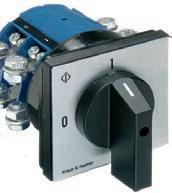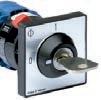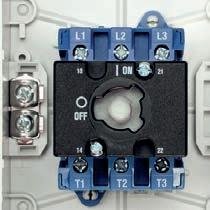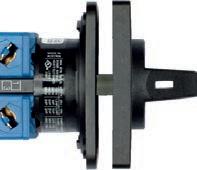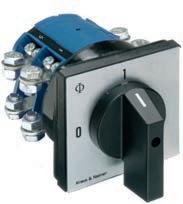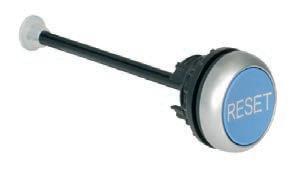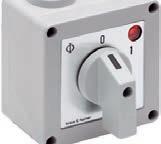
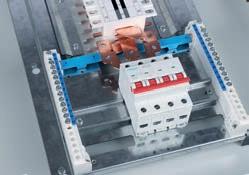





















With growing pressure to reduce energy use and meet tighter building regulations and financial budgets, choosing the right lighting control system is more important than ever. But many traditional systems are costly to install, complicated to commission and a headache to maintain.
Multiload Spectrum is different. Designed for smaller projects with electrical contractors in mind, it’s a practical and versatile lighting control system that uses standard wiring practices and modular components, making installation faster, simpler and more cost-effective. So, whether you’re fitting out a restaurant, upgrading a school, wiring a new build or delivering a commercial space, Multiload Spectrum helps you get the job done right – without overcomplicating the process.
Turn to page 12 for the full story.

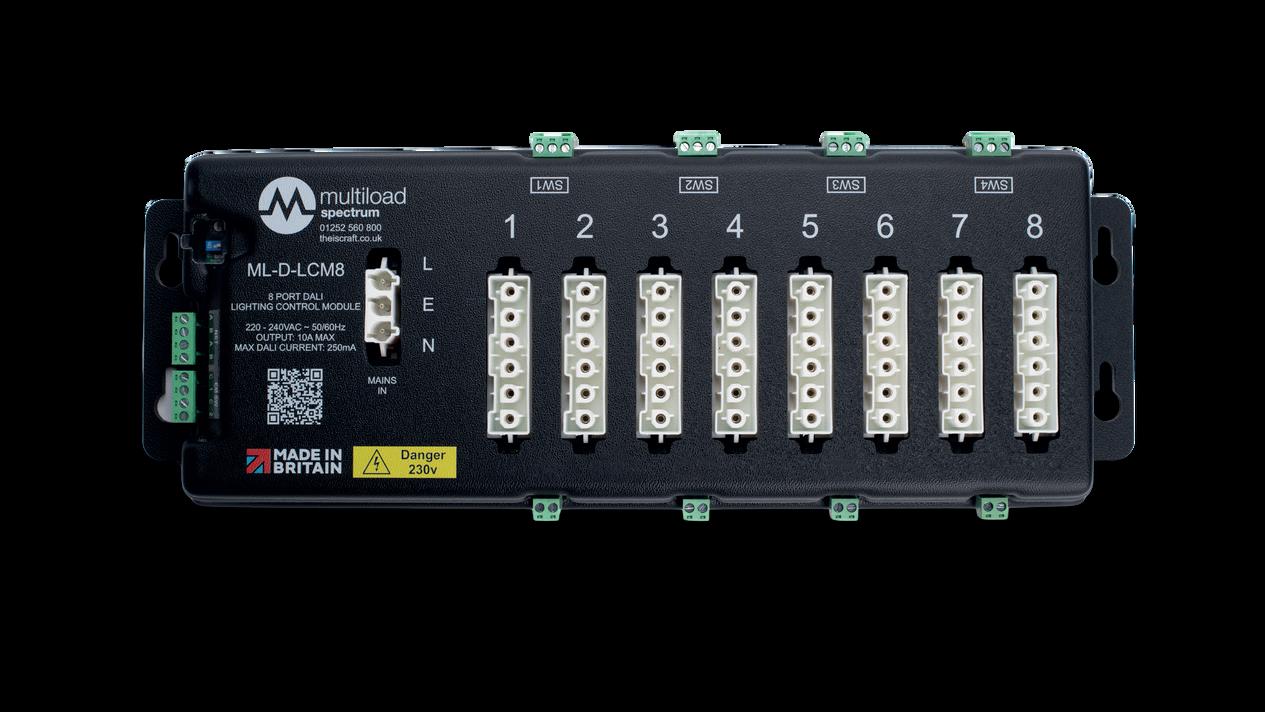
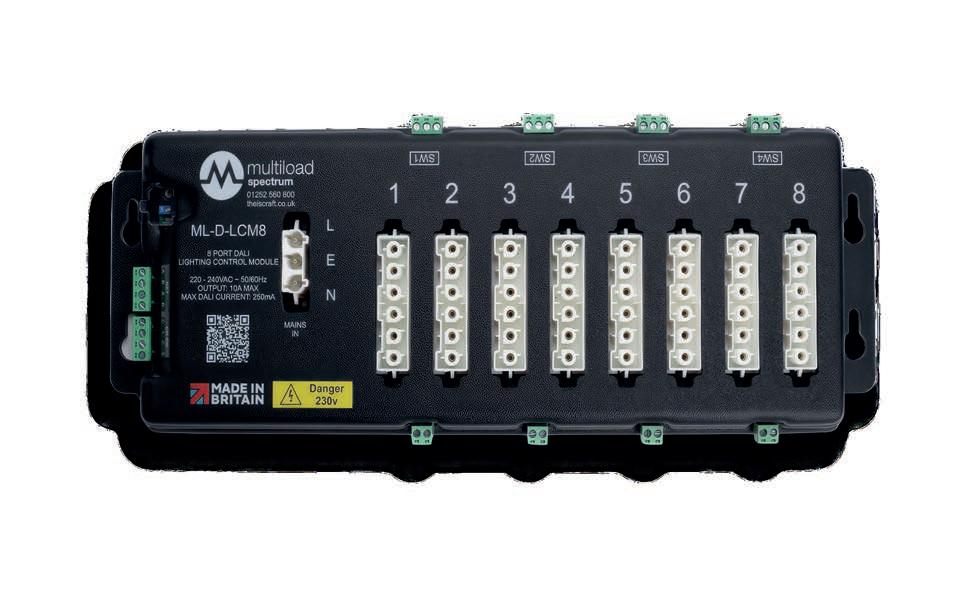

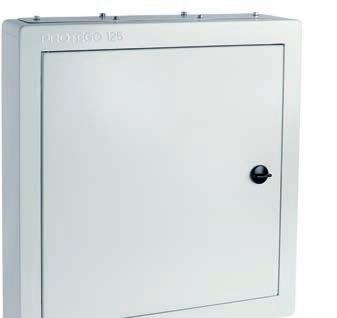
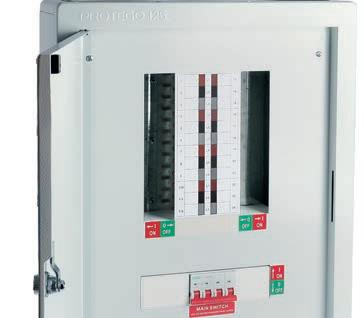







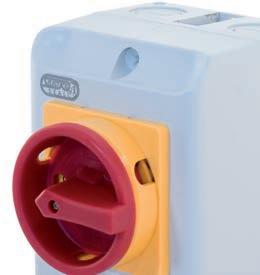




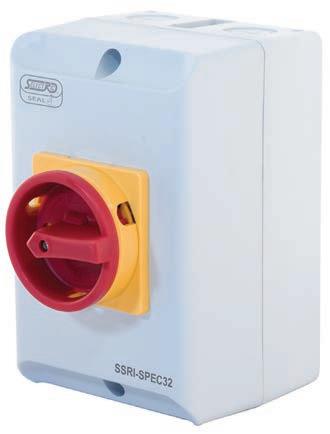


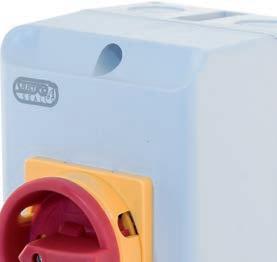
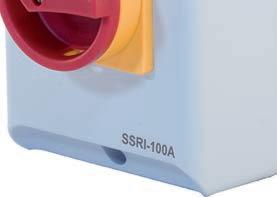




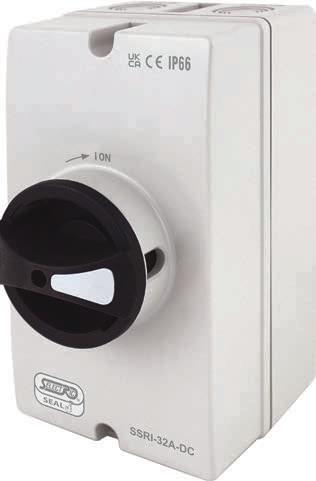

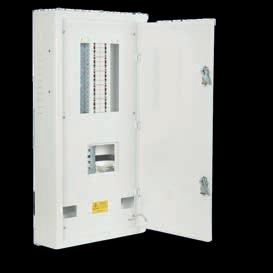


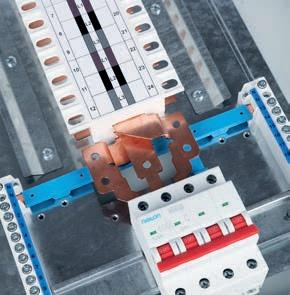
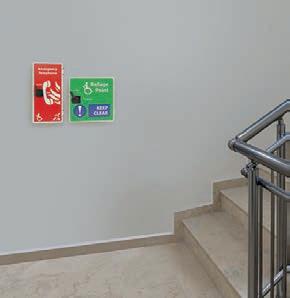
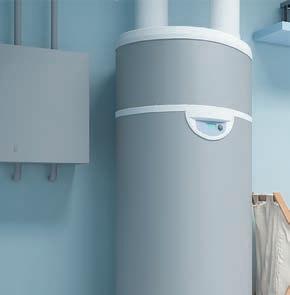


Hello and welcome to the May issue of ECN. The sun is starting to shine and as I write this it feels like summer is finally on the way!
In April, the Institution of Engineering and Technology (IET) released a comprehensive independent study on the costs of installing high voltage electricity transmission lines overground, underground and sub-sea. This report aims to inform the Government’s ambitious plans to upgrade Britain’s power grid, the largest since the 1960s.
A major increase in the transmission network’s capacity is essential to harness wind energy and meet growing electricity demand, leading to greener, more affordable power. The report details the costs of different technologies, such as overhead lines, underground cables and subsea solutions. For example, a 15km, 5000MW overhead line costs nearly £40m, while an underground cable costs around £330m.
Non-cost factors like visual and environmental impacts, sustainability and engineering challenges are also considered in the report. Underground cables, though less visually intrusive, are more expensive and viable only in certain terrains. This study provides crucial insights for the UK’s journey towards a net zero power grid.
Professor Andrew Lovett, member of the report’s Project Board and Professor of Geography at the University of East Anglia, says, “This situation is complex with no simple environmental choices. When deciding between underground cables, overhead lines or subsea cables off Britain’s coast, we must consider a complex range of impacts unique to each project. Each technology needs to be evaluated based on its specific context, including engineering challenges, local impacts and costs.”
This issue covers a range of topics including Circuit Protection & Switchgear; Fire, Safety & Security; HVAC; and Lighting Controls, so you’ll have plenty to read, hopefully in the May sunshine! Plus, catch up on all the latest industry news and don’t miss our interview with Mike Costain, Managing Director of InstallerSHOW organiser Lyrical Communications, where we discuss the show’s continued expansion into the electrical sector.
And don’t forget to enter our competition to be in with a chance of winning the ultimate Trade Tub bundle, courtesy of Unicrimp.
To be kept up to date on everything that is happening in your industry, please also follow us on your socials – you can find us on LinkedIn, Instagram, X and Facebook.
I hope you enjoy the issue – see you next month!
GROUP EDITOR: CARLY WELLER
T: 01634 673163
E: carly@allthingsmedialtd.com
DEPUTY EDITOR: SIMON ROWLEY
T: 01634 673163
E: simon@allthingsmedialtd.com
SALES DIRECTOR: KELLY BYNE
T: 01634 673163
E: kelly@allthingsmedialtd.com
STUDIO: MARK WELLER
T: 01634 673163
E: mark@allthingsmedialtd.com

CEO: DAVID KITCHENER
T: 01634 673163
E: david@allthingsmedialtd.com
MANAGING DIRECTOR: IAN KITCHENER
T: 01634 673163
E: ian@allthingsmedialtd.com
ACCOUNTS
T: 01634 673163
E: susan@allthingsmedialtd.com

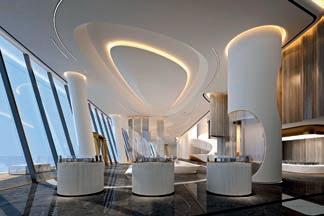

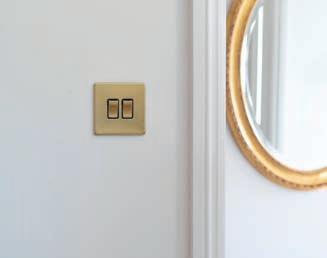



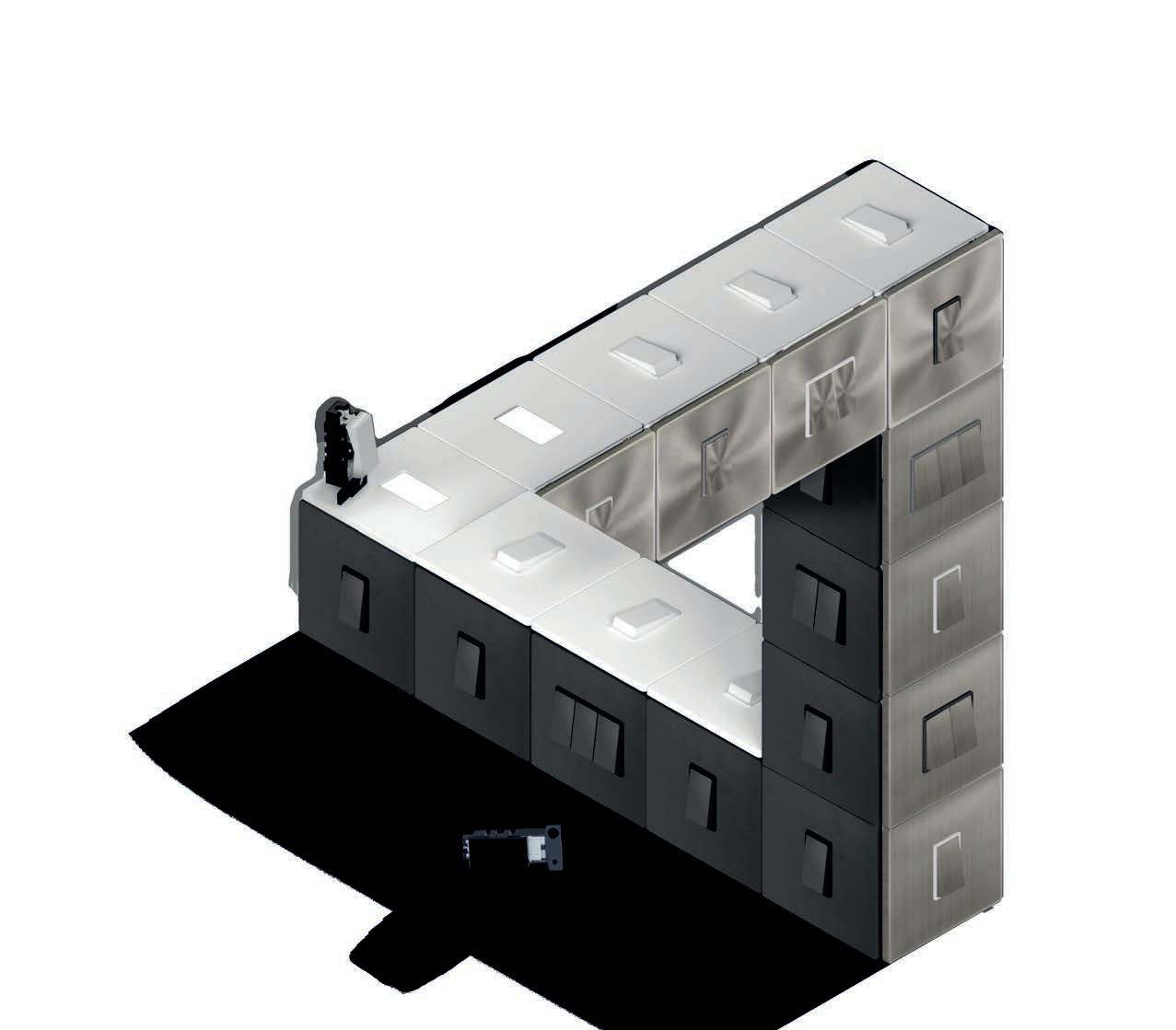
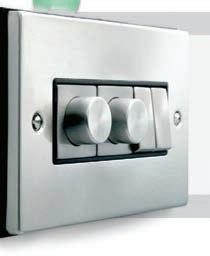

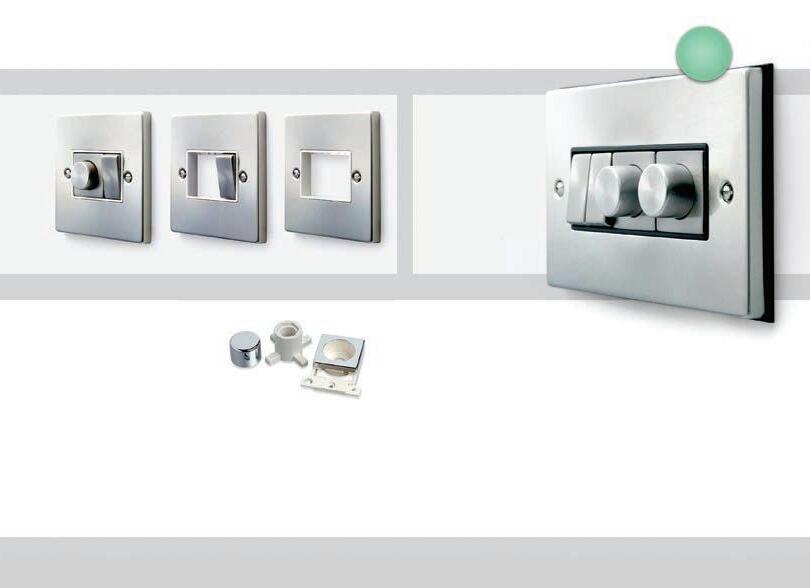


All Click switch plates are modular as standard. Our MiniGrid® range offers a vast variety of modules and endless combinations.
ECN has announced that Contactum will be joining the impressive sponsor line-up at the ECN Awards 2025. The company will sponsor the Drinks Reception at the event, which takes place on 27 November 2025 at the Heart of England Conference and Events Centre in Coventry.
Contactum says it is delighted to be sponsoring the Drinks Reception and is excited to network with industry peers and make new connections.
Sponsoring awards that celebrate the best of the electrical contracting industry aligns with Contactum’s values – supporting industry professionals and celebrating one another’s success and growth.
Dan Hewson, CEO of Contactum, says, “The ECN Awards are something that we look forward to every year. As a company who prides itself on innovation and quality, we at Contactum fully support celebrating the successes of the wider electrical profession, manufacturers, distributors and wholesalers, and obviously

contractors. We wish all entrants good luck for the evening and look forward to seeing you there.”
Each year the ECN Awards grows with momentum and helps showcase those in the electrical field who are trailblazing and making substantial efforts to improve the industry, including development of products, technology, services and career development. Over the last 12 months, Contactum has seen the launch of new innovative products to the industry that have brought functional solutions for distributors and wholesalers to stock, and ultimately for contractors to use in their work. Each product launch is born from the company’s commitment – Quality by Design.
Leading the charge in innovation, companies in the electrical contracting industry are dedicated to enhancing safety,

King’s Cross, in the heart of London, is set to become a living testbed for decarbonising heat this winter. UK Power Networks’ flagship project, Heatropolis, is using King’s Cross regeneration zone to create a sustainable blueprint for heating homes and buildings, using clean energy.
The innovation is being led by UK Power Networks, with partners including Metropolitan, Passiv UK and Guidehouse, each bringing critical expertise to drive the initiative forward this year.
The four-year project is exploring how heat distribution systems can be designed to optimise the ways heat and electricity networks work together. This will involve three winter trials (2025-2027) across three key building models: a low-density residential heat network, a multi-occupancy building, and a large mixed-use site, with King’s Cross serving as the benchmark for the latter.
With more households converting to electric heating, Heatropolis is finding solutions to manage additional demand on local electricity networks in the most cost-effective way. It aims to reduce the costs of connecting and operating electrical heat networks by using ‘flexibility’ to help manage peaks and troughs in supply and demand.
The potential carbon savings are significant, with an estimated 3,000 tonnes of CO2 emissions avoided through reduced electricity network reinforcement and a financial benefit of £70 million by 2050 from deferring or avoiding unnecessary grid upgrades.
UK Power Networks, ukpowernetworks.co.uk

efficiency and sustainability across all sectors, and it is vital to acknowledge their remarkable efforts and accomplishments.
If you believe your product, company or project is worthy of an ECN Award, we
encourage you to enter when entries open on 2 June 2025.
ECN Awards 2025, electricalcontractingnews.com
Leicester College has opened a new Green Technology Hub at its Freemen’s Park Campus. The Hub will enable construction students, staff and employers to gain hands-on, practical experience with the latest green technologies.
The new state-of-the-art green tech equipment in the Green Tech Hub includes air source heat pumps, solar panels, battery storage systems and EV charging stations.
The Green Technology Hub will support a range of Leicester College courses from Level 2 to Level 4, focused on renewables and green technology including:
• Climate Change and Greenhouse Gas Emissions
• Sustainability, Pollution and Waste Management
• Understanding Impacts of Industry and Organisations on the Natural Environment
• Energy Conservation and Efficient Buildings and Structures
• Renewable Energy
• Sustainable Energy Technologies
• Sustainable Energy and Renewables
Nick Allen, Construction Area Manager at Leicester College, says, “Green technology is already having and will continue to have an increasing impact on the UK construction sector. It’s vital that our students have access to this equipment, to learn how to use the technology and understand the impact it will have when they get into the workplace.
“The new Green Tech Hub will provide students with a strong foundation to learn more about these technologies and incorporate that knowledge into their future work with employers.”
Leicester College, leicestercollege.ac.uk
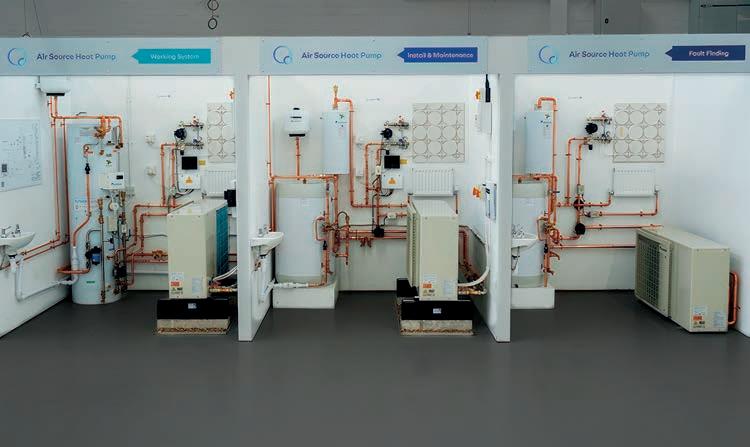


Over 700 prizes to win in our exclusive giveaway



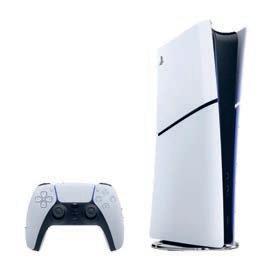

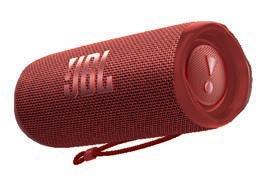











A growing number of companies across Europe and the US are strategically outsourcing solar equipment maintenance, driven by a critical shortage of specialised skills and resources within their organisations.
This trend, highlighted in a recent survey by Fluke Corporation, underscores the increasing challenge of building in-house expertise to support the rapidly evolving solar industry.
The survey, conducted by Censuswide on behalf of Fluke, reveals that 55% of OEMs, technicians and installers across the US, UK, Germany and Spain are outsourcing more than half of their solar maintenance activities. Notably, in the US and Spain, 54% of companies are strategically turning to external partners
for their solar maintenance, highlighting a widespread reliance on third-party expertise in the face of growing skill gaps. In Germany, this figure rises to 58%, while the UK reports 48%.
The Fluke survey highlights significant regional differences in the future outlook for solar maintenance, with Germany consistently leading as the largest outsourcer. Looking ahead, the trend of outsourcing maintenance is poised to accelerate, with 75% of companies across the surveyed countries planning to continue or expand external partnerships
While 72% of US companies expect to continue outsourcing in the coming years, nearly 90% of surveyed businesses in Spain and Germany are expected to be at the forefront of this trend. In contrast, the UK

lags behind, with just 58% of companies anticipating continued reliance on external providers, signalling a potential gap in the adoption of this strategic approach.
“This survey clearly exposes the global skill and resource gaps in solar maintenance, underscoring a critical challenge for the industry,”
says Alex Chillman, Fluke Vice President of Innovation.
“Outsourcing maintenance has become the norm, and our findings show that this trend is not only widespread but is set to continue as the preferred approach for the majority of companies.”
Fluke, fluke.com
City Plumbing has joined forces with VitoEnergy to launch a new heat pump installation umbrella scheme offering non-MCS (Microgeneration Certification Scheme) accredited installers a fully supported route to access government grants, plus added benefits, including trade account prices and financial flexibility.
Through the partnership, installers can operate under VitoEnergy’s MCS accreditation, which reduces paperwork while allowing their customers to qualify for the government’s Boiler Upgrade Scheme (BUS) grant. Going beyond accreditation, VitoEnergy offers a fully comprehensive support package, guiding installers through every stage of the process. From system design, heat loss calculations and free industry-leading software to DNO (Distribution Network Operator) applications, installers gain hands-on assistance to build confidence and develop their heat pump business.
A unique benefit of the partnership is that installers can buy materials from City Plumbing at their usual trade rates. Most umbrella schemes require installers to purchase materials directly from the scheme provider at marked-up prices. Instead, installers will have complete price transparency on materials and all costs, including the umbrella scheme fees, which can be placed on their City Plumbing credit account, giving installers up to 30 days to settle payments for better cash flow.
Currently, the MCS umbrella scheme is available through a select number of City Plumbing branches across the South of England up to the north Midlands. This selective rollout ensures that VitoEnergy’s team can provide in-person support where needed. City Plumbing, cityplumbing.co.uk
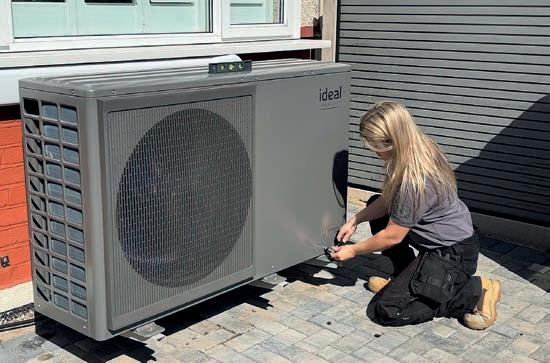
Freedom, part of NG Bailey, has been awarded a major contract worth around £130m by SSEN Distribution as part of its Large Capital Delivery Framework to upgrade the electricity network across the north of Scotland.
The contract will see Freedom carrying out projects across the Highlands and in Orkney, with work such as the renewal and reinforcement of SSEN’s network of wooden poles and overhead lines, upgrading and updating its substations and making improvements to the underground cable network.

All of the work being undertaken by Freedom and SSEN’s teams is designed to boost network resilience in the face of a more volatile climate, support the connection of low carbon technologies and decarbonised industries, and increase reliability for every customer. Freedom, ngbailey.com/freedom
Consumer safety charity, Electrical Safety First, has announced that entries are now open for its Safety Innovation Award 2025.
This annual award honours innovative projects and products that safeguard consumers from electrical hazards.
The Safety Innovation Award recognises and rewards outstanding ideas that help protect consumers from electrical dangers.

Projects or products do not need to be completed to enter; they can be in the development or prototype stage.
This award is a great opportunity to showcase an innovative project or product to retailers, manufacturers, distributors and the public.
The deadline for entries is Friday 29 August. The winner will be announced at Electrical Safety First’s annual Electrical Product Safety Conference on Thursday 16 October, where they will have a platform to discuss their innovation with a wide audience, spanning government bodies, influential industry figures and more. Shortlisted finalists will also be showcased at the conference. Electrical Safety First, electricalsafetyfirst.org.uk






UK councils are increasing investment in EV infrastructure by as much as 42% year on year, according to Freedom of Information (FOI) data released by Schneider Electric
Despite this investment, the same focus is not placed on monitoring charger performance and reliability, potentially leaving EV owners in a situation where they are met with chargers that are out of service.
The FOI data, which surveyed 67 councils across England, Scotland and Wales, also discovered that only 15% of councils could report that 100% of their EV chargers are operational. Over half (53.7%) are unable to monitor whether chargers
are working or not. The lowest reported fully operational charger percentage was 2.8% working in the last six months.
David Hall, Schneider Electric UK & Ireland’s VP Power Systems, says, “Whilst there’s a positive story that councils are investing in their EV charger infrastructure to meet the growing demand, it is clear that many councils could greatly benefit from the ability to track EV charger performance, detect faults or outages, and even enable remote repairs.
“Making sure councils have the right plan in place to plot the EV charging infrastructure will be essential for long term success.”
Schneider Electric, se.com
Kensa has completed a month-long charity challenge in support of National Energy Action, smashing its target and raising thousands to help households struggling with fuel poverty.
Throughout February, Kensa employees across the UK took part in a collective movement challenge to raise awareness and funds for fuel poverty charity, National Energy Action (NEA).
The aim was to cover 6,000km, representing the more than six million people living in fuel poverty across the UK, through walking, running, swimming and cycling. Not only did they achieve this, but they surpassed it. In total, Kensa employees covered a whopping 7,162km, raising vital funds in the process. Kensa match-funded the donations, making the final total raised £7,492.
These vital funds will support NEA’s work and help vulnerable households stay warm as energy bills continue to rise. This includes providing life-changing energy advice, delivering Winter Warmth Support Packs to families in need, funding emergency fuel vouchers and supporting community outreach programmes that aim to reduce fuel poverty in some of the hardest-hit areas across the UK. Kensa, kensa.co.uk

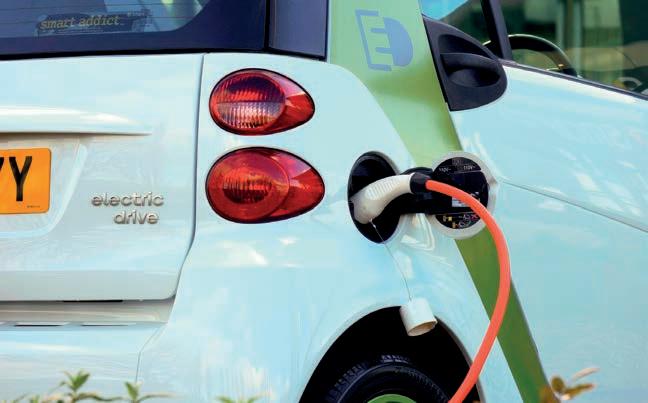
In a new trial, UK Power Networks is exploring how heat pump technology not only keeps people warm, but how it can also enhance the nation’s energy grid.
This is the vision behind HeatNet, a project harnessing the power of smart technology to optimise heat pump operation as the UK works to reduce carbon emissions. By leveraging AI and machine learning to coordinate and adjust heat pump usage, HeatNet is transforming how the nation manages the growing demand for electricity, flexing energy usage without impacting customers. The innovation is being developed in collaboration with Passiv and independent experts from Imperial College via Imperial Consultants.
Building on over a decade of research in heat pump optimisation, HeatNet aims to ensure that heat pumps operate efficiently without compromising people’s comfort or requiring unnecessary infrastructure upgrades.
The project will also explore innovative ways to reward consumers for their involvement in supporting the grid. This could include direct payments for allowing their heat
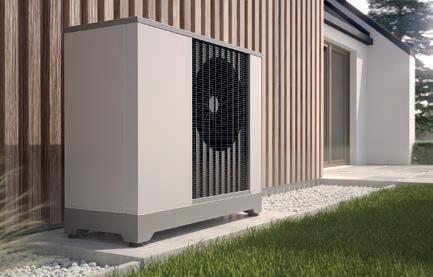
UK
Over 100,000 EV charge points are available to drivers in the UK, according to Octopus Electroverse’s new Charging Infrastructure Insights report.
UK drivers are finding it easier to charge on the road, the report says, with one new public charger installed every 13 minutes in the last six months.
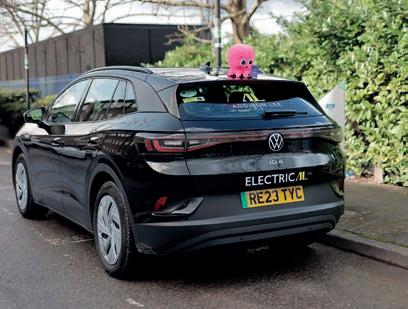
Rapid and ultra-rapid chargers are being rolled out the quickest, and now make up nearly a quarter (24%) of all public charge points.
The landmark figure was revealed just days after the government confirmed the ban on new petrol and diesel car sales by 2030. It is targeting 300,000 public chargers to be installed in the UK by the same year.
The rapid rollout of public chargers stands in stark contrast to the declining number of petrol stations, with around 8,300 available across the country today.
Octopus Electroverse, electroverse.com

ukpowernetworks.co.uk
NICEIC has announced the appointment of Technical Training Developer, Mitchel Smith, as the new WorldSkills UK Training Manager for Electrical Installation. This role will see Mitchel leading the training and development of competitors in the Electrical Installation category for WorldSkills.
nLighten has announced the appointment of Justin Nesbitt as Managing Director of nLighten UK. The appointment follows the planned departure of John Hall, current Managing Director and one of the original co-founders of Proximity Data Centres.
CU Phosco has announced key leadership changes. Effective immediately, Philip Marques will work alongside Nicolas Marques in his new role of Managing Director, with Nicholas taking on the role of Chairman.

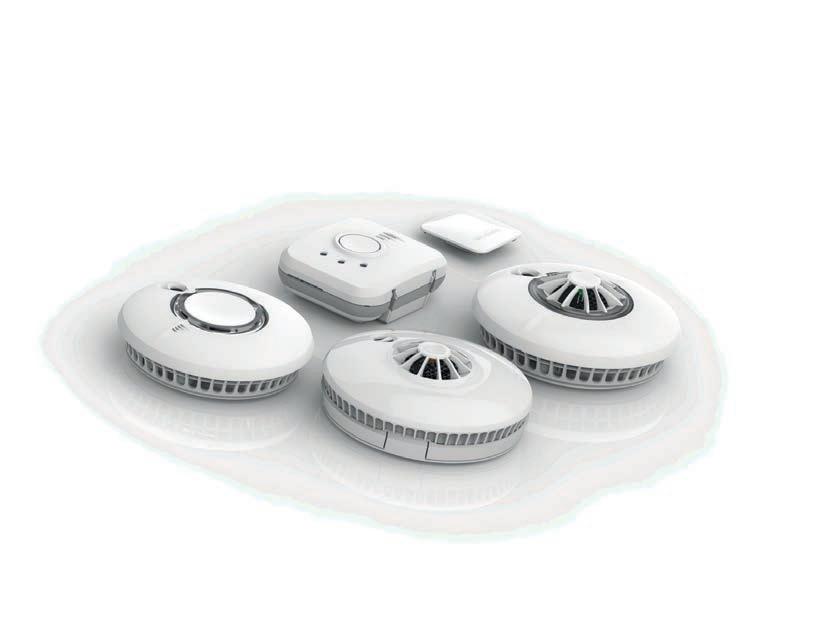


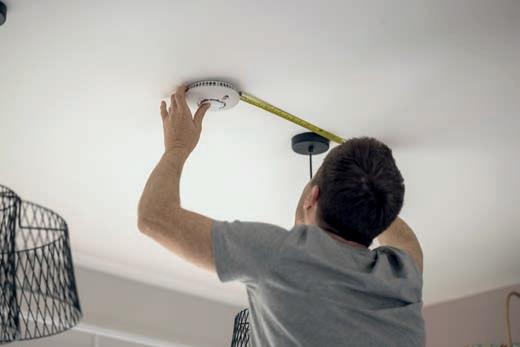


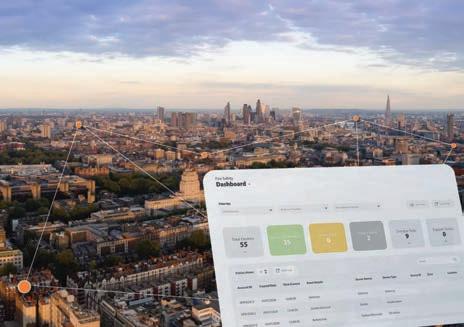
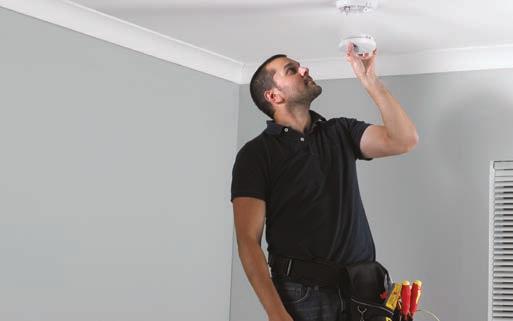
TheisCraft has introduced Multiload Spectrum, a cost-effective lighting control system designed for small to mid-sized projects.
TheisCraft’s Sales Director, Mark Willmott, tells us more.

Multiload Spectrum is a streamlined, cost-effective lighting control system designed specifically for small to mid-sized projects such as residential spaces, offices, schools and restaurants. It simplifies installation, putting the electrical contractor back in control because the system is configured using a Hex Rotary Switch and a Broadcast or Group Mode Selector. This means less time on-site for installers and a system that end-users can easily manage. No need for commissioning engineers.
Large commercial lighting control systems come with high costs and complex maintenance requirements – often overkill for smaller projects. TheisCraft designed Multiload Spectrum to fill the gap for electricians and contractors who need a flexible, easy-to-install solution and who don’t want the hassle of commissioning. It’s designed so that end users can make adjustments without calling in an engineer, reducing long-term costs for clients.
The system reduces energy waste by automatically dimming or switching off lights in unoccupied spaces. Its daylight sensing feature adjusts artificial lighting based on natural light levels, ensuring optimal efficiency – ideal for businesses aiming to cut costs and meet energy regulations.
Multiload Spectrum operates on standard 230V wiring but utilises DALI for communication. All Spectrum devices connect using a two-core Ebus cable, meaning you’ll need less cabling compared to traditional systems. This saves installation time and material costs, making it a practical choice for contractors.
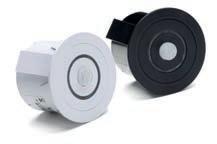
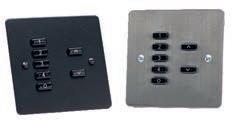
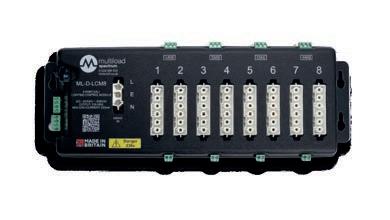

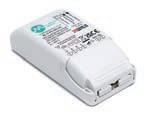
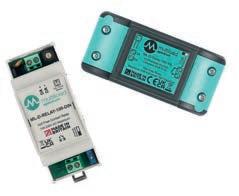

Each product has a Hex Rotary Switch and the Broadcast or Group Mode Selector, so you can configure the system when you install. Broadcast Mode is where all devices work in unison, so it is perfect for areas that require uniform lighting control. Group Mode allows the devices to operate individually or within defined groups. Using the Hex Rotary Switch enables you to assign 16 defined groups and each device to a particular group. This means you can create tailored lighting zones, which is great for a kitchen/diner or office space.
Can I use the products individually?
Yes, the products are really versatile and can be used either as standalone devices or as part of a lighting control system. The Phase Dimmer, DALI Relay, DALI PSU and ColourDIM Rotaries are all very popular!
Maintenance teams or end-users can easily replace components as needed. If a space’s layout or lighting needs to change, the system can be reconfigured on-site using the rotary pot, without requiring specialist tools or software.
Where can electricians and designers learn more?
Visit multiloadspectrum.co.uk or call 01252 560800 to discuss your projects.
TheisCraft, theiscraft.co.uk




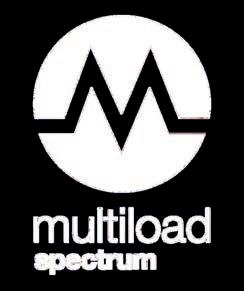
Lighting Control Made Simple cost effective – no commissioning – maintenance free
Why Choose Spectrum for Lighting Control?





Quick & Easy Installation – Runs on conventional wiring. We use the DALI protocol to send the messages.
Easy Configuration - At the heart of its unique design are the Hex Rotary Switch and the Broadcast or Group Mode Selector.
Energy Saving – Sensors adjust lighting based on occupancy and daylight.
Simple Controls – Scene plates or rotary dimmers give users full control.
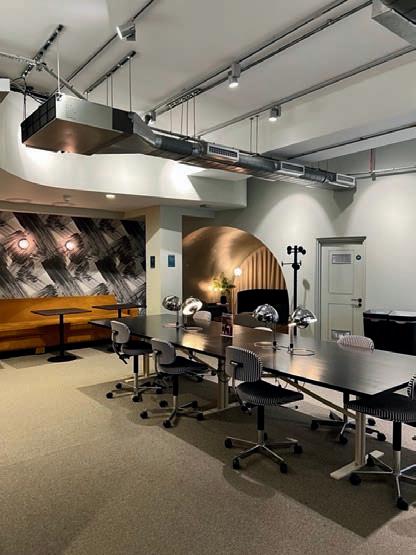
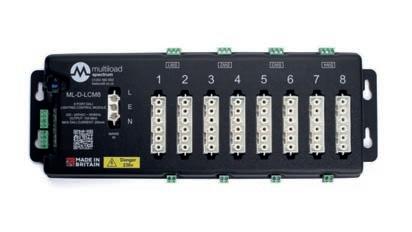
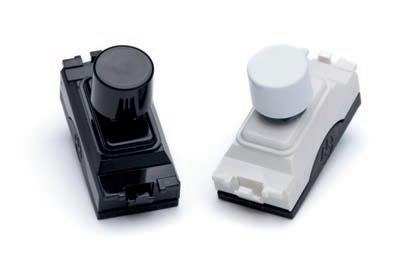

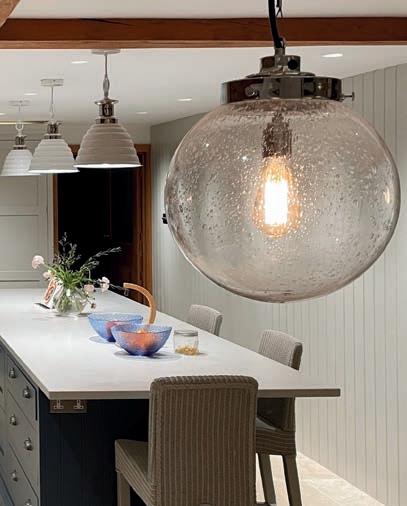

The on-site parking for guests visiting Pantglas Hall holiday resort in Carmarthenshire has been upgraded thanks to Sync Energy . Three dual socketed EV chargers have been installed in the communal car parks, servicing the 27 holiday lodges and main hall building.
The historical Pantglas Hall Estate is now home to a resort of self-service holiday lodges, restaurant, café and leisure complex with indoor and outdoor sports facilities. With an increase in requests for electric vehicle charging facilities, Pantglas Hall staff employed commercial property maintenance specialist, Nest Group, to research the best EV charging options for the estate.
Pantglas Hall required three floor mounted, dual socketed units with a payment terminal, that also looked
sleek and were easy to use. Nest Group suggested Sync Energy’s Pro Charger –Twin Floor Mounted EV Charger with Light.
Combining advanced technology with ease of installation and user-friendly operation, the Pro Charger range is perfect for commercial use. It features a professionally designed luminaire head, intuitive touchscreens, 4G, RFID and contactless payment options for seamless functionality.
Anna Thomas, Manager of Pantglas Hall, says, “As an increasing number of guests who use our facilities travel here in electric vehicles, we are now happy to be able to offer EV charging services in our on-site car parks.
“The Sync Energy chargers have delivered exactly what we wanted, and we’ve already had great feedback from guests who have taken advantage of this new amenity.”
Sync Energy, sync.energy
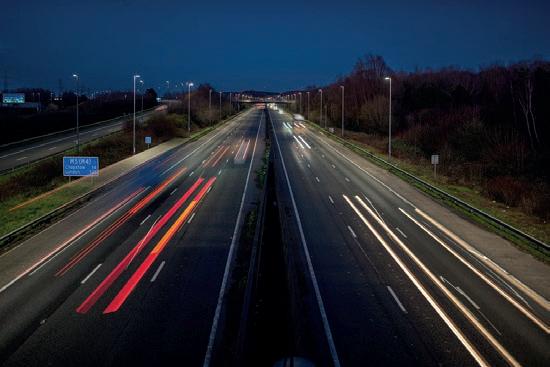
CU Phosco, in partnership with Mway Comms, has successfully upgraded the lighting along the M49 link road, replacing outdated SON lighting with advanced P862 LED luminaires.
This project, initiated by National Highways, is part of a £126m nationwide project aimed at significantly improving energy efficiency and safety, and greatly decreasing the CO2 footprint of the road lighting in accordance with the current National Highways drive lower CO2 emissions.
Unique in that it is only accessible from other motorways, the M49 motorway is a critical route in England, linking the M4 (J22) with the M5 (J18A). Due to its importance in facilitating regional travel, National Highways sought to modernise the road’s lighting to reduce maintenance costs and improve energy efficiency.
This project, spanning the five-mile stretch between the M4 and M5, aimed to replace ageing SON lighting with modern, energy-efficient alternatives.
CU Phosco worked closely with National Highways and Mway Comms to deliver a solution to optimise safety and efficiency along the M49. A total of 255 P862 LED luminaires with ANSI Nema sockets to accommodate the Lucy Zodion CMS were installed, replacing the outdated SON stock. The P862 luminaire was chosen for its ability to meet National Highways’ strict specifications and was supplied with safety Tether kits.
The P862’s dark sky certification ensures minimal light pollution, while its lightweight design and low wind profile make it ideal for installation on existing lighting columns. This project utilised various outputs and bespoke hybrid optics to complement its future-proof design, offering an optimal balance of efficiency, longevity and performance.
The new LED lighting system significantly enhanced visibility and safety along the M49 while also delivering substantial energy savings, helping to align with National Highways’ sustainability goals. CU Phosco, cuphosco.com
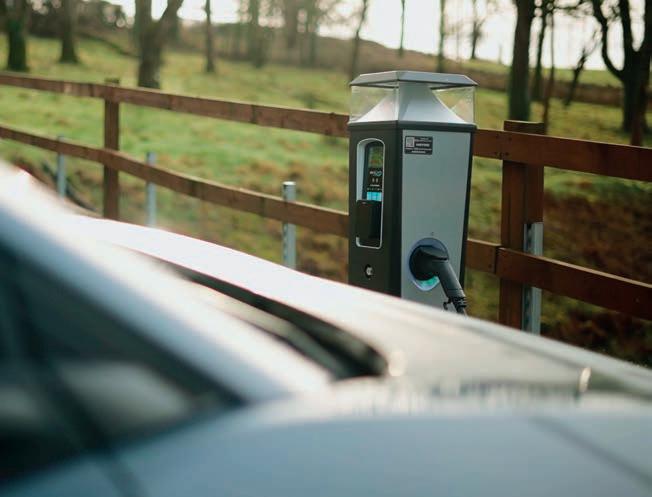
Pupils and teachers at Marshland Primary Academy in Moorends, near Doncaster, part of Venn Academy Trust, are celebrating cutting their carbon footprint after successfully installing a modern ground source heat pump system and other state-of-the-art energy efficiency measures.
Working with Kensa, the school is trailblazing how to go green, overhauling its old heating and hot water system and replacing the ageing gas boilers with seven new ground source heat pumps.
The six-month project, partially funded by the Government’s Condition Improvement Fund, also included fitting new radiators and 69 solar PVT panels, an emerging technology used in renewable heating installations. The upgrades are expected to boost the school’s energy efficiency, cut heating-related carbon emissions by close to 80%, and ensure classrooms stay warm and comfortable throughout the year for the benefit of staff and pupils alike.
The newly installed ground source heat pumps use renewable energy stored in the earth to provide heating and hot water and are hidden inside two converted plant rooms. To reach the underground energy, 18 boreholes were drilled beneath the school’s playing field, each to a depth of around 127m.
Solar PVT has been integrated into the school’s ground source heating system, taking it beyond a standard ground source heat pump installation. The technology generates both electricity and thermal energy, supercharging the heat pump’s efficiency and lowering installation and energy costs.
Investing in energy efficiency upgrades has provided the school with a low-cost, low-maintenance, renewable heating system, securing its energy future while providing long-term savings on heating and hot water bills.
Kensa, kensa.co.uk





Blists Hill Victorian Town museum in the Ironbridge Gorge now benefits from a comprehensive Advanced fire protection system designed to improve safety, simplify management and provide real-time insights across its expansive historical site.
At Blists Hill Victorian Town, visitors travel back in time to the year 1900 as they wander through streets of historic buildings, visiting traditional shops, exploring industrial sites and seeing Victorian-style homes. Preserving this historical charm required a modern fire safety solution that could operate across the sprawling, complex site.
The existing fire alarm system was due for renewal and the Trust was looking for something with better functionality. The site now features seven separate Advanced MxPro 5 panels which are connected to the AdvancedLive smart monitoring and management platform. This allows the independent panels to be unified into a single, cohesive
interface, creating a virtual network for the fire system. This approach eliminates the need for additional hardware like separate BMS interfaces or modules, making the solution cost effective and simple to install. By making the fire system status available anytime, anywhere via any internet-enabled device, AdvancedLive provides the site’s security and facilities teams with seamless, centralised management to suit their location and schedule.
Designed with end users in mind, AdvancedLive allows non-specialist staff to monitor fire system status through an intuitive interface that features a choice of map or list views. Real-time notifications alert the team to fires, faults, or device disablements, enabling them to act quickly, even when off site. This easy-to-use system empowers the Blists Hill team to maintain safety standards without requiring in-depth fire system training, saving both time and resources.

Much of Bath’s Georgian architecture and picturesque landscapes have provided backdrops for several cinematic masterpieces and TV shows. This added to the importance of preserving heritage charm in Bath and North Somerset’s latest LED lighting upgrade at the iconic Gravel Walk.
Gravel Walk is one of Bath’s most famous walks and was identified as a location for transitioning the existing SON and SOX lanterns to LED lighting as part of a wider upgrade scheme.
To help the council maintain the heritage charm of this iconic location, Acrospire suggested replacing the existing SON and SOX lamps with its budget-friendly 3,000K Streetcare heritage lanterns.
The luminaires were specified with leaf embellishments to give a classic look fitting to the city’s Georgian architecture and scenic surroundings.
Crafted using locally sourced materials in the UK, Streetcare offers exceptional quality and durability and contributes to a reduced carbon footprint.
Stephen Burrell, Principal Engineer Street Lighting at Bath and North East Somerset Council, comments, “Streetcare helped us transition to LED in the most affordable way. The luminaires ticked many of our boxes, providing efficient performance, styling that befitted the area, and responsibly sourced materials. They look as if they have always been there.”
Acrospire, acrospire.co

scalability ensures it will continue to support the site’s evolving needs, providing the ability to integrate
Freedom, part of NG Bailey, has been awarded a major contract worth around £130m by Scottish and Southern Electricity Networks (SSEN) Distribution as part of its Large Capital Delivery Framework across the north of Scotland.
The contract will see Freedom carrying out projects across the Highlands and in Orkney, with work such as the renewal and reinforcement of SSEN’s network of wooden poles and overhead lines, upgrading and updating its substations and making improvements to the underground cable network.
All of the work being undertaken by Freedom and SSEN’s teams is designed to boost network resilience in the face of a more volatile climate, support the connection of low carbon
Advanced, advancedco.com
technologies and decarbonised industries, and increase reliability for every customer.
Carl Clay, Managing Director, Freedom, says, “We are delighted to have been awarded the contract to assist SSEN in upgrading the electrical infrastructure across the Highlands and in Orkney. This partnership underscores Freedom’s commitment to delivering innovative, high-quality and sustainable solutions that support critical infrastructure projects.
“By working closely with SSEN, we aim to bring our expertise, agility and collaborative approach to ensure the successful delivery of projects that drive energy resilience and support the communities they serve.”
Freedom, ngbailey.com/freedom



The new dedicated area for electrical professionals will run alongside the popular InstallerTRADES tools and workwear feature in Hall 3A.
• Connect with 800+ top brands
• Get hands on with the latest products
• Join live content sessions in the new
• Be the first to see product launches
• Network with your industry peers
• Join us for the InstallerSOCIAL
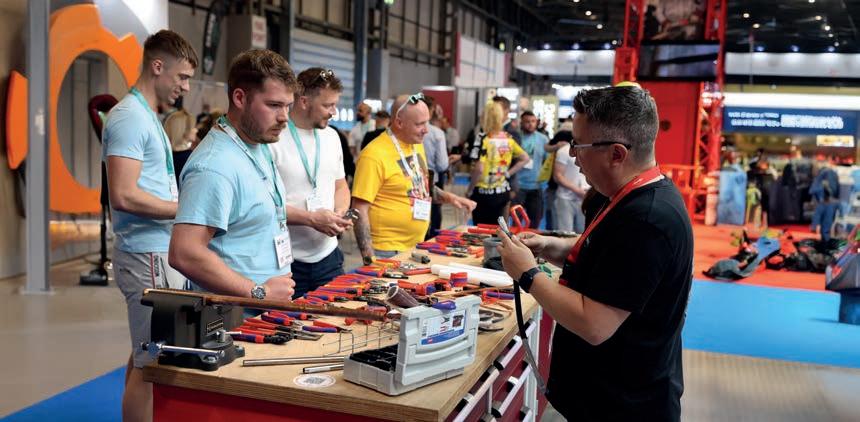

To register for your FREE ticket, including FREE parking, scan the QR code today!
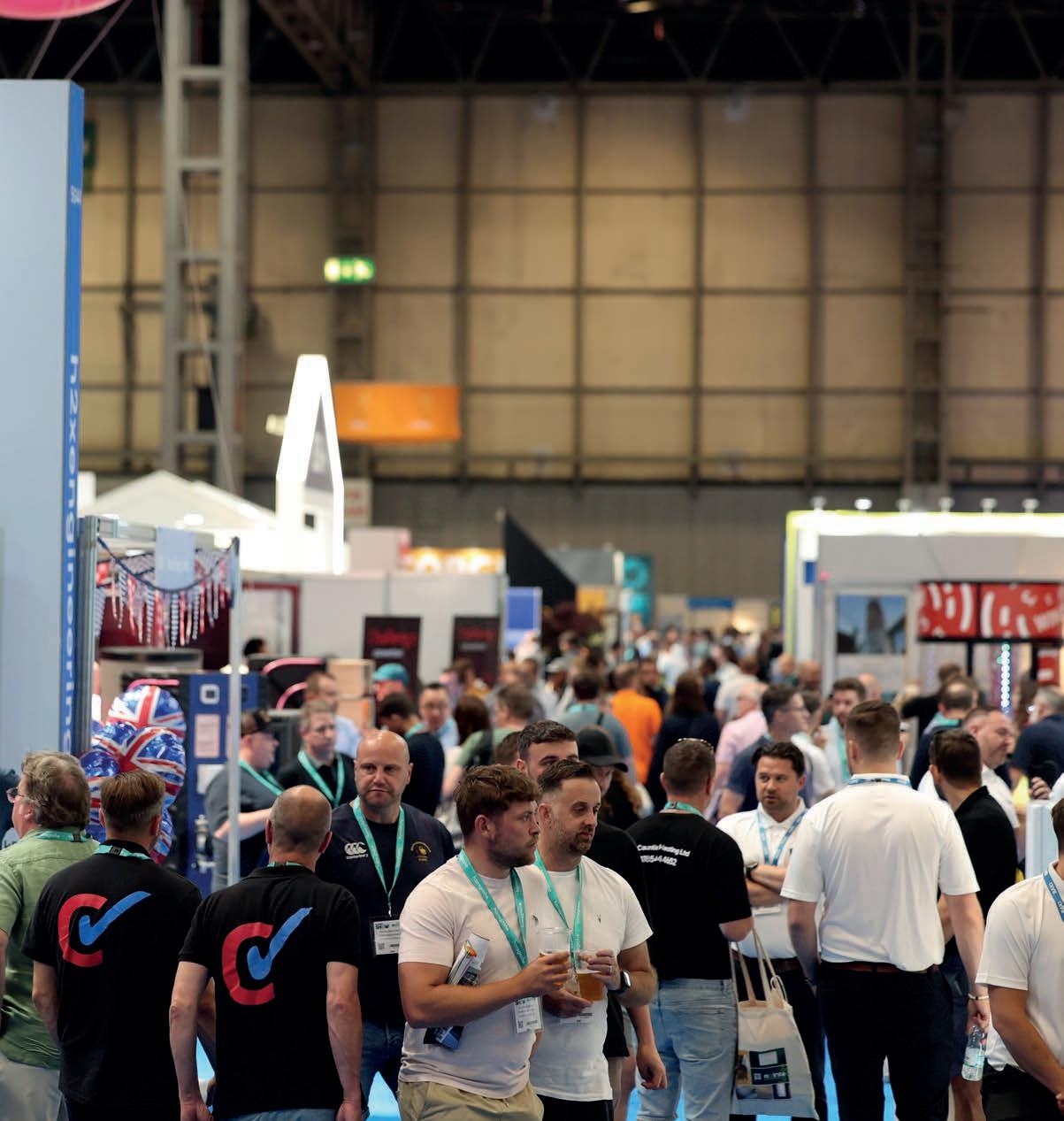
24-26 June 25
NEC Birmingham
With the rise of smart home technology, electricians are presented with a unique opportunity to expand their skillsets and meet the evolving demands of clients. Learning to install smart homes is not just a trend; it is an essential step for electricians who aspire to remain competitive and relevant in their field. In this article, JUNG UK explores the reasons why mastering smart home installation is crucial for electricians who want to increase their skillset and earning potential in a rapidly evolving industry.
The smart home market is experiencing exponential growth. According to industry reports, the UK smart home market size is estimated at £8.45 billion in 2025 and is expected to reach £13.7 billion by 2030. This surge in demand presents a golden opportunity for electricians to diversify their offerings. Homeowners are increasingly seeking solutions that enhance convenience, security and energy efficiency. By learning to install smart home systems, electricians can position themselves as valuable assets to clients who desire these modern solutions.
In an industry where skills can quickly become outdated, continuous learning is critical. JUNG’s training programmes provide electricians with the technical expertise needed to install and maintain smart home systems effectively. Through hands-on training and comprehensive product knowledge, electricians can gain confidence in their abilities.
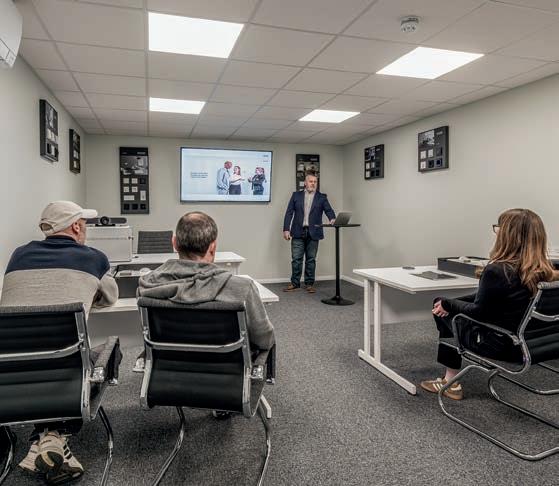
Developing new skills is something that happens on the job. Situational learning is a key part of any career and of any trade. Similarly, e-learning can be an accessible approach to gaining new knowledge. But it’s important to be able to step away from site and to spend dedicated time in an environment that is designed specifically for you to learn without distraction.
Bespoke training centres like JUNG’s Training Centre in Welwyn Garden City have been set up with electrical contractors in mind. Training is always done in small groups with a mixture of practical and online tasks.
Electricians who are proficient in smart home installations can significantly boost their business prospects. As more homeowners seek to upgrade their living spaces with smart technology, electricians who can offer these services will find themselves in high demand. This not only leads to increased job opportunities but also allows electricians to command higher rates for specialised services. Clients are more likely to trust professionals who have been trained and certified by a recognised industry leader and can stay up to date with developments across the industry.
As the smart home industry continues to expand, electricians who do not adapt risk falling behind. Competitors who invest in learning and adopting new technologies will attract more customers and secure more contracts. By choosing to invest in training, electricians are investing in themselves to stay ahead of the curve, ensuring they are not only knowledgeable about current technologies but are also prepared for future trends.
Advancements in smart home integration, such as voice-controlled systems and AI-driven automation, are becoming more prevalent. Electricians trained in these areas will be better equipped to meet the needs of tech-savvy clients, thereby solidifying their position in the market.
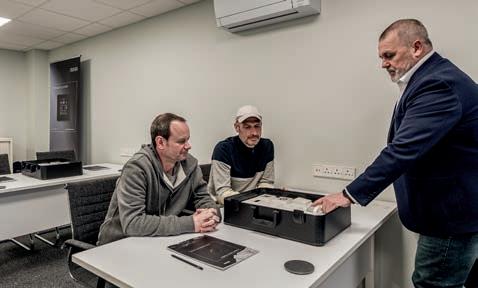
Smart home installations often lead to ongoing relationships between electricians and clients. Once a smart home system is installed, clients may require regular maintenance, upgrades and troubleshooting. Electricians who are knowledgeable about these systems can provide ongoing support, ensuring long-term client satisfaction and loyalty. Additionally, satisfied clients are more likely to refer electricians to their friends and family, leading to more business opportunities. By mastering smart home installations, electricians can create a network of loyal customers who appreciate their expertise and service.
For instance, the JUNG HOME product by JUNG is a solution that uses a simple Bluetooth Mesh system on a conventional 230V installation to create a smart home controlled with design-led switches. Electricians equipped with knowledge of these systems can tap into a lucrative market that not only increases their service offerings but also enhances customer satisfaction.
As the demand continues to rise, electricians who invest in their training will position themselves as leaders in the industry. By embracing these advancements, electricians can not only meet the evolving needs of their clients but also secure a prosperous future in a rapidly changing market. The time to act is now – equip yourself with the skills needed to thrive in the smart home revolution.
JUNG UK, jung-group.com



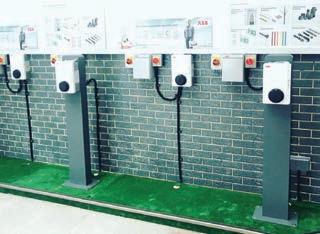
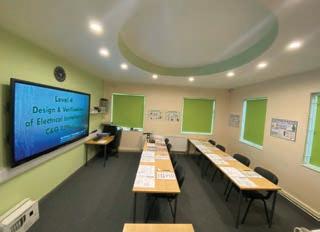
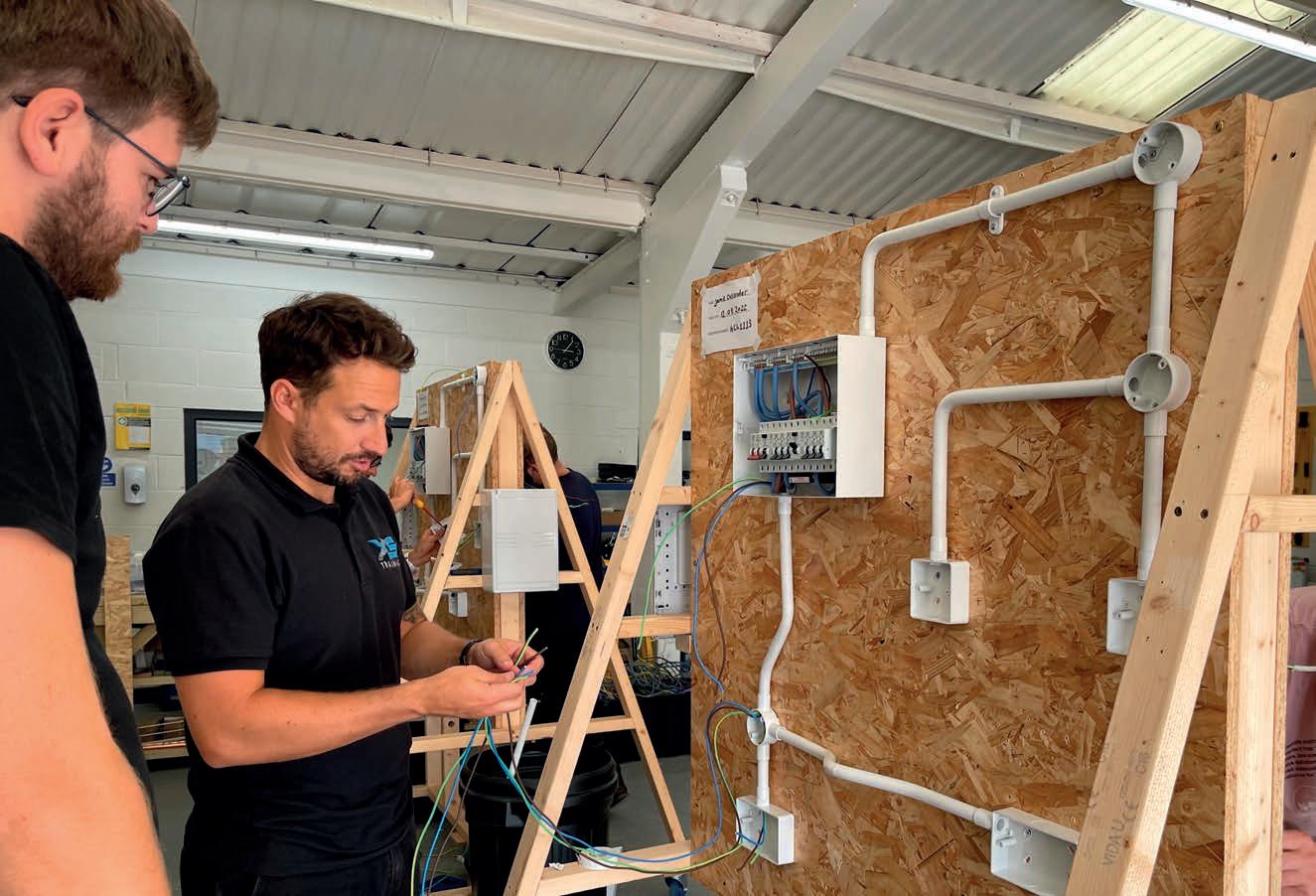



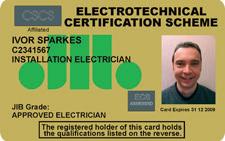
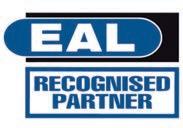


Steven Hallmark, B2B News Editor at Smoking Gun PR agency, explains how businesses need to stand up to stand out – especially in times of economic uncertainty.

Contractors, manufacturers and specifiers all face different challenges, but there are some uphill struggles that are familiar to all of those sectors.
There are more than two million businesses in the UK competing for attention – and the way to get that is by creating meaningful, distinctive communication.
Today’s successful B2B strategies recognise a fundamental truth: communication is about telling a story, one which lands emotionally to build memories.
This means moving beyond product-centric narratives to explore the broader context, challenges and innovations driving the electrical contracting industry.
Whether discussing the latest in sustainable solutions, smart building integration or compliance with evolving regulations, successful marketers understand that effective communication contextualises their expertise within the wider industry landscape.
The most effective communicators in the sector are those who can put their heads above the parapet and offer fresh perspectives on industry-wide issues. For electrical contractors, this might mean showcasing your innovative approaches to energy efficiency or highlighting your specialist knowledge in emerging technologies.
Whether you’re a regional electrical contractor, a manufacturer of solar panels or a national specifier, your communication should reflect the specific expertise and vision that sets you apart. It should be brave, not beige, and your voice should inspire, not send audiences to sleep.
Marketing directors do a great job of finding the right mix for their messaging but can sometimes overlook the power that comes with strong storytelling and earned media coverage from effective PR.
That brand-building is the foundation on which your response-led advertising sits. Without that compelling, authentic, trusted message, your advertising is not going to get the cut-through that you need.
When a respected publication such as ECN talks about your brand, it carries significantly more weight, as that third-party endorsement helps build genuine trust with potential customers.
PR also gives you the opportunity to deliver deeper storytelling. It allows brands to tell more nuanced, comprehensive stories about their mission, values and impact. For electrical contractors, this might include highlighting your commitment to sustainable practices, your

investment in upskilling your workforce or your innovative approaches to complex installation challenges.
PR can create in-depth narratives that resonate emotionally with audiences. This storytelling approach helps establish a more meaningful connection with potential clients beyond simple service promotion. It does this in a targeted and cost-effective way.
The best approach is long-term brand building with PR that contributes to long-term brand reputation and recognition.
Consistent positive media coverage, thought leadership articles and strategic communications help establish an electrical contracting firm as an industry leader. This sustained presence builds brand equity over time, creating a lasting impression.
This is particularly true in times of economic slowdown or recession, which the electrical contracting sector has weathered numerous times.
Consistent communication during tough times builds credibility and trust with customers, who remember brands that stayed engaged during downturns. Strong communication also helps to retain existing clients – typically more cost-effective than acquiring new ones during recovery.
It has been shown that brands that maintain visibility during downturns tend to recover faster and emerge stronger when economic conditions improve.
For electrical contractors, maintaining communication during these periods can mean the difference between emerging as an industry leader or being forgotten when project pipelines begin to flow again.

Another key element for marketing heads in electrical contracting firms is being able to measure the success of your work.
The best PR agencies will focus on effective measurement as it has become a critical component of effective B2B communication. Modern strategies must leverage data to provide actionable insights and demonstrate tangible business impacts – whether that’s increased tender opportunities, improved conversion rates or enhanced relationships with specifiers.
For electrical contractors, effective communication should highlight technical expertise while simultaneously demonstrating an understanding of the wider built environment challenges. It should showcase how your solutions contribute to better buildings, more sustainable operations and enhanced performance for end-users.
As the sector continues to evolve with technological advancements and increasing focus on net zero goals, communication strategies must become more sophisticated, data-driven and human-centric. Success will belong to those who can effectively articulate their unique value, demonstrate genuine innovation and connect with stakeholders on a meaningful level.
The future of B2B communication is not about speaking louder, but speaking more intelligently – with clarity, precision and genuine insight. For electrical businesses looking to thrive in an increasingly competitive marketplace, this approach to communication isn’t just desirable – it’s essential.
Smoking Gun, smokinggun.agency

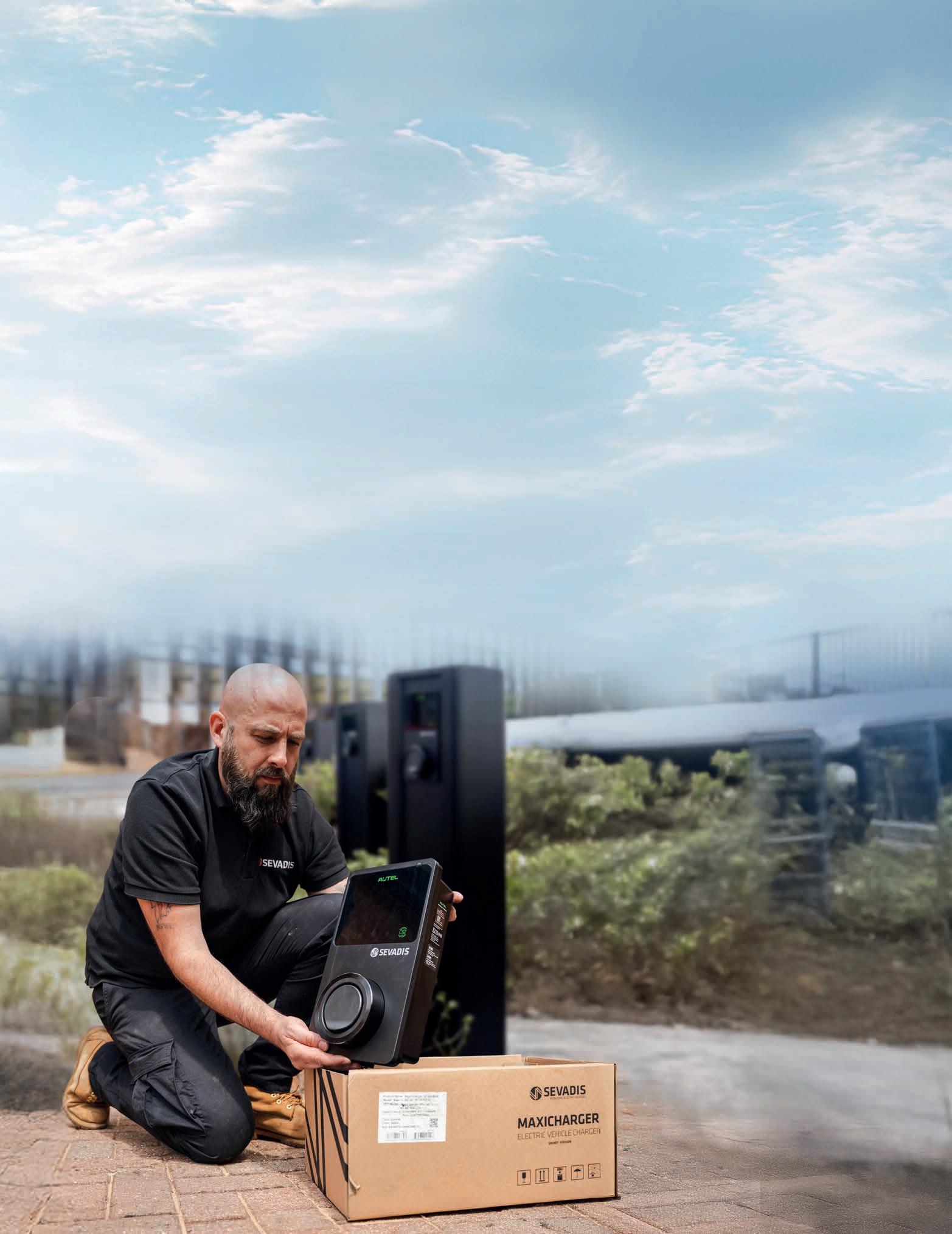
Half day in person course
• Practical, hands-on learning with charge points
• Commercial EVCP installations focus
• Hardware installation & software configuration
• Load balancing and connectivity
• Back-office management
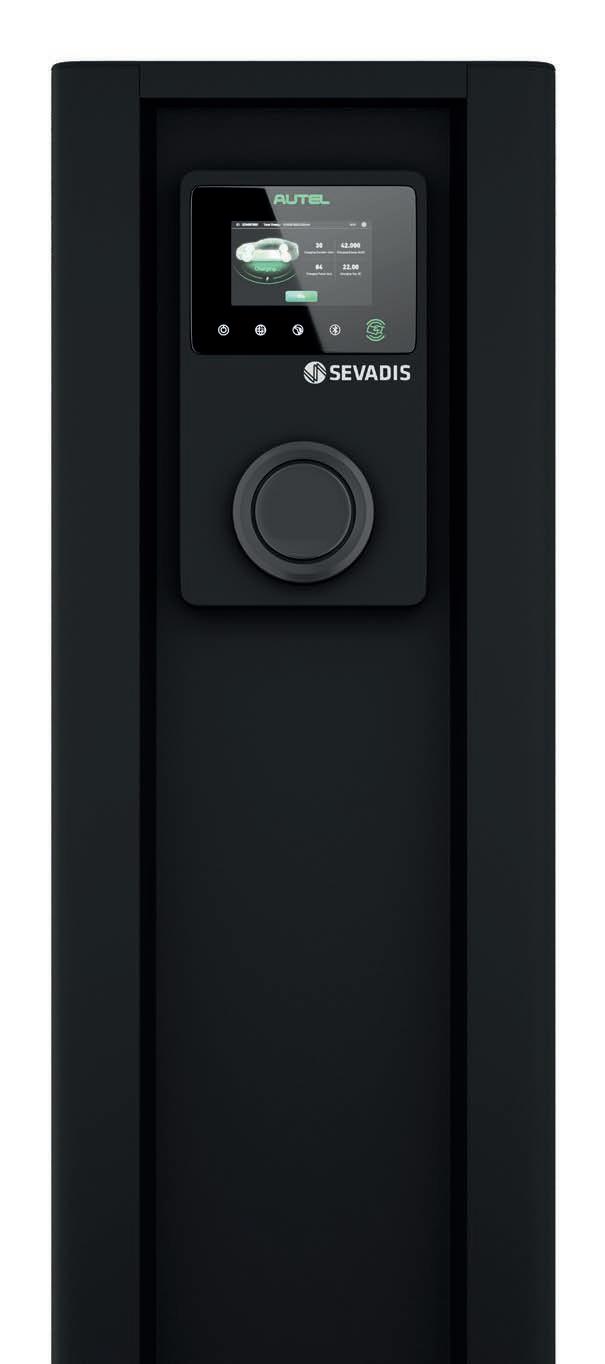
Edinburgh has introduced a state-of-the-art smart city operations centre, using cutting-edge surveillance and security technologies to enhance safety, city planning and environmental sustainability.
The City of Edinburgh Council leadership needed to modernise security and surveillance across the capital. This involved upgrading the control centre to a new smart city operations centre to receive real-time data from Edinburgh’s surveillance network. The centre also integrates with traffic and transport platforms to enhance operational management and improve city planning. The new control centre gives operators access to real-time data and analytics, for insights that improve response times and situational awareness.
Smart technology solutions provider, North, designed a security solution built with more than 100
high-resolution Hanwha Vision IP cameras including the PNM-9322VQP multi-directional PTZ camera and XNO-8080R 5MP IR bullet camera. The solution also incorporates a video management system from Genetec.
Multi-directional cameras are ideal for monitoring large and complex areas such as city centres. The multi-directional PNM-9322VQP features five camera sensors in a single device, minimising the amount of cabling and server infrastructure required (compared to installing five separate devices) to improve cost-efficiency while streamlining installation.


The XNO-8080R is a 5MP IR bullet camera with accurate video analytics. These analytics – carried out on the device to reduce server needs – include loitering, directional detection, audio detection and sound classification. It features Hallway View to cover narrow areas such as alleyways. Additionally, using the proprietary compression technology WiseStream II improves bandwidth by up to 75% while retaining video quality.
Cyber security is crucial in a smart city, given the number of connected devices that could be exploited. Hanwha Vision has been hardening its cyber security measures for many years with the National Defense Authorization Act compliance (NDAA), UL CAP Certification, and a dedicated security vulnerability response team (S-CERT).
Furthermore, North is part of Genetec’s ‘network of trust’ initiative, signalling the close partnership between the two solution providers and their shared focus on securing network and critical surveillance infrastructure.
“The new operations centre has been years in the making and it’s fantastic to see it live in action,” says Councillor Jane Meagher, Council Leader, The City of Edinburgh Council. “With cutting-edge low carbon technology designed to keep the city moving and our communities safe, it drastically steps up our capabilities as a council. Edinburgh is fast becoming an example of a truly smart city and it’s thanks to trailblazing projects like this.”
Andrew Foster, MD – Public Services at North, adds, “Helping to drive positive change through smart technology and improved operational systems across Edinburgh is something that North is incredibly proud of. Working together, the city now has access to real-time data that will influence the future of city planning, improve large-scale events and create a greener environment for generations to come.”
The new video surveillance system provides Edinburgh with a future-proofed smart city solution with the option to expand and add connected devices such as air quality sensors, smart parking applications and flood sensors.
Hanwha Vision, hanwhavision.eu

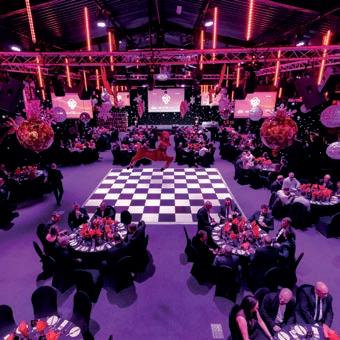





Control4 leads ADI | Snap One brands in a robustly designed home automation system from Control4 Partner, Electricus, that creates personalised experiences for all the family.
For this impressive, 12,500ft2 family home in the Buckinghamshire countryside, the main contractor looked to find a partner with experience in smart technology, electrical and security systems. Recognising how these areas increasingly intersect, its goal was to manage the project as efficiently as possible from the start for the benefit of the client.
Electricus Audio Visual is an NICEIC-approved contractor that, some years ago, saw that being able to offer smart home automation expertise as an additional service to clients would be an asset in just this type of project. The company invested extensively in training within the smart home sector and has been a Control4 Partner since May 2008.
“When the contractor approached us, we knew this was the perfect project to show just what we could do,” recalls Kyri Androu, Director at Electricus Audio Visual. “Being able to deliver on the smart home technology, security and electrical aspects of the contract, as well as being appointed very early in the build process, has really helped. For example, because we were running the first fix electrical cables, we could raise any questions that would impact the smart technology design straight away and get those resolved.”
One decision that was easy to make was the inclusion of a Control4 home automation system.
“The client’s brothers already had integrated audio-visual and lighting in several rooms at their homes,” adds Kyri. “Our client wanted more so we explained that he could control heating, air conditioning and security all from the Control4 platform too. We demoed Control4 and the app and they really liked how intuitive it was. The whole control process was very simple to understand and he liked how he could edit scenes and not rely on us for everything. Control4 is especially impressive in the way that it interoperates seamlessly with solutions from ADI | Snap One brands but is nicely compatible too in how it integrates technologies from other companies.”
System reliability was also a fundamental requirement. While Kyri explained that a simple reboot is usually enough to solve any glitches, the decision was made to fit a WattBox X8 IP power conditioner from ADI | Snap One to deliver advanced power management and control on site, accessible from the Control4 app. The addition of OvrC remote management also enables Electricus to manage, configure and troubleshoot devices on the network for added client peace of mind.”
The final outcome is something both contractor and homeowner are proud of
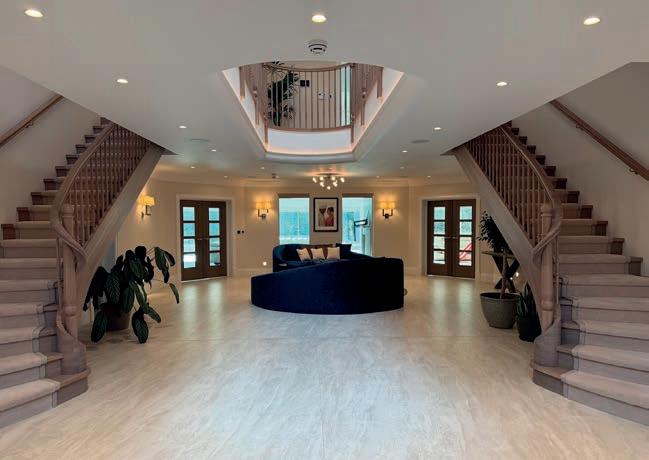
The network topology itself consists of a 310 router and four POE switches from Araknis, along with nine RIV35 access points located throughout the property. Premium whole home audio was also high on the list of priorities, so much so that the expansive five-bed property features 27 zones of audio.
“There isn’t a room that doesn’t have music. Even in the garden, there’s music,” Kyri says. “On our prewire we fitted a 10GW infrastructure, so there’s Cat6A everywhere. There’s also fibre everywhere, just for the future, but we’re using Cat6A now. It’s great for data transmission and video distribution as well.”
Five 8-Zone power amps from Triad drive Sonance in-ceiling speakers to ensure every room can be bathed in music. In addition, the home cinema room benefits from a 7.2.4 Dolby Atmos setup complete with Sonance speakers and Arcam processing, guaranteeing an incredible viewing and listening experience.
For Kyri, the lighting system is also noteworthy. “The lighting is very cool,” he says. “We worked with Lighting by Plum on the lighting design and have integrated 0-10V dimming to bring better lighting control through Rako integrated with Control4 –the light levels can be smoothly brought down really low, as low as 1-2%, which at night-time makes a real impact on the mood and experience for the homeowner.”
The security system is also managed by Control4 and includes a Control4 chime doorbell on the front door, Lilin security cameras, a Texecom alarm system and perimeter protection. Initially, the plan

was to put a Control4 T4 touch panel by the front door. However, Kyri was quick to point out that having touch panels located elsewhere would be more practical.
“We’ve relocated the touch panel to the kitchen/living space, which is where most people spend most of their time and is where you need your touchscreen, rather than at the front door. The client also decided to have a touchscreen just outside their master bedroom and then later added a couple of portable touchscreens on the top floor after the family had lived in the property for a while.”
In addition to the four T4s TouchScreens, the complement of Control4 kit includes fault-tolerant CA-10 automation controllers, a Core 5 controller, which automates the audio and video distribution system, interior and exterior lighting, security system and climate controls across multiple zones, and eight Core 1 controllers, which can orchestrate a wide range of entertainment devices including satellite or cable boxes and game consoles. Eight Control4 SR260 remotes offer intuitive and comprehensive management of the home automation system, combining advanced functionality with sleek design.
The final outcome is something both Kyri and the homeowner are proud of. “I think the team that we had involved was really good and the level of collaboration was very productive throughout. It was an excellent installation and showed the full spectrum of what Electricus can deliver.”
ADI | Snap One, snapone.com



Here, Carly Weller chats with Mike Costain, Managing Director of InstallerSHOW organiser Lyrical Communications, about the show’s continued expansion into the electrical sector and what the show has in store for electricians this year.

CW: Hi Mike, InstallerSHOW is being held next month – why should electrical contractors attend?
MC: InstallerSHOW is evolving and this year marks a significant step with the introduction of InstallerELECTRIC – our first ever dedicated area for electrical professionals. As the industry converges around decarbonisation and electrification, there’s never been a better time for electrical contractors to engage with the latest products, innovations and training. Whether you’re working in solar PV, EV infrastructure, smart homes or energy storage, InstallerSHOW offers you a focused platform to connect, learn and grow.
CW: What new features and innovations can electrical contractors expect at InstallerSHOW?
MC: InstallerELECTRIC brings together a vibrant mix of leading brands, live demonstrations and CPD-accredited content. Visitors can expect hands-on product showcases, expert-led seminars and insight into cutting-edge technologies spanning smart energy systems, EV charging, renewables and digital tools. It’s a one-stop hub for discovering the latest innovations shaping the future of electrical contracting.
The wealth of products on display this year from the likes of Hager, Voltsmart, Callidus Wholesale, V-Tac, Big Wipes, Drayton by Schneider Electric, UK Greentech, Sensio, Salus, Milwaukee, Surge Protection Devices, CKI – Home of C.K Tools, Segen, Protek-One, GreenPro, Danfoss, PHC Parts, Quinetic, RIDGID, Ford Motor Company, Socket & See, Hive, Midsummer and Ratio EV Charging highlights this.
CW: How does InstallerSHOW contribute to the pathway to net zero, particularly in the electrical sector?
MC: The road to net zero is paved with innovation, collaboration and upskilling – and for a long time, InstallerSHOW has been at the heart of that journey. With InstallerELECTRIC, we’re shining a spotlight on the electrification technologies that are key to decarbonisation. From solar integration and battery storage to heat pumps and smart grid solutions, the event helps empower contractors to play an active role in achieving the UK’s climate goals.

CW: Can you share some success stories or feedback from previous exhibitors and attendees that highlight the impact of InstallerSHOW?
MC: Absolutely – each year we receive overwhelmingly positive feedback from exhibitors and attendees with many brands reporting strong leads and valuable connections. Plus, visitors praise the hands-on learning, networking opportunities and direct access to manufacturers. As InstallerSHOW continues to grow – last year attracting over 20,000 visitors – its impact as a business and skills development platform continues to resonate across the sector.
CW: What role do you see solar PV and other renewable technologies playing at InstallerSHOW in the coming years?
MC: Solar PV, energy storage and renewables are increasingly central to the InstallerSHOW experience. As these technologies become more integrated into homes and commercial spaces, we’re committed to ensuring contractors can access the knowledge, products and solutions they need. Expect this area to grow year-on-year, with InstallerELECTRIC becoming a must-visit destination for professionals involved in the energy transition.
CW: How do you ensure that InstallerSHOW remains relevant and valuable to professionals across various trades, especially with the rapid advancements in technology and sustainability?
MC: Our success lies in staying connected to the industry. We work closely with electrical trade bodies and media – including ECA, BEAMA, NICEIC, ECN, MCS and NAPIT –manufacturers and installers to shape a live content programme that reflects real-world challenges and opportunities. By combining future-focused content, live demonstrations and cross-sector collaboration, InstallerSHOW stays ahead of the curve – ensuring every visitor leaves with new insights, inspiration and actionable takeaways. We also work with electrical influencers such as Mark Allison, Sianna Si Lays, Kimmy The Sparks and Ryan Davis, which gives us an invaluable insight into the issues that really matter to those in the electrical sector. This year’s event really will be unmissable for electrical contractors, and I can’t wait to welcome them to the NEC!
InstallerSHOW 2025 takes place at NEC Birmingham from 24-26 June, and admission and parking are free.
InstallerSHOW 2025, installershow.com
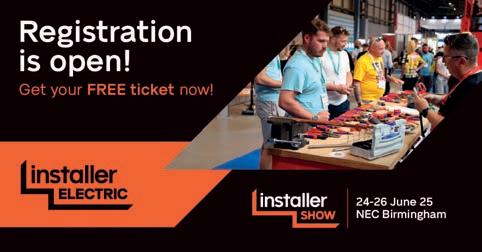


YOU CAN ACCESS 3,000+ TOOLS RIGHT HERE!
NEXT-DAY DELIVERY OPTIONS AVAILABLE!
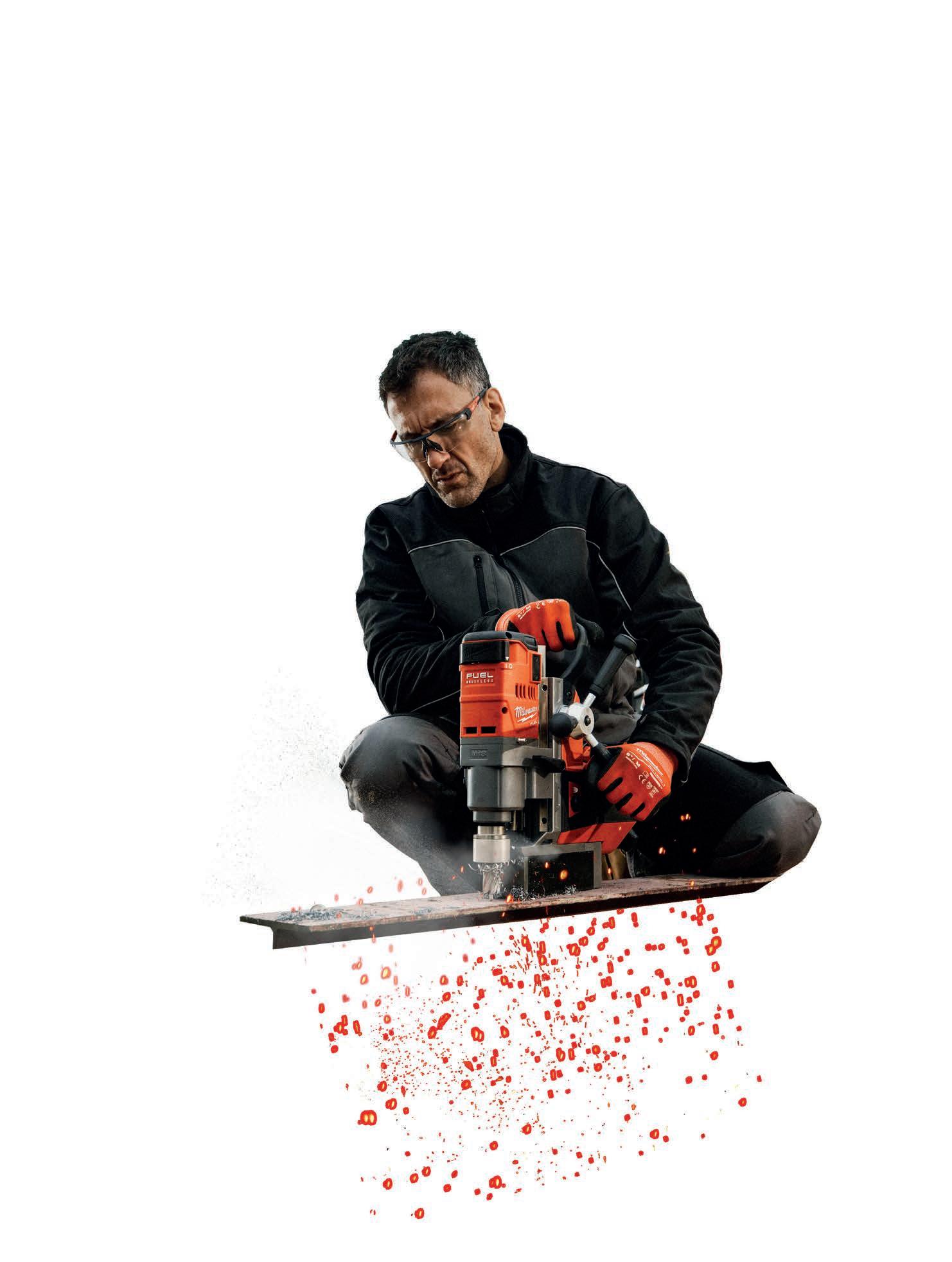

Earlier this year, ECN visited the factories of Proteus Switchgear, Centaur, Tamlex and M2. The tour provided valuable insight into the operations of these manufacturing facilities, showcasing their unique capabilities, innovative processes and commitment to delivering quality solutions across various industries.
For over three and a half decades, Proteus Switchgear has been a pioneer in British manufacturing, delivering exceptional industrial and domestic switchgear solutions. The company offers a diverse product range with comprehensive circuit protection and has the expertise to create fully customised units tailored to meet the specific needs of any installation in both their domestic and industrial factory operations.
In 2024, Proteus Industrial expanded its operations by acquiring a neighbouring building to accommodate the company’s growing needs. This strategic move introduced an increased production space for its switchboards and panelboards.
Proteus Switchgear places a strong emphasis on hosting company visits, welcoming customers on average two to three times a week. At the forefront of its factory lies the EV board production area – a rapidly growing segment for the company. Having manufactured EV boards for many years, Proteus is currently supporting the EV rollout across the UK with infrastructure for

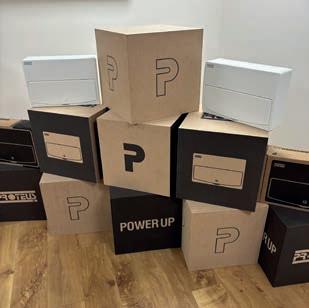
EV chargers at business depots, retail parks and restaurants. Impressively, all EV boards are built entirely in-house, including wiring, testing and shipping as complete units.
The factory is equipped with cutting-edge technology, such as a fibre laser cutter, forming machines and a state-of-the-art paint plant. Metalwork is processed on-site, where it is cut, formed and electrostatically sprayed before being delivered to production areas for assembly. Additionally, the facility includes a dedicated area for manufacturing floor-standing switchboards with capacities ranging from 800A to 2,500A.
Switchboard production involves a comprehensive process – from metalwork and copper assembly to painting, wiring, testing and final sign-off before dispatch to customer requirements.
The dispatch and storage area has been upgraded with a mezzanine system to optimise efficiency. As an in-house supplier for CEF, Proteus maintains a strong partnership with the company and as such ensures stock quantities are always available.
Earlier this year, the domestic operation introduced its new consumer unit range – a product manufactured from innovation, collaboration and dedication to excellence. Designed and developed entirely in-house by the company’s talented, long-serving Product Designer from the Design & Marketing Team, this range was brought to life in close consultation with contractors to ensure it meets real-world needs.
At the Redditch site, Proteus Switchgear – alongside the new consumer unit and
metering ranges – also has the capability to offer a range of domestic EV distribution boards. This offering covers insulated and metal boards as well as IP65 ratings in both variants. In addition, the domestic units are available with pre-cabled solutions to meet customer/on-site requirements. The company offers a choice of cable cross-sectional area and length, conduit size and glands to suit, within bespoke distribution board configurations, as well as units for the PV and ASHP market sectors – delivering a ready-made solution which increases the speed and efficiency of your install.
Last year, Centaur celebrated its 50th anniversary as a leader in British manufacturing, earning a trusted reputation in the PVCu cable management industry. With an extensive range of innovative products – including conduits, back boxes, three-compartment trunking, power poles and posts – Centaur continues to meet the needs of both commercial and specification markets.
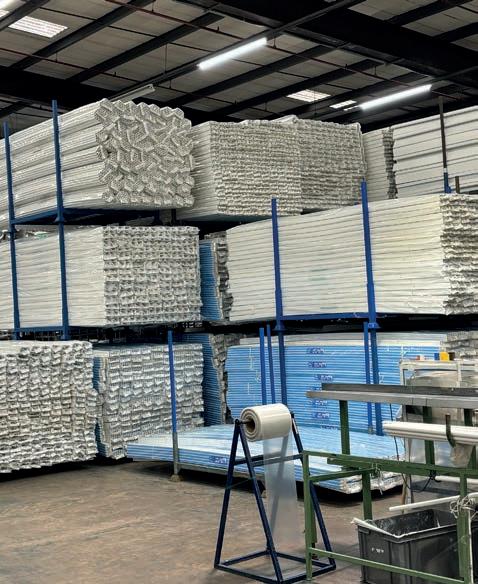




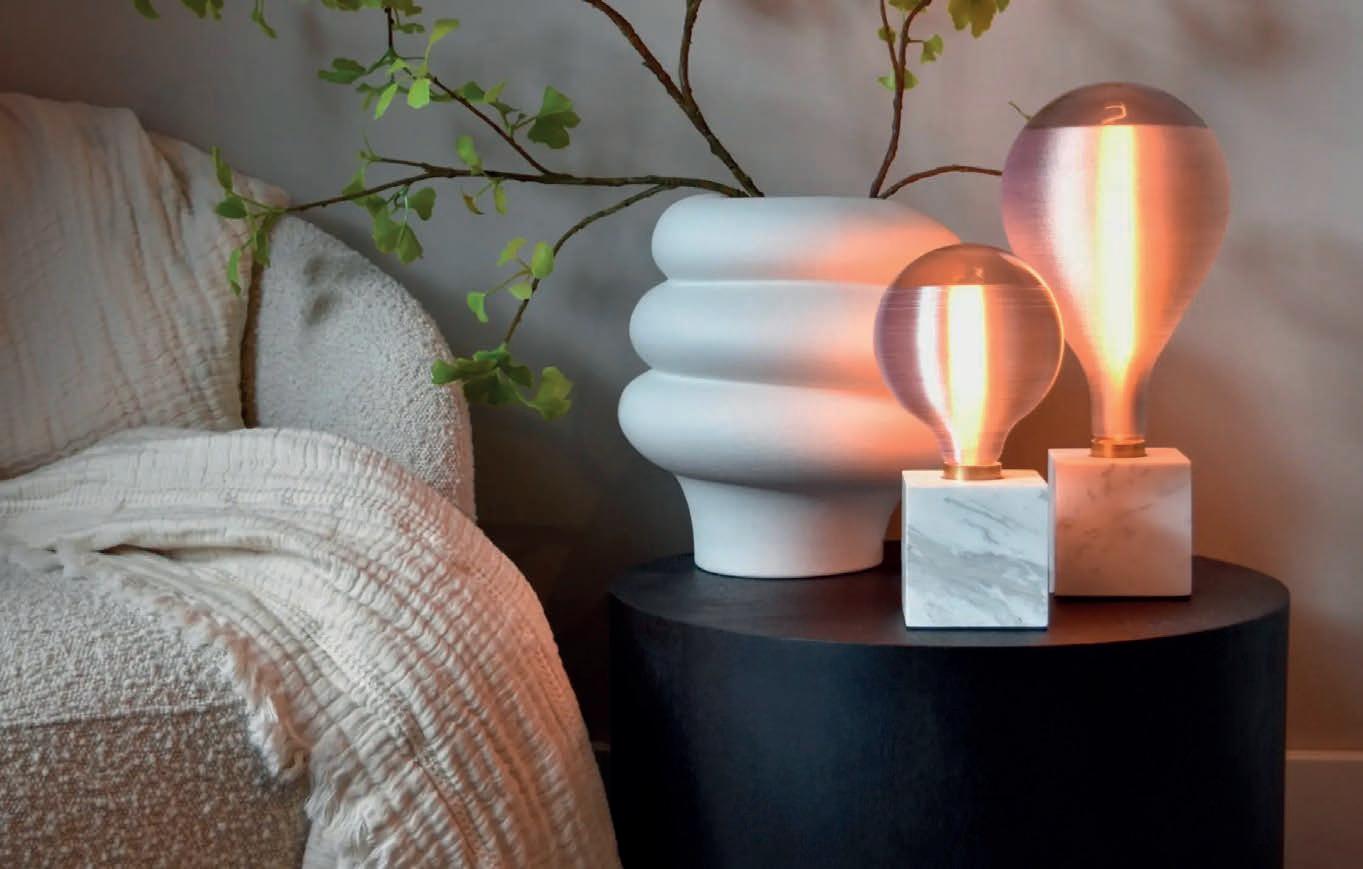

Operating from its state-of-the-art Redditch factory, the company produces its own PVC on-site. Recent investments exceeding £400,000 have been made to enhance operations, including the addition of a new extrusion line and injection moulding machine.
Centaur offers a wide variety of services, such as bedhead unit production, sonic welding, cutting, shaping, pressing, assembly and bending. The company also showcases bespoke products, proudly presenting them to customers during factory visits, specifically when they walk into the dedicated fabrication department and can see what capabilities this area boasts.
The facility is equipped with external silos and processes approximately 1,600 tonnes of resin pellets annually. While white remains the most popular PVCu colour, followed by black, Centaur also provides options in red, brown, grey and beige. Custom colours can be accommodated on request.
The factory maintains a zero-waste policy, as all products are fully recyclable. Sustainability is a core value for Centaur, which prioritises both internal and external training to uphold eco-friendly practices and innovation in its processes.
Tamlex has over 50 years of expertise and has established itself as a leading provider of high-quality cable management systems. Renowned for its innovative solutions, the company offers a diverse product range, from floor service boxes to power and lighting trunking systems, designed to meet the rigorous demands of various industries.
As a design-focused manufacturer, Tamlex has developed an array of standard product lines alongside bespoke solutions tailored to unique installation requirements. These customised offerings provide enhanced features, cost-efficiency and installation benefits, ensuring superior functionality for users.
Tamlex specialises in manufacturing steel-based products, including cable trunking, lighting trunking, cable tray, FastConnect basket tray, service boxes, steel boxes, steel conduit, strut channels,


supports, fixings and fasteners. A key innovation for the company is its work with ZM – a highly durable and eco-friendly material designed to withstand the harshest conditions. The ZM coating ensures long term performance, making it a robust and sustainable choice that aligns with Tamlex’s commitment to green practices.
The company produces trunking up to 24in wide, typically in 3m lengths, as wider trunking can pose installation challenges due to increased weight. Tamlex’s high-security products have gained significant traction, with rising demand from prison facilities.
Sustainability is a priority for Tamlex, as all steel waste is recycled.
M2’s innovative wiring accessories now feature USB charging points integrated into socket outlets. Its sleek M2 slimline white moulded range is complemented by an extensive selection of decorative metal plate products, which also include voice, audio and data configurations to cater to modern needs.
The company also has an IP66 weatherproof range, offering 20A-rated switches and enclosures designed to fit standard one- and two-gang accessory products. Packaging has also been streamlined to feature unique colour-coded designs, simplifying product selection for contractors and reducing single-use plastic. By eliminating the need to read labels, this update saves electrical contractors valuable time on the job.
Another way in which M2 is supporting its customers is by offering a 25-year guarantee on all wiring accessories. This is due to the confidence the company has in the quality of the products and their ability to last, which is supported by the rigorous in-house testing that is completed to guarantee exceptional quality standards, therefore allowing contractors to install with confidence.
Some manufacturing still takes place at the Redditch factory, primarily focusing on manufacturing power bars. These remain a strong product line for markets such as gym lockers – allowing users to charge phones conveniently – and charging trolleys for schools, ensuring laptops and tablets are powered up for the next class.
M2 takes pride in its USB socket range, which it claims is the most comprehensive on the market. A cutting-edge, super-fast 65W USB socket is due for release soon. Additionally, the company is preparing to launch a new dark bronze finish to align with current design trends, though the white slimline range remains its bestseller. In the decorative segment, the brushed stainless-steel finish with black inserts continues to lead in popularity.
With a legacy of quality and innovation, Proteus Switchgear, Centaur, Tamlex and M2 remain at the forefront of the industry, consistently adapting to meet customer demands and market trends.
Proteus Switchgear, proteusswitchgear.com M2, m2electrical.co.uk Tamlex, tamlex.co.uk Centaur, centaurmfg.com



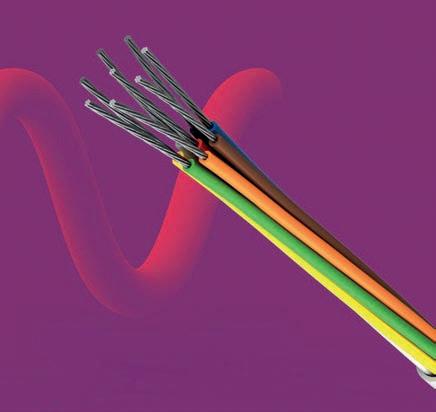
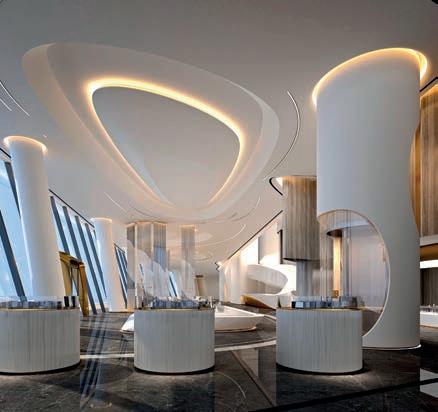
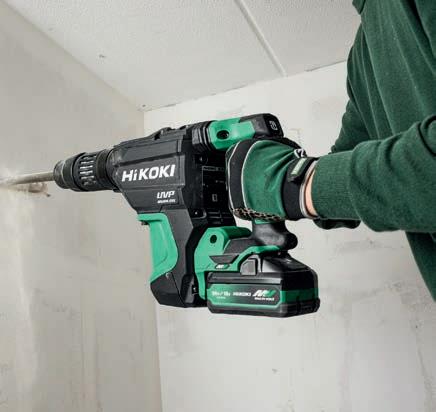
In addition to our regular range of news and viewpoints, the next issue of ECN will contain special features relating to cables & connections, smart buildings and tools & test equipment, as well as a special supplement devoted to wiring accessories.
The features will include articles and information from major companies, providing a range of information about the latest issues and technological developments affecting the sectors. For electrical contractors, the features will prove to be a valuable reference point for all that is happening within these areas.
To make sure that you don’t miss this major opportunity to advertise your products to
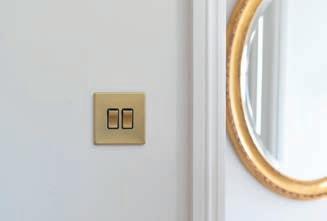
Concerns about sustainability?
We are really concerned and working hard to improve our footprint on the planet.
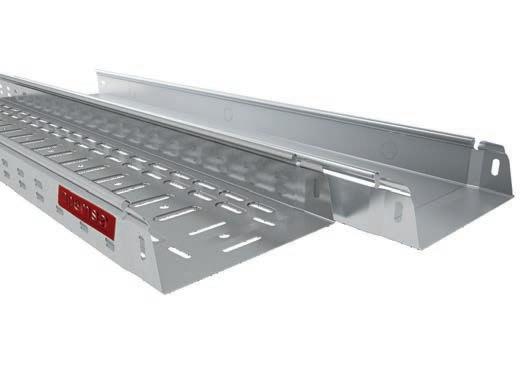
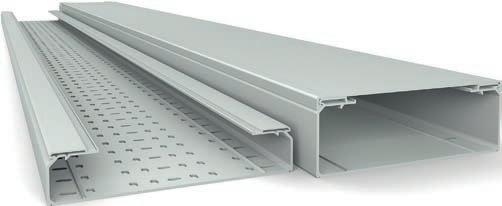



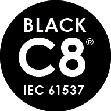
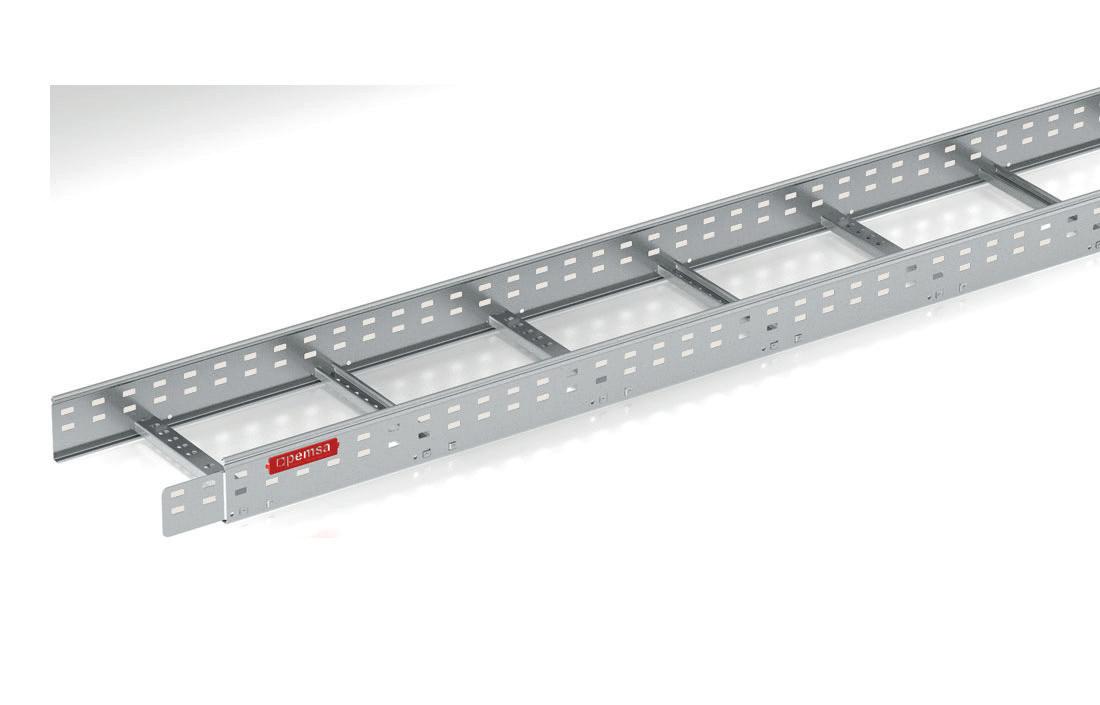
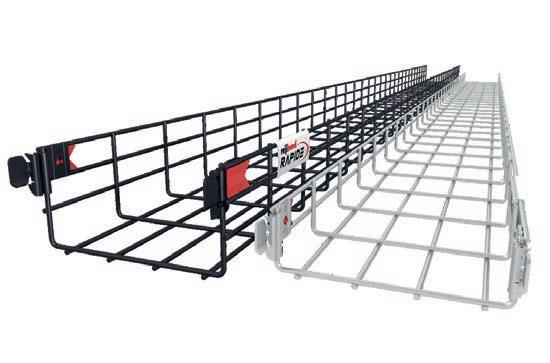

Unicrimp is giving one lucky winner the chance to win a Trade Tub bundle comprising two of each Trade Tubs.

Unicrimp, part of the Scolmore Group, continues to strengthen its reputation for providing practical, high-quality solutions for electrical professionals with its comprehensive Trade Tubs range. Designed with the demands of the trade in mind, these robust, resealable tubs offer a convenient and reliable supply of commonly used fixings and accessories, helping to improve efficiency.
Each Trade Tub contains a selection of essential components, supplied in durable containers, ideal for transportation, storage and quick access during installation work.
The Red Wall Plugs and Countersunk Screws Tub offers a practical combination of 400 x red wall plugs and 400 x 8 x 1.5” countersunk screws, ideal for general-purpose masonry fixings. The contents are precision-matched to provide strong, secure fixing performance across a variety of applications.
Optimised for use in plasterboard applications, the Metal Self Drive Plugs and Panhead Screws Tub contains 200 x metal self-drive plugs and 200 x 8 x 35mm panhead screws that eliminate the need
for pre-drilling. The self-drive design ensures fast and secure installation, while the panhead screws offer a clean, flush finish.
The T&E Cable Clips Tub contains 400 x 1mm and 400 x 2.5mm T&E clips that have been manufactured with tough, impact-resistant plastic and pre-fitted with hardened steel nails to ensure cables remain firmly fixed in position.
Suitable for use in masonry and breezeblock, the First Fix Kit Tub comprises 100 x 20mm open quick fit cable grommets, 100 x red wall plugs, and 400 x 8 x 1.5” countersunk screws – bringing together all the elements in one handy tub to make back box essential installs much easier for the contractor.
In line with Unicrimp’s commitment to sustainability, these robust tradesman tubs feature a resealable plastic lid and carry handle, and the tub itself is manufactured from recycled material.
The Unicrimp catalogue, which showcases the entire range of Q-Crimp accessories, can be downloaded from the Unicrimp website, as well as from the Scolmore Group app.
Unicrimp, unicrimp.com
To be in with a chance of winning the ultimate Unicrimp Trade Tub bundle (two of each tub mentioned), simply answer the following questions correctly:
1. How many red wall plugs are included in the Red Wall Plugs and Countersunk Screws Trade Tub?
a)
2. Which Trade Tub is designed specifically for plasterboard applications and eliminates the need for pre-drilling? a) First Fix Kit Tub b) T&E Cable Clips Tub
c) Metal Self Drive Plugs and Panhead Screws Tub
3. What is the total number of T&E cable clips included in the T&E Cable Clips Tub? a) 200 b) 800 c) 400
The winner of the March competition – four energy efficient axial fans, courtesy of Domus Ventilation – was Ian Peckitt.
All entries must be returned by 31 May 2025. The editor’s decision is final. For the full terms and conditions, visit electricalcontractingnews.com/ competition-terms.
The name of the winner will be published in the July issue of ECN. *Prize not exchangeable.


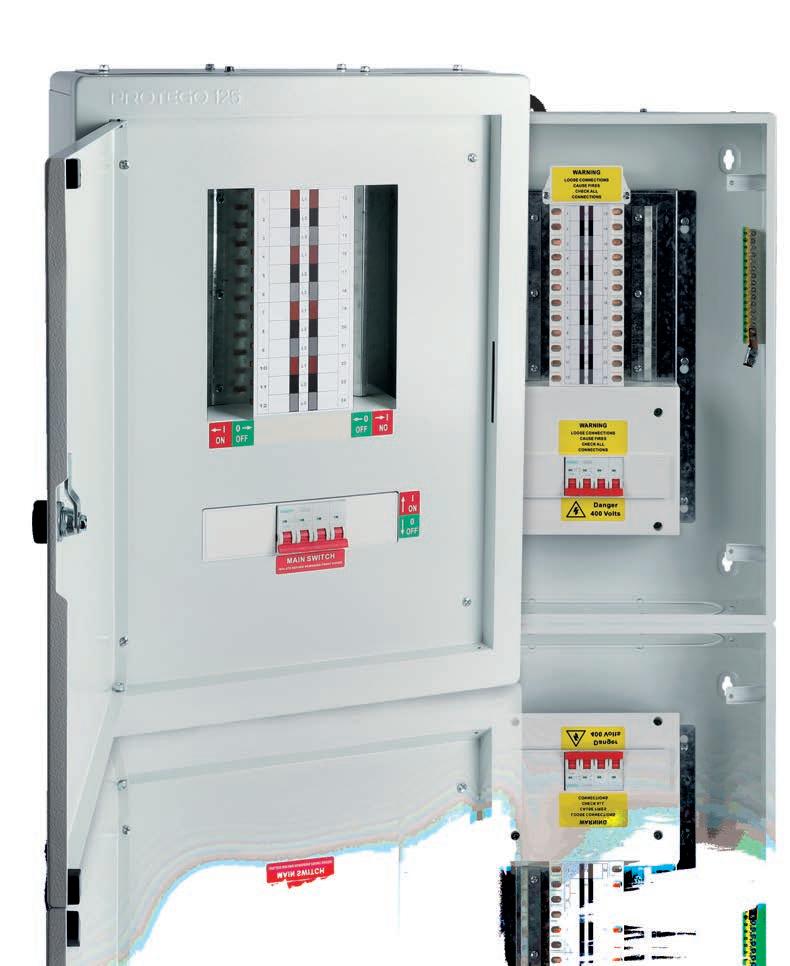

Take
●
● 1P & 3P 10kA MCBs available in B, C, & D Curve
● 1P & 3P 10kA RCBOs available in B, C, & D Curve
● T2 Surge kit (c/w MCB & links)
● 100 & 125A 4pole main switches
● Extension & spreader boxes
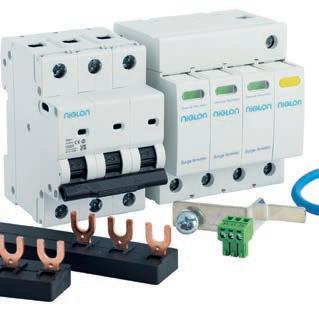
Niglon is a family-owned company with over 80 years of experience in supplying electrical components to wholesalers across the UK. Originally founded as S.D. Hinley, Niglon Limited has been at the forefront of the electrical industry since 1966. Today, the company offers more than 4,500 products, including circuit protection, wiring accessories and industrial components.
Niglon prides itself on providing high-quality products at competitive prices, backed by exceptional customer service and stock availability. The company’s ongoing investments back into the business ensure that Niglon remains a trusted partner to electrical tradespeople, offering a comprehensive range of solutions for both residential and industrial applications.
Niglon’s commitment to continuous improvement drives the development of new and enhanced products. The company aims to make installation simpler, improve
product aesthetics, and address evolving market needs. Its latest innovation –Protego 125 – reflects these efforts. While the existing 125A three-phase distribution board range has been available for several years, the launch of Protego 125 represents a major step forward. This new range, which is now available, builds upon the success of the single-phase Protego boards, which gained industry recognition when it was named a finalist at the ECN Awards 2024.
Oliver Hinley, Operations Director, explains, “Building on the success of our single-phase boards, we wanted to overhaul our 125A three-phase offering. This project has involved extensive collaboration and dedication from our technical department, and we’re excited by the positive feedback we’re already receiving from wholesalers and installers.”
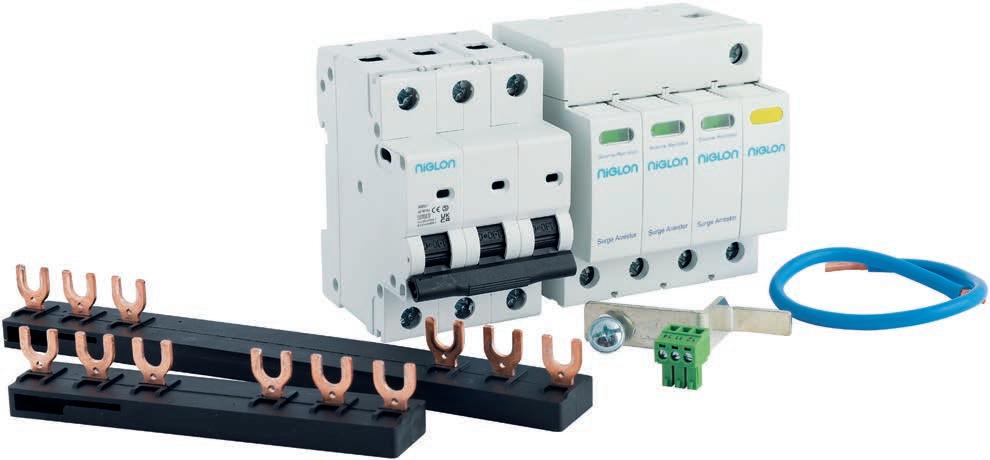
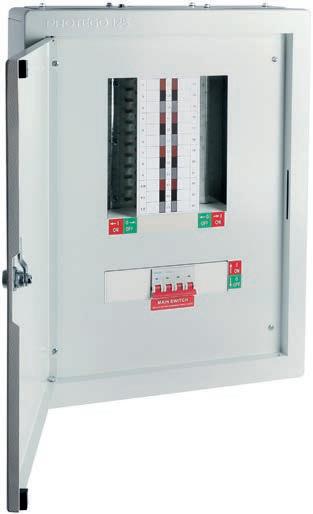
The Protego 125 range has been designed with input from installers to ensure it meets the practical needs of the market. Here are the key features:
• Reversible door: Provides added flexibility during installation on-site.
• Half DIN rail: Speeds up the process of populating the board.
• Fully shrouded terminals: Clear markings and full protection for ease of wiring.
• Comprehensive busbar and main switch protection: Enhances safety during use.

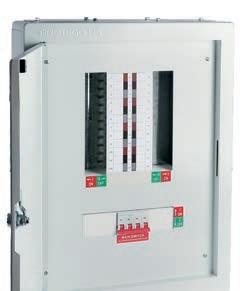



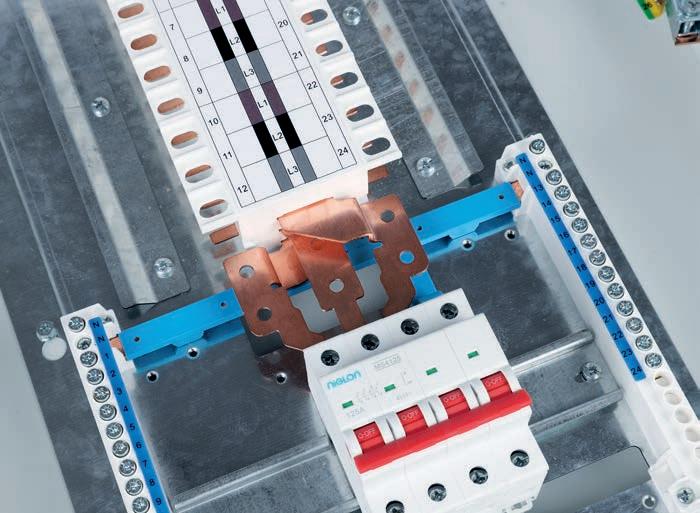
• Ample space for cable dressing: Makes installations neater and more efficient.
• Rolled gland plate edges: Prevents cables from becoming snagged or damaged during installation.
One significant update to the Protego 125 is the SPD compatibility, which was absent in previous models. The new range allows surge protection devices to be installed directly within the board without taking up any available ways, eliminating the need for separate enclosures. A complete SPD kit (including SPD, MCB and necessary connections) will be available for quick and easy installation.
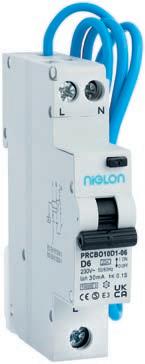
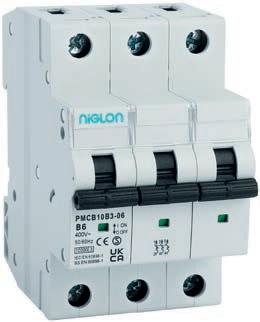
The chassis of the Protego 125 can now be demounted from the board enclosure, allowing for easier handling and installation, especially in tight spaces. This user-friendly feature reduces strain and increases convenience for installers.
The Protego 125 range maintains the robust styling of Niglon’s single-phase boards. The boards are made with 1.2mm steel construction and reinforced curved edges, ensuring durability and preventing warping when mounted to the wall. Wall-mounting kits are provided with each unit as standard.
Niglon has also expanded its device offering to ensure full coverage for all applications:
• 1P and 3P MCBs and RCBOs in B, C, and D curves.
• Main switch-only boards in 4, 6, 8, 12, 16 and 24-way configuration.
These additions address the needs of installers, offering flexibility without compromising the streamlined SKU count that helps wholesalers keep their inventory efficient.
At Niglon, quality and safety are paramount. The new Protego 125 boards undergo third-party testing to ensure compliance with industry standards. This rigorous testing provides additional assurance to customers and aligns with the company’s commitment to maintaining the highest levels of safety in all products.
Niglon says it is excited for growth in sales of the Protego 125 range through 2025 and looks forward to the continued success of this innovative product. The company remains dedicated to developing products that meet the real-world needs of electricians and professionals across the industry.
Niglon, niglon.co.uk
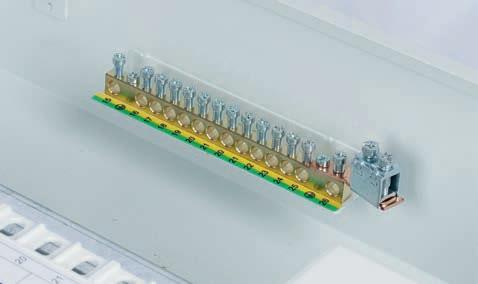



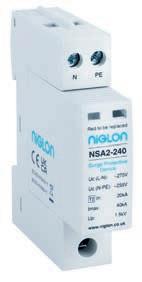
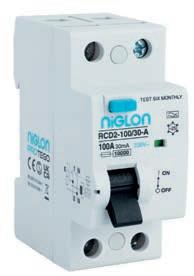
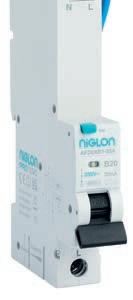
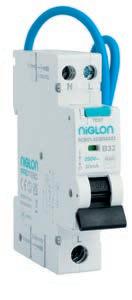

For a number of years, it has been thought that the use of Arc Fault Detection Devices (AFDDs) was ineffective when used with installations that have cross-linked polyethylene insulated (XLPE) cable. This was due to AFDDs requiring the presence of carbon within the cable fault to activate it. It was always assumed within the industry that XLPE cable would not char –and thus not produce carbon – under arc fault conditions.
The recent Technical Bulletin from BEAMA, the respected trade association for the electrotechnical sector, shares conclusive findings of its independent testing conducted with XLPE and Low Smoke, Zero Halogen (LSOH) cabling with a selection of AFDD and Residual Current Circuit Breaker with Overcurrent Protection (RCBO) devices for comparison.
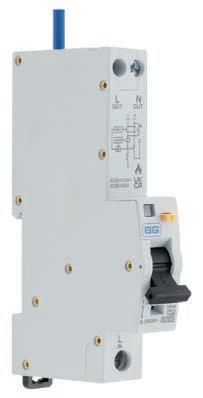
Philip explains, “Arcs are created when the electrical current jumps the gap between two conductive materials – for example, where contacts in electrical equipment are worn or where there is damage to insulation, a break in a cable or a loose connection. With a considerable number of fires caused by electrical faults, the use of AFDDs could help to reduce their frequency, with BEAMA’s independent test results giving extra peace of mind to contractors fitting AFDDs.”
“BEAMA’s findings concluded that it was possible for XLPE/LSOH cable to char under an arc fault condition. Secondly, it determined that this arc fault condition was detectable by all three types of AFDD devices tested. When tested against the RCBO devices, these did not activate under the presence of such arc faults, even when the charring amount was greater in comparison to the AFDD tests.
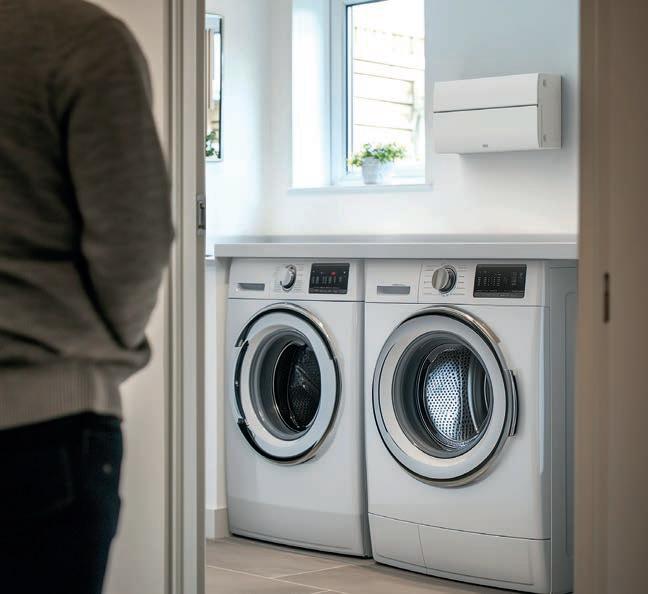
“The conclusion from testing was that XLPE/LOSH cable can char from arc faults, and that AFDD devices can detect the presence of this fault within this cable.
“It is also worth noting that whilst PVC remains a popular material for cable insulation, the use of XLPE cross-linked thermosetting insulated cables may be necessary for specific installations. This is because XLPE insulation provides better fire performance in comparison to PVC and is a tougher sheath with a greater barrier resistance to abrasion, moisture and mechanical wear. Ideal for power installations in harsh environments, LSOH sheath reduces toxic smoke emissions.”
Philip concludes, “For all installations, but particularly in buildings where people either work or reside, both in commercial and
domestic settings, the BEAMA Technical Report provides additional evidence that using AFDDs significantly reduces the risk of fire caused by series arcing, thus avoiding potential cost to business and/or loss of life and all of the associated costs, disruption and upheaval that would cause. We welcome the findings of the report and look to continuously improve both our products and service to provide contractors with the trusted partnership they deserve.”
Luceco’s BG brand has a full range of AFDDs for use with BG’s Fortress Consumer Units that have been expertly designed for ease of installation and manufactured to provide the kind of reliability and peace of mind that BG is known for. With a host of features to make life easier for installers, BG offers a 10-year warranty on its AFDD range.
Luceco, luceco.com








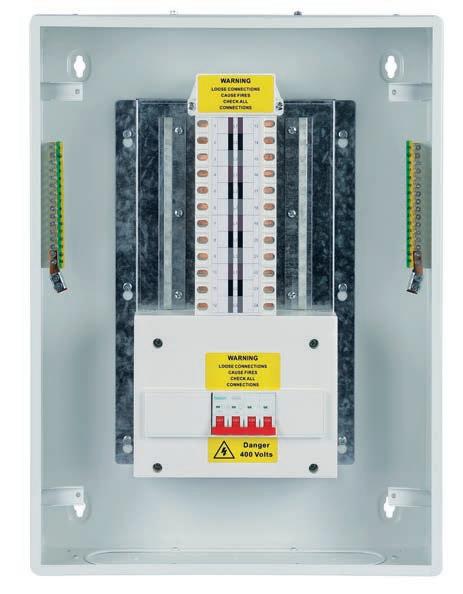



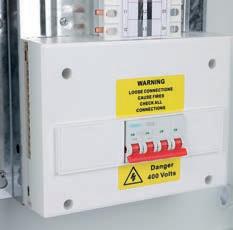
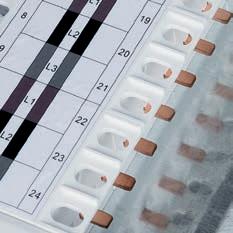

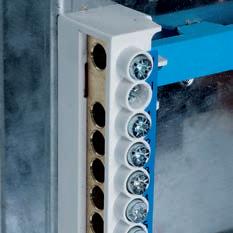
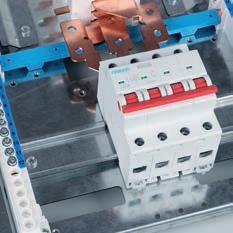
NEW Protego 125 range of three phase distribution units from Niglon. Designed to meet the necessary industry standard, guaranteeing they provide a reliable & safe performance. Suitable for a variety of applications such as commercial & industrial.
● Half DIN rail for speedy fit-out ● Wall mounting kit supplied
● 1.2mm panel gauge ● Available in 4, 6, 8, 12, 16 & 24 way
● Reversible door ● BS EN 61439-3
● Optional surge protection kit available
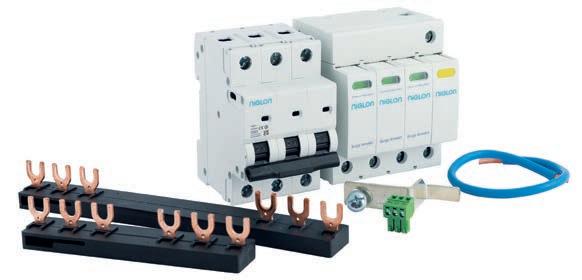
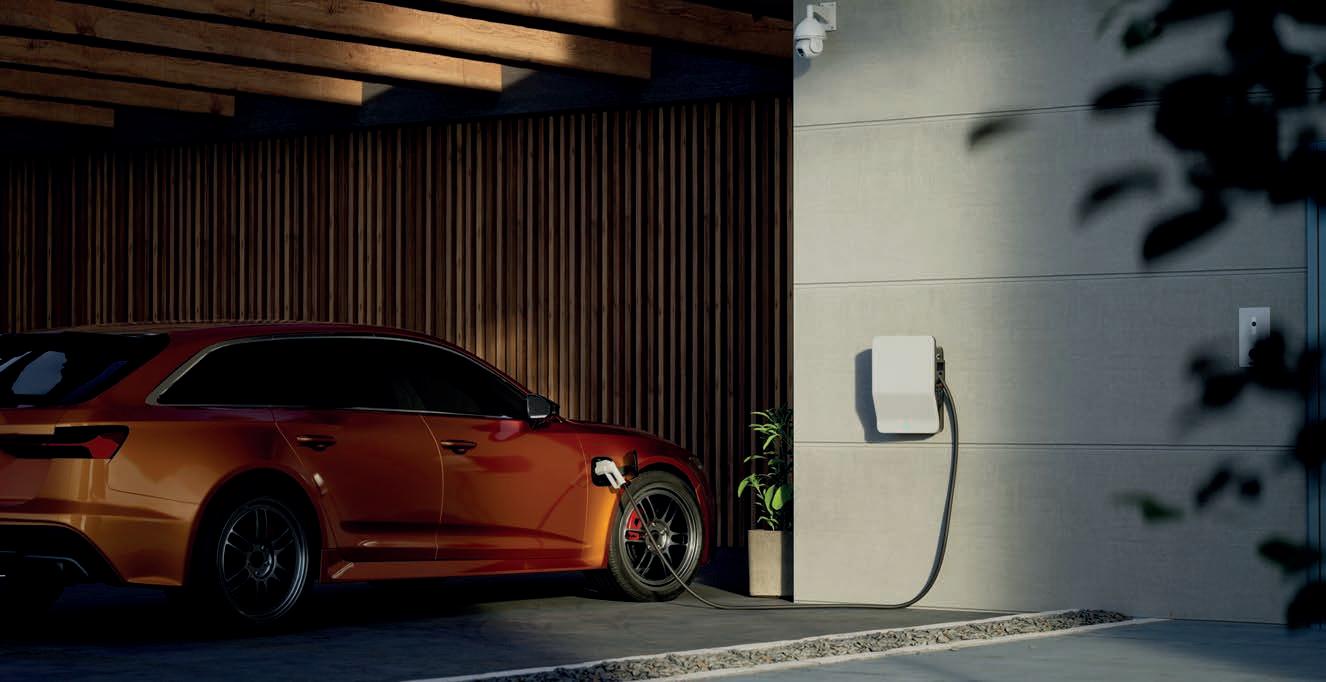
In this article, Steve Donovan, Head of Technical UK & Ireland at renewables distributor Segen, explores the nuances of RCD considerations for renewable technologies and offers guidance on choosing the right type of protection.

Residual Current Devices (RCDs) are critical components in electrical installations, providing protection against electric shocks and fire risks caused by earth leakage. However, when it comes to installing renewable technologies like solar PV, battery storage systems and EV chargers, choosing the correct RCD – and knowing whether you need one at all – can be more complicated than it seems.
RCDs have become so commonplace nowadays that the decision to install RCCBs (residual current circuit breakers) and more recently RCBOs (residual current breakers with overcurrent protection) is almost automatic. However, there are specific circumstances that mean that you don’t need an RCD at all. The benefits of not installing an unnecessary RCD include cost and time savings, as well as the prevention of nuisance tripping.
When it comes to renewable energy systems, the decision to install an RCD
isn’t always straightforward. For example, if the main fuseboard and solar inverter are installed in the same area (like a garage or plant room), and the inverter’s supply cabling is fully visible from the origin to the inverter, then it’s possible to argue that an RCD isn’t necessary. The reasoning is that the risk of the cable being damaged or disturbed is low when it’s visibly secured along a wall or inside surface trunking.
Interestingly, Section 8.8 of the IET Code of Practice (COP) for Grid Connected Solar PV confirms there is no fundamental requirement to install an RCD on the








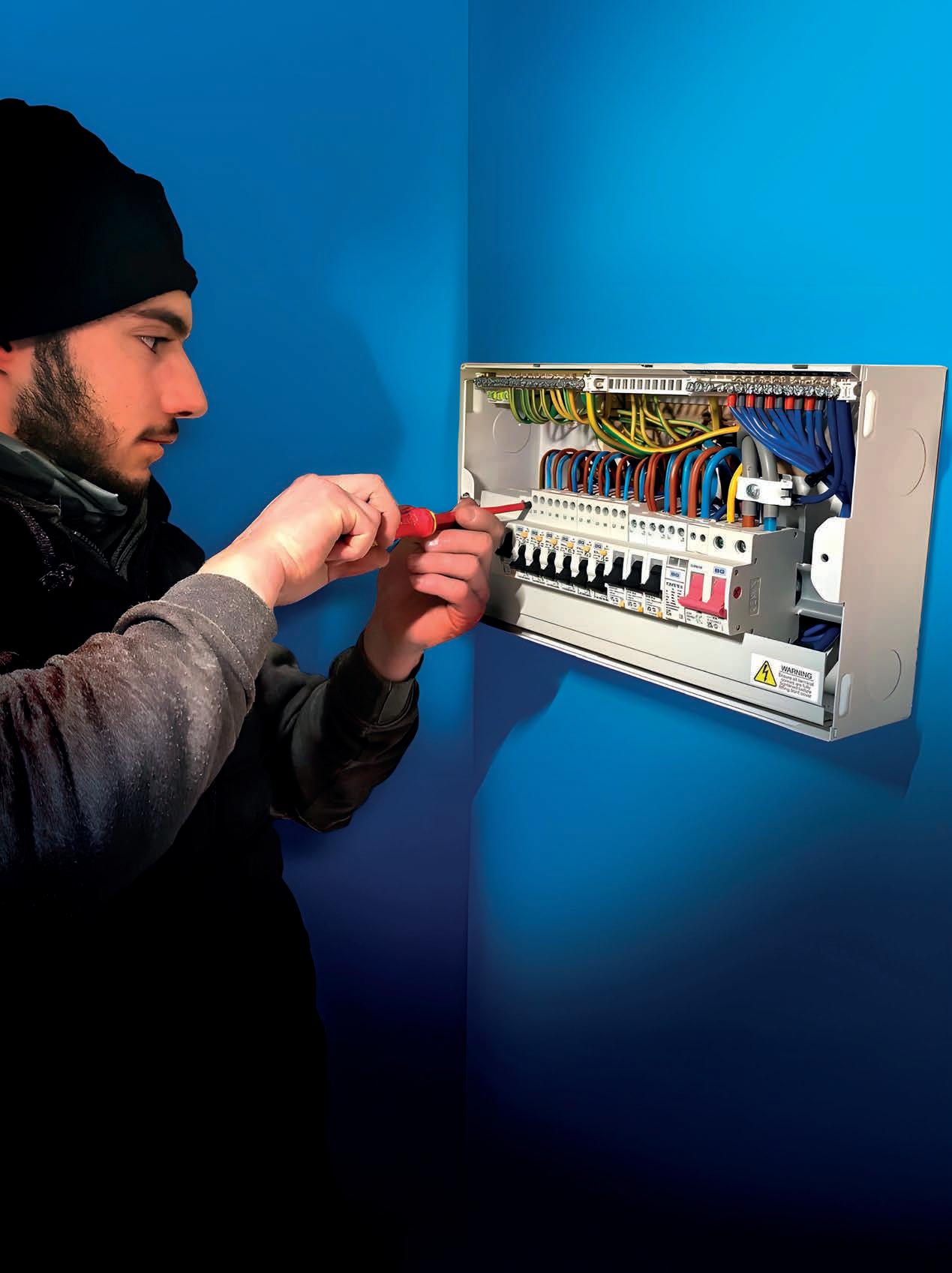
The NEW BG Circuit Protection range is designed for fast and flexible, professional installations.
Optimised knockouts for easier cable installation
Single module Type 2 Surge Protection Device
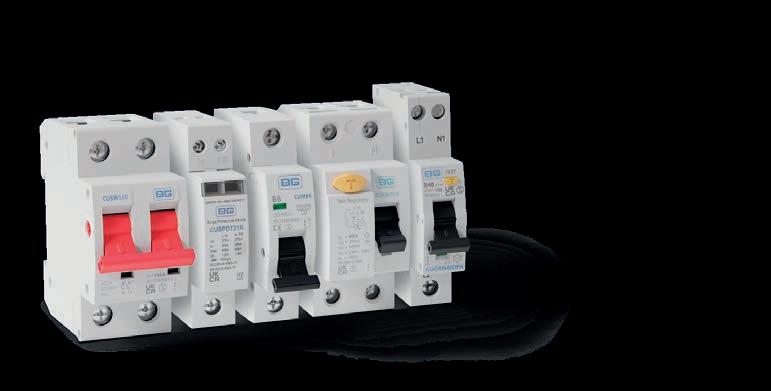
Stronger removeable DIN rail design for secure device attachment
Clip-in cable protectors and enhanced grommet strips
Device Style DIN rail mounted blanks
Backed by a 10-year guarantee, and UK-based technical support, this future-ready range easily accommodates evolving demands.
View our full product range at bgelectrical.uk or scan the QR code

circuit feeding the inverter(s). In fact, it recommends designing systems so that inverters are not fed by an RCD, as this can prevent unnecessary tripping in the event of minor faults. However, EV chargers are a different case, and an RCD is always required for these installations.
Once you’ve determined that an RCD is necessary for your installation, the next step is choosing the right type. Historically, the most common RCDs were the Type AC devices, which are only suitable for circuits with purely resistive loads (like heating). However, most renewable technologies – such as solar PV and battery storage systems – incorporate DC (direct current) components. This is where problems may arise.
Type AC RCDs can struggle to detect faults in circuits that include DC current, as the RCD can become ‘blinded’ by the DC component. This can either prevent the RCD from tripping when needed or cause it to trip unnecessarily (nuisance tripping). Therefore, Type AC RCDs are no longer suitable for circuits with DC components, which makes them inappropriate for solar PV and battery storage systems.
For renewable technologies, Type A RCDs are the appropriate choice. These devices are designed to handle up to 6mA of pulsed DC current, making them suitable for most systems involving solar inverters and battery storage. However, it’s important to always verify the manufacturer’s documentation for any specific RCD requirements for the
devices you’re installing, as there may be specific limits or recommendations to consider. Refer to the selection tables in the IET COP books for more details.
Another important consideration is whether the RCD needs to be a double pole or a switched neutral device. According to the Wiring Regulations (BS7671), RCDs serving equipment like solar PV, battery storage and EV chargers must disconnect all live conductors, including the neutral. This is a key safety feature.
In most cases, a double-pole RCD will meet this requirement, as it will disconnect both the live and neutral conductors. However, it’s important to check the specific details of the RCD you’re using. RCBOs often have a diagram on the side, indicating whether the device switches both the live and neutral conductors. Many RCBOs are single-pole with a switched neutral. These will disconnect both conductors in the event of a fault, but they will only provide overcurrent protection for the live conductor, not the neutral.
Some installations – particularly battery storage systems and EV chargers – can involve bidirectional power flow. In these systems, power may flow in both directions,
which is important when considering RCD functionality. Unidirectional RCDs are designed for systems where power flows in only one direction, such as typical household appliances. But for systems that involve bidirectional power flow, like inverters that charge batteries or bidirectional EV chargers, it’s essential to use a bidirectional RCD.
Bidirectional RCDs are designed to function correctly regardless of the direction of the power flow, ensuring that the test function operates properly in both directions. In contrast, a unidirectional RCD exposed to bidirectional power may fail to function correctly if the power flow reverses, creating potential safety hazards. For instance, a unidirectional RCD exposed to bidirectional power could become permanently disabled without visibly tripping. This could leave the system user unaware that the RCD is no longer providing protection.
It is worth noting that on 31 July 2024, the IET released Amendment 3:2024 to BS7671:2018 (Requirements for Electrical Installations, IET Wiring Regulations), which provides greater clarity on the selection of unidirectional and bidirectional devices. In particular, Chapter 53 of the amendment (530.3.201) highlights specific product markings that must be included to indicate whether a device is unidirectional. These include directional indicators such as ‘In & Out,’ ‘Line & Load,’ ‘Supply & Load,’ or arrows indicating the power flow direction. If a device lacks any specific directional markings, it should be assumed to be bidirectional.
In conclusion, when installing renewable technologies such as solar PV, battery storage systems and EV chargers, it’s vital to understand the considerations and specifications for RCDs. While it may be tempting to install an RCD by default, it’s worth asking whether it’s necessary in the first place – especially in cases where the inverter and fuseboard are in the same location and the wiring is fully visible. If an RCD is required, ensure you select the right type, such as a Type A for renewable systems, and verify that the device switches both the live and neutral conductors. Lastly, always ensure that you use a bidirectional RCD for systems involving reverse power flow, like battery storage and EV chargers. By taking these factors into account, you can ensure that your installations are both safe and compliant with the latest regulations.
Segen, segen.co.uk




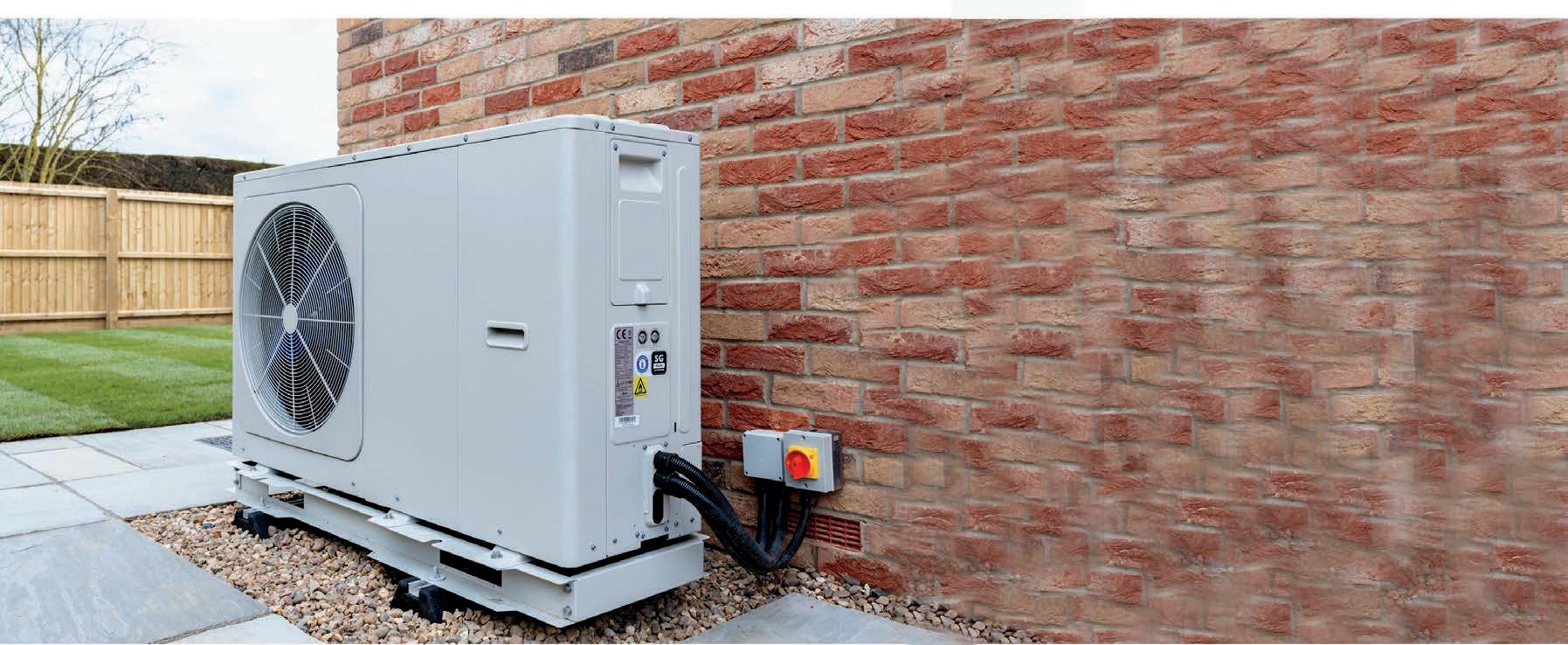
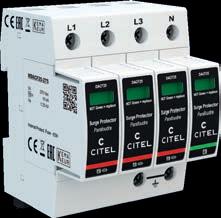

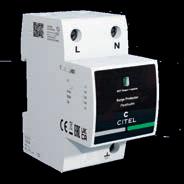
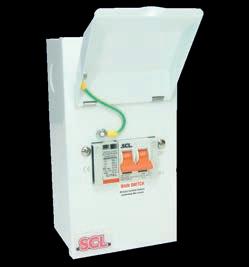

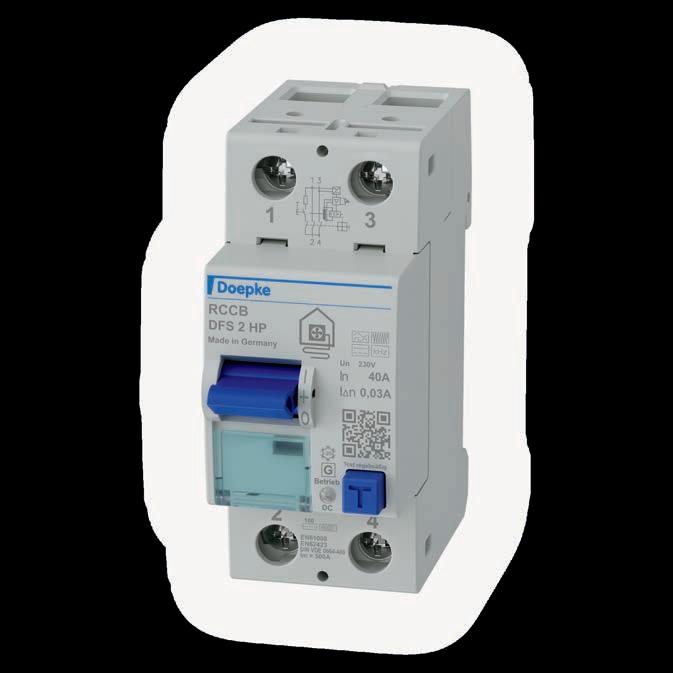



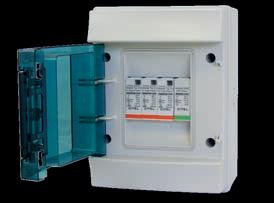

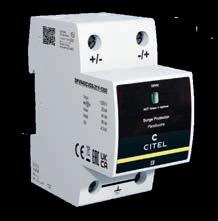
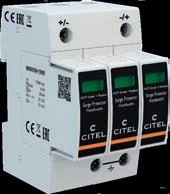




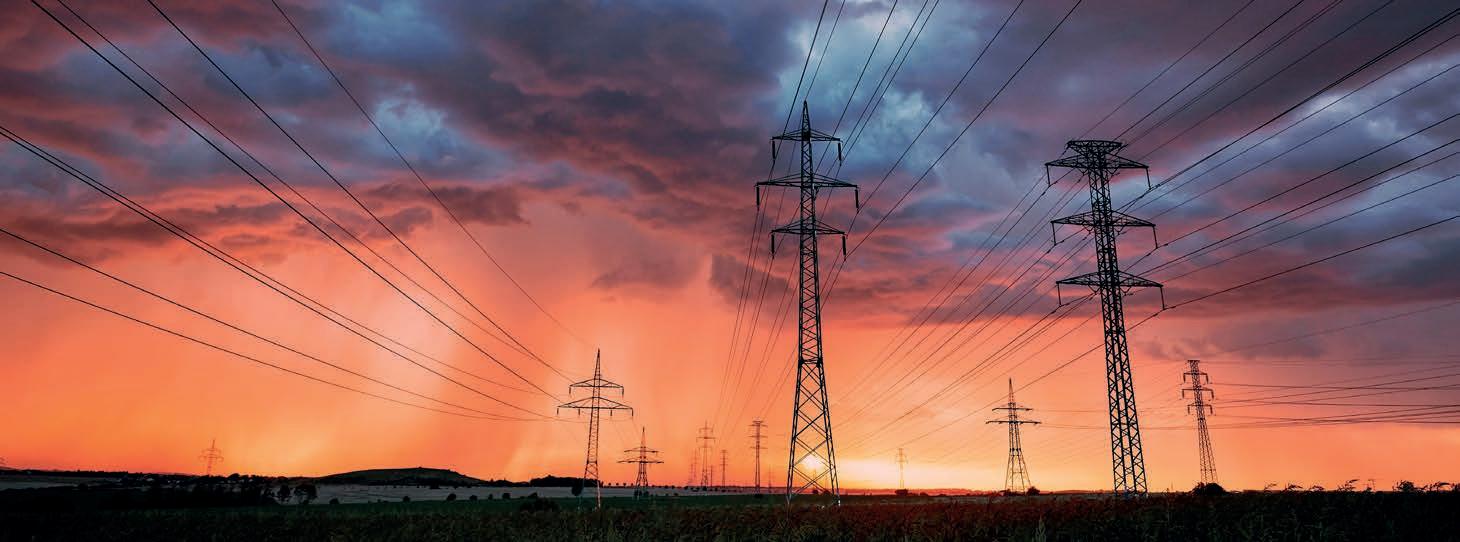
ReStart is an advanced range of RCDs that ensure total safety and maximum continuity of service in industrial environments, safeguarding people and property.

performs automatic RCD functional tests every 30 days, ensuring compliance if manual testing is neglected.
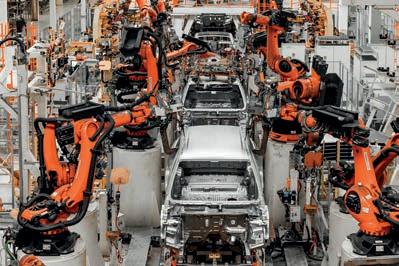
Automatically detect & report faults, ensuring safety & reliability without the need for human intervention.

Remote diagnostics & monitoring provides insight to pre-plan maintenance and drastically reduce downtime.





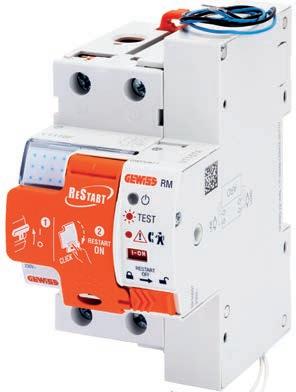
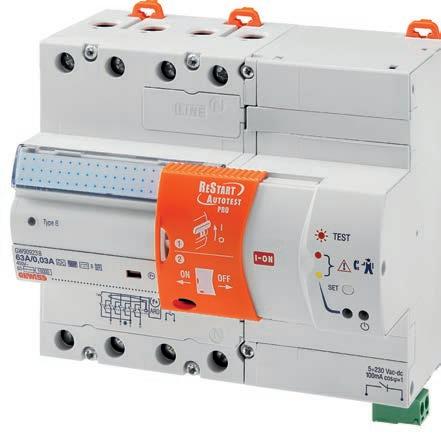
Guarantee continuity of service with ReStart fault detection and reclosing.
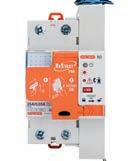
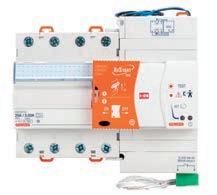
Ensure your RCDs are tested regularly, Autotest monthly RCD functional testing without isolation.
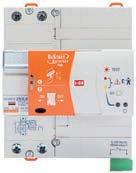

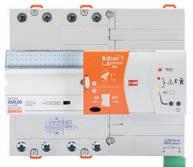
Scan the QR code to find out more about the ReStart range and choose the device most suited to your needs
Guarantee continuity of service with ReStart fault detection and reclosing.
Ensure your RCDs are tested regularly, Autotest monthly RCD functional testing without isolation.


Scan the QR code to watch our video on our ReStart range
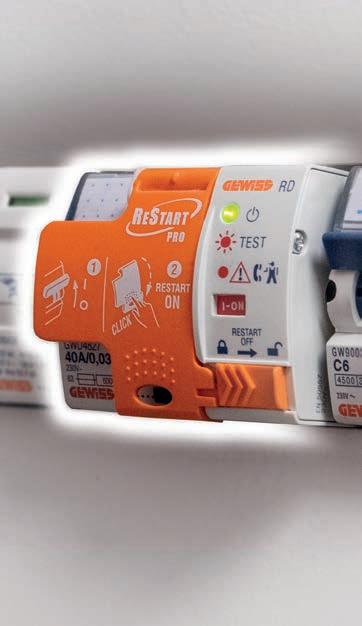
















Jake Green, Head of Technical Engagement at Scolmore Group, considers where three-phase supplies come from and some of the general terms used.
It has long been recognised that it is more efficient and effective to generate three-phase supplies rather than single-phase supplies. Three phase machinery is more efficient than its single-phase equivalent and three-phase supplies can deliver higher power more effectively than single-phase arrangement.
Typically, a three-phase supply is generated when a series of three-windings spaced 120° apart are rotated at 3000rpm (50rps) within a magnetic field.
Figure 1 shows the DC supply to the rotor coils creating the magnetic field, whilst three windings (black, grey and brown) are set apart by 120°. As the coils are rotated within the alternator, the voltages generated within the windings will rise and fall as each passes the relative ‘north’ (N) and ‘south’ (S) of the magnetic field.
The generated voltage will be sinusoidal in shape and the voltage will depend on the nature of the alternator, but is typically in the region of 25kV in the UK. This voltage is transformed up for transmission purposes and then transformed down for distribution to business and domestic consumers.
Irrespective of the level of voltage, the three phases remain constant – that is, separated by 120°.
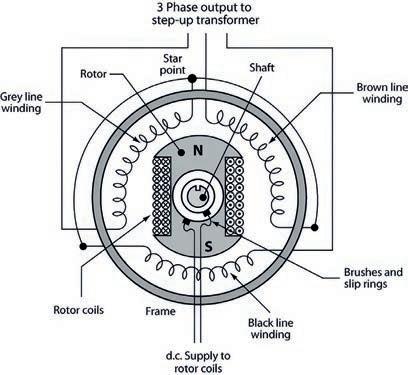
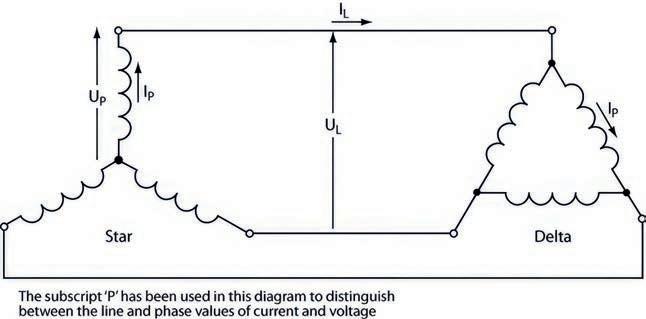
When considering anything to do with three-phase supplies, it is important that correct terminology is used. The labels for voltage and current vary because the relative relationships are different depending on what is being measured.
Delta connection – the start of one coil is connected to the end of the other into a closed loop. In delta-connected systems, the line voltage and phase voltage are the same. For example, a 400V line voltage is the same as the phase voltage. However, the relationship between line and phase currents differs by a factor of √3; (IL=√3IP) . For example, for a phase current of 10A, the line current would be : IL=√3×IP=√3×10=17.32 A. This equation can be shown in a phasor diagram.
Star connection – the end points of each coil are connected to a common point (the neutral point). In star-connected systems, the line current and phase current are the same. For example, a 13A line current is a 13A phase current. However, the relationship between line and phase voltages differs by a factor of √3; (UL=√3UP ). For example, a 230V phase voltage means that the line voltage would be √3×UP=√3×230=400 V. This equation can be shown in a phasor diagram.
The final supply to premises is generally derived from a local distribution transformer and the connection at the transformer is in ‘star’.
The low-voltage side of the transformer allows for a series of single phase, split-phase (two-phase) or three phase supplies. Because the supply is star connected, a neutral conductor is provided, and this conductor is connected to the general mass of earth at the star point of the transformer (Figure 3). The neutral is assumed to be at earth potential (taken as 0V).
This is a general introduction to three-phase systems. It is important to note that line and phase currents and voltages may have different values depending on whether the system is star or delta connected.
Scolmore Group, scolmore.com
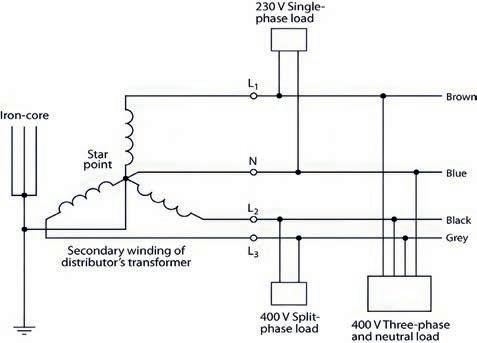




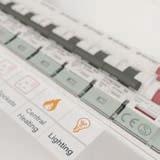
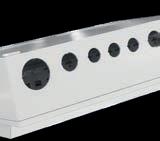
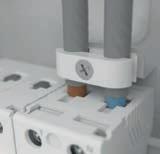
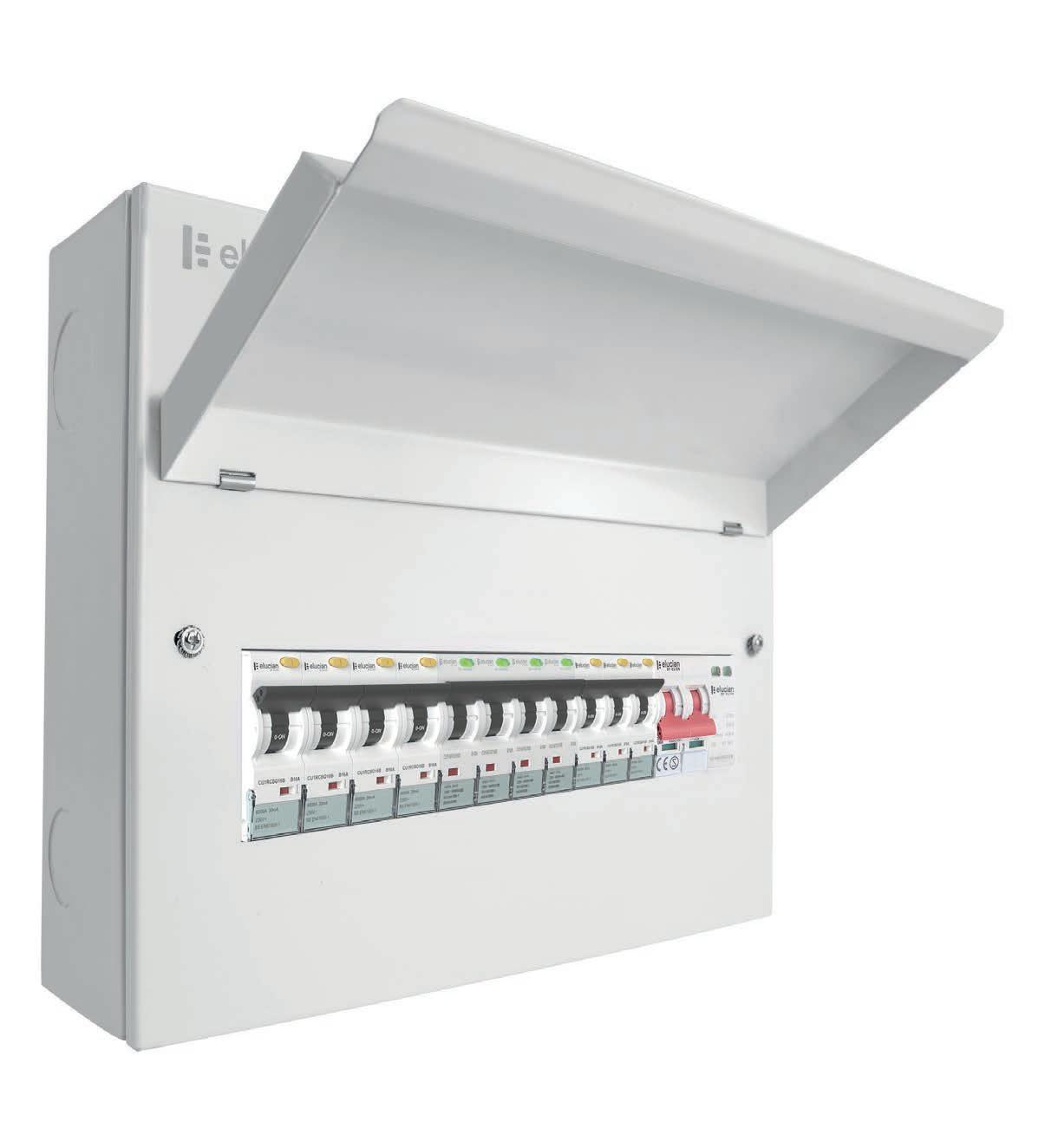


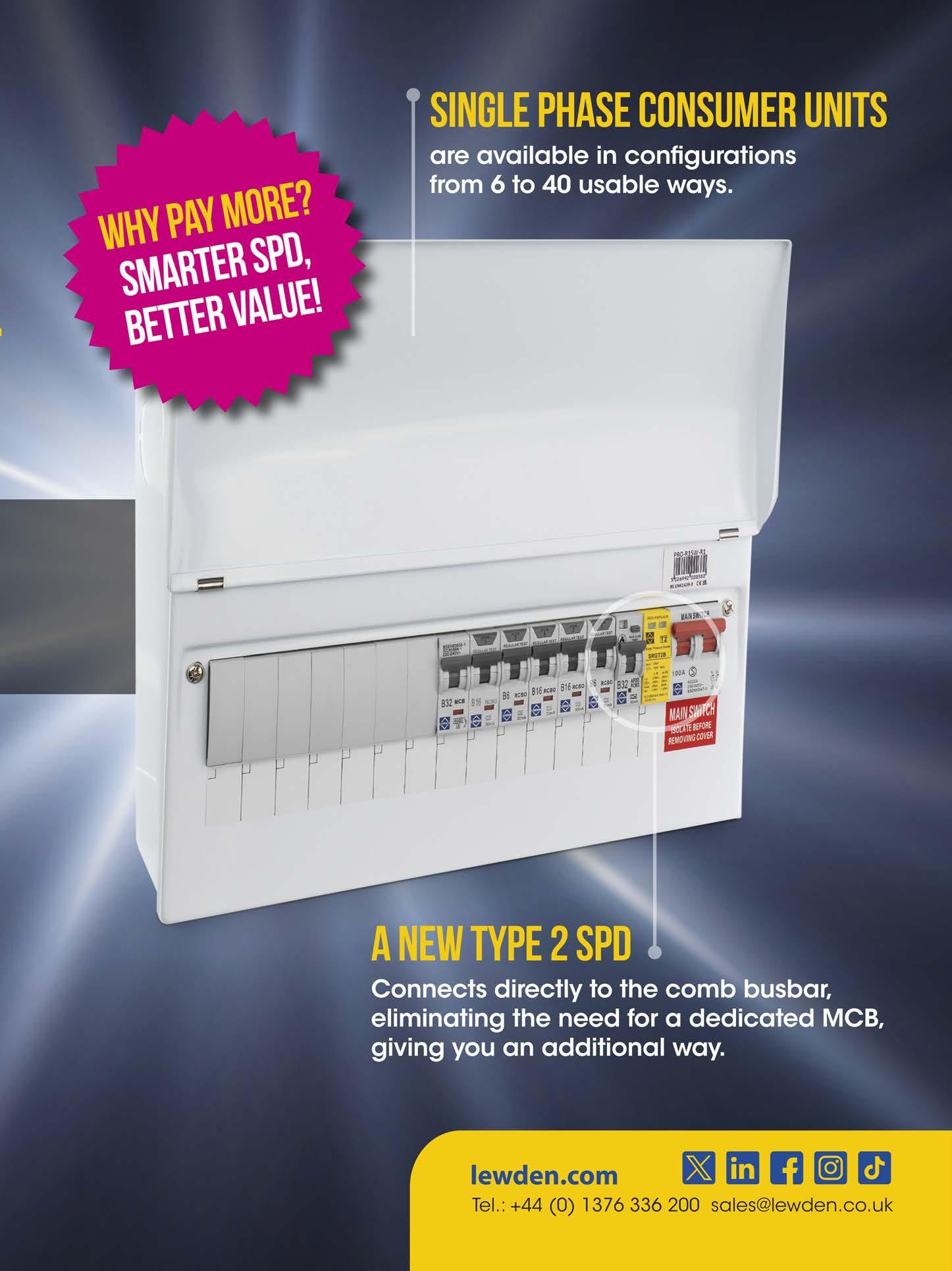
Surge Protection Devices (SPDs) have become a critical part of domestic electrical installations, driven by the increased use of sensitive electronic equipment and the rise of distributed energy technologies. Traditionally, SPDs are installed with a dedicated Miniature Circuit Breaker (MCB) to provide overcurrent protection. However, with manufacturer innovation and new guidance, many domestic applications could now omit this additional device.
Traditionally, in a consumer unit, a Type 2 SPD is installed downstream of a dedicated overcurrent protective device (OPCD2), such as a 40A or 50A MCB. This protects the SPD against short circuits and provides an isolation point for end-of-life maintenance. While compliant to BS7671, this method reduces usable space within the consumer unit, adds complexity to wiring, and requires extra coordination with the main protective device.
As consumer units become increasingly crowded with RCBOs, smart devices and EV chargers, simplifying the SPD setup has become more attractive. The evolution of SPD design, particularly models that incorporate internal protection and busbar compatibility, has supported this shift.
BS 7671:2018+A2:2022, particularly Section 534, provides clear guidance on SPD protection. Regulation 534.4.5 identifies acceptable methods for protection of the SPD against overcurrent:
• Internal protection within the SPD itself
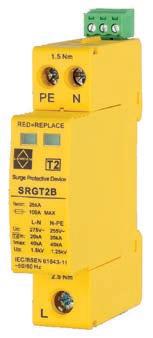
• Via a suitably rated upstream device (OPCD)
Lewden’s SRGT2B Type 2 SPD is engineered specifically for modern residential consumer units. It uses a combination of Metal Oxide Varistor (MOV) and Gas Discharge Tube (GDT) technologies and includes features such as:
• Internal thermal disconnection
• A plug-in replaceable cartridge
• Visual and remote end-of-life indicator
• DIN-rail mounting for direct connection to the busbar
The SRGT2B meets the BS EN 61643-11 standard and can withstand short-circuit currents of 25kA, significantly above the typical 16kA maximum in domestic environments. This makes it robust enough to safely omit a dedicated MCB under the right conditions.
Following guidance from Electrical Safety First, and in line with BS 7671, a dedicated overcurrent device (OPCD2) can be omitted if all of the following apply:
• The installation must be a household or similar application
• The SPD complies with BS EN 61643-11
• The manufacturer explicitly states that OPCD2 can be omitted
• The upstream protective device (OPCD1) is rated at 125A or less
Lewden confirms that the SRGT2B meets all of these requirements.
Importantly, laboratory testing also shows that the SRGT2B rarely fails in a short-circuit state at end of life. This gives installers further assurance that supply continuity is unlikely to be compromised if OPCD2 is omitted.
The ability to eliminate a separate MCB when installing an SPD brings real on-site advantages:
• Saves space in already crowded consumer units
• Reduces wiring time and complexity
• Simplifies certification, with fewer devices to schedule
• Improves board clarity, as every way serves an identifiable circuit
It also helps future-proof installations by preserving usable outgoing ways for other systems, such as battery storage or solar inverters.
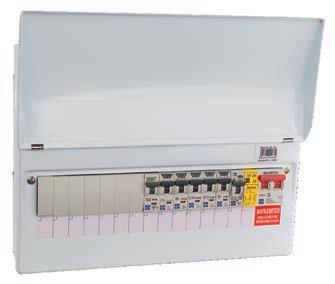
Despite this evolution, not all installations can omit OPCD2. For example:
• In commercial or industrial installations with higher fault currents
• When using Type 1 SPDs at the origin of a TT system
• In older consumer units where SPD coordination with the main fuse cannot be guaranteed
In these scenarios, a suitable overcurrent protection device should be used to maintain selectivity and ensure safe operation.
With better product design, it’s now possible – and often preferable – to install SPDs in domestic dwellings without a dedicated MCB. This new approach gives electricians greater flexibility when configuring boards and ensures installations remain efficient, future-proof and easy to maintain. As consumer expectations grow and installations become increasingly complex, simplifying protection strategies without compromising safety is a smart evolution – one that reflects modern best practice in domestic electrical design.
Lewden, lewden.com






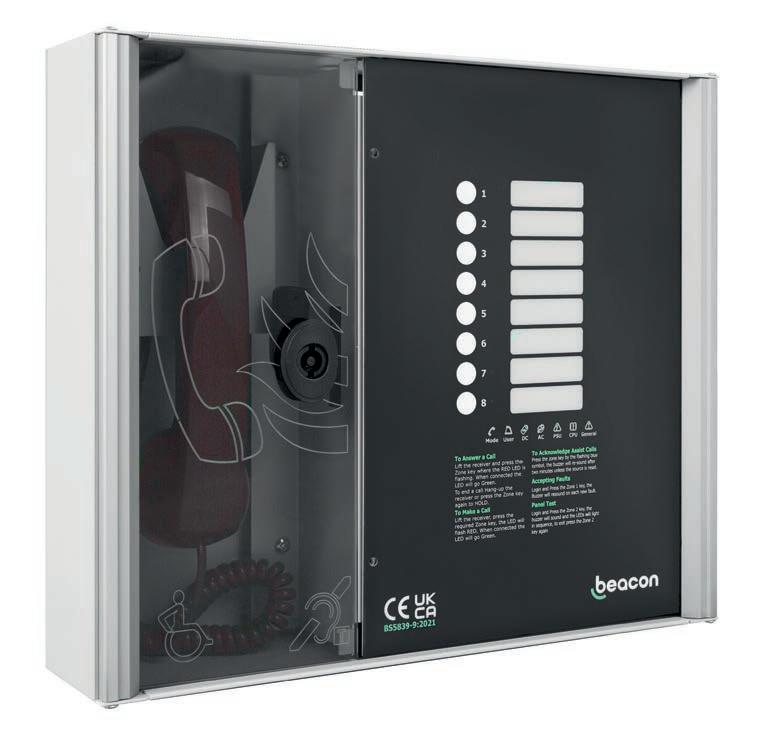
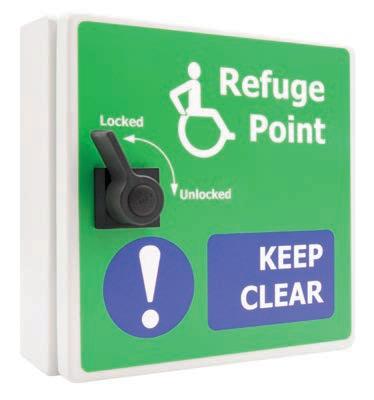
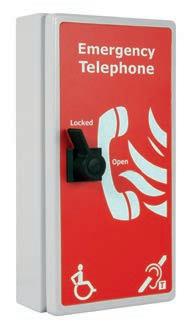
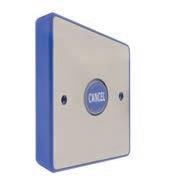

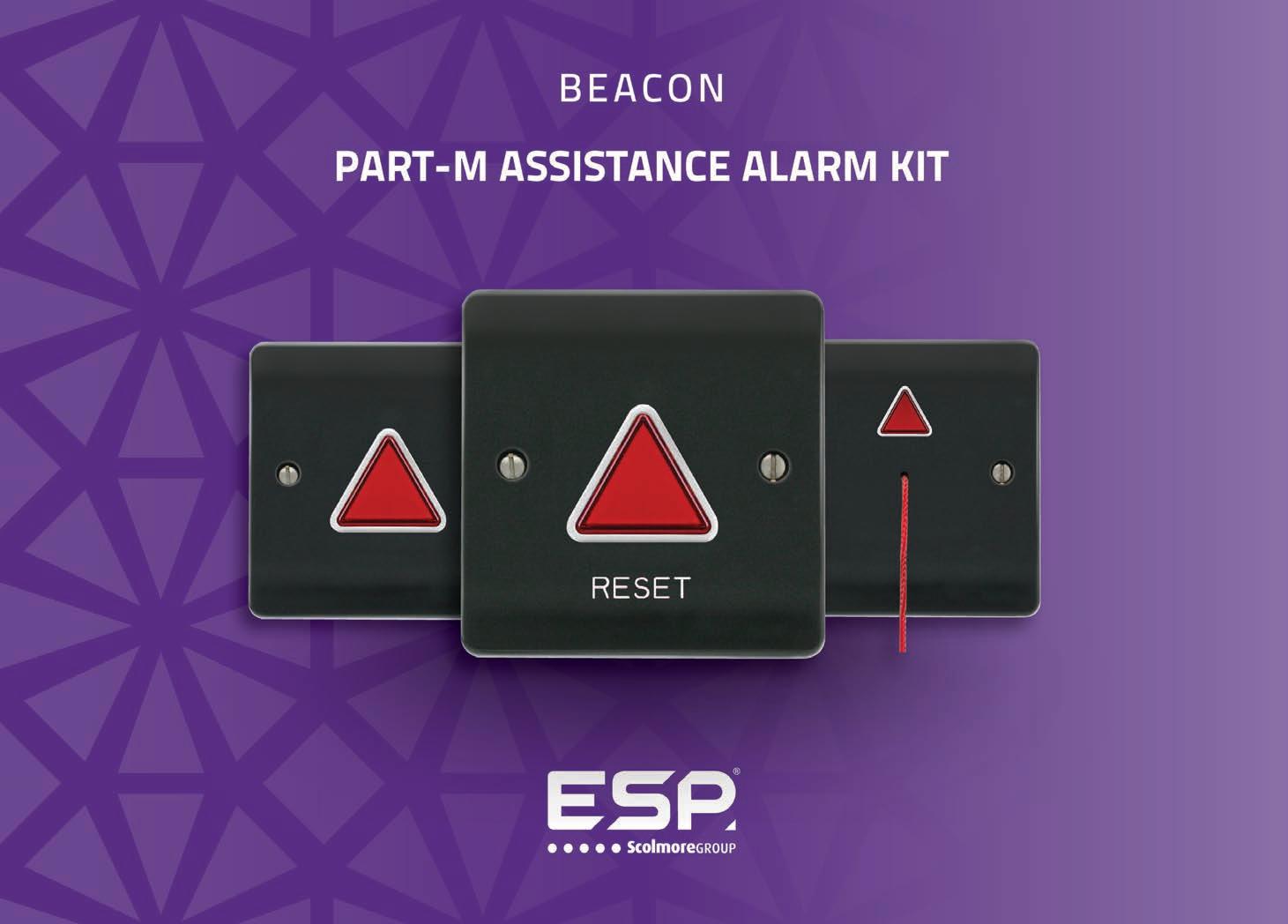
In modern building design, safety and accessibility are non-negotiable components –especially in the event of a fire or other emergency. For electrical contractors, one system that is increasingly critical in both commercial and residential builds is the disabled refuge system.
Adisabled refuge system (also referred to as an emergency voice communication system or EVCS) provides a means of communication for people who cannot easily evacuate a building unaided during an emergency, such as individuals with mobility impairments. These systems are typically installed in designated
refuge areas – safe zones within stairwells or fire-rated enclosures – where individuals can wait for assistance. The system allows two-way communication between the refuge point and a central control panel, usually located at the main reception or fire command centre. This ensures that building occupants can alert rescue personnel and receive instructions.
ESP’s comprehensive Beacon disabled refuge range is being increasingly sought
after by contractors working on larger, specification-type projects.
Meeting the requirements of BS 9999:2017 and Building Regulations
Approved Document B, the Beacon range comprises a variety of products that are specifically designed to assist emergency evacuation situations in a wide range of buildings and venues – with the aim of assisting people with limited mobility to safely exit the building.




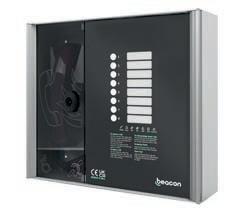

The Beacon ‘Master Stations’ are the central point of the disabled refuge system, which combines Fire Telephone Handsets, Disabled Refuge Outstations and Emergency Alarms to form one fully integrated system.
• Master Station: There are two Beacon Master Station options available – a push button version with 2-8 lines, and a touchscreen version with capacity for up to 512 lines to support a wide range of communication devices. During an emergency, the Master Station identifies the location of the Outstation that has been activated, with clear duplex audio to assist an evacuation process.
• Disabled Refuge Outstations: Known as ‘Type B’ Outstations, these provide a fixed point of communication in a building for users who require evacuation or assistance. Situated in refuge areas usually found in protected stairwells, the Outstation provides duplex audio to the Master Station, which is located in the building’s control room, or at the access points for the fire service.
• Fire Telephone Handsets: Known as ‘Type A’ Outstations, these are for use by the fire and rescue service during an evacuation, allowing the officer at the fire control centre to communicate with other officers to control the evacuation. The ‘Type A’ Outstation activates a call to the Master Station to assist the fire and rescue service.
• Assist Call Range: This comprises a number of expandable three-part Assist Call Kits and accessory products which interface with the Master Station, identifying the location of the alarm upon


activation. These include a Toilet Kit, as well as a Bedroom Kit suitable for hotels, residential and student accommodation. IP-rated modules are also available as part of the Assist Call accessories range, suitable for wet rooms and for areas of high moisture and humidity. The options include Call Button, Call Plate and Cancel Plate.
ESP has expanded the original range with the addition of a green Disabled Refuge Outstation which is offered in addition to the stainless steel version. The Green Outstation will appeal to projects and installations where budgets may be limited. The green ‘Type B’ Outstation has all the features and benefits of the stainless steel version:
• High quality duplex audio and high-volume ringer
• Hands-free call operation with LED call status
• Optional flush or surface mount
• Fully compliant to BS5839-9:2021
A further expansion to the range came in the form of a Part M version of the Beacon assistance alarm kit. The Part M alarm kit is designed to meet the criteria of care standards that are set out in Part M building regulations BS 8300. Designed to enable a person in need to raise an alarm in the event of an emergency, the simple to install three-part kit
comprises an Indication Module, Pull Cord Module and Reset Module and features a battery back-up function (battery included).
The Indication Module includes an 80db distinctive tone alert sounder with clear LED alert triangle indication for when the alarm has been triggered. The Pull Cord Module features an anti-ligature mechanism and has a distinctive red pull cord supplied with two handles, including an LED alert triangle. The Reset Module features a clear LED alert triangle indication with internal sounder to reassure the user the alarm has been raised and assistance is on the way. The Alert triangle acts as push button to reset the alarm and is clearly indicated in tactile lettering on the module.
The Beacon assistance alarm range now comprises three kits, with the Part M grey version offered alongside the white and stainless steel finishes. The modules that make up the standard white kit and the Part M kit are all manufactured to include antimicrobial properties – making them suitable for hygiene-sensitive applications. The modules are also available to purchase as separate items. The compact design makes the products suitable for many interiors and the system is expandable to include additional indication and pull cord modules if required. All three modules are designed to fit a standard 1-gang box.
ESP’s Beacon disabled refuge and assistance alarm range is supported by a dedicated, UK-based technical team, and offers contractors and specifiers access to a free design service, compliant with the latest BS5839-9:2021 regulations.
ESP, espuk.com



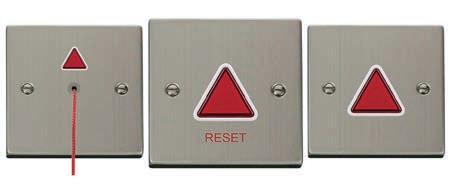
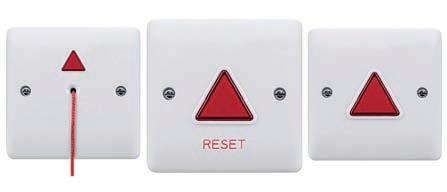
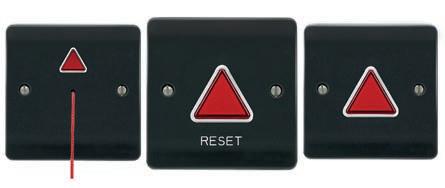
Lucent Square, a new residential development in Leeds, has been equipped with Advanced’s EvacGo evacuation alert system to enhance resident safety and ensure compliance with the BS 8629 Code of Practice.
Covering 54 apartments across six floors, the system features a standalone EvacGo panel located at the main entrance and provides fire and rescue services with a reliable method of alerting residents in an emergency. As part of the fire strategy for the development, the installation of an evacuation alert system was a key requirement to ensure the highest levels of safety.
S&R Electrical Contracting Services, responsible for the full installation, selected Advanced’s EvacGo system due to its compliance with BS 8629 and its reputation for reliability. This is the first time the team has installed EvacGo and, following the completion of this project, the company now highly recommends it based on its experience.

As with all EvacGo systems, the panel at Lucent Square is housed inside a secure STS 205-certified enclosure with a BS EN 1303-compliant lock and key mechanism, ensuring that only the fire and rescue service can access the controls. This minimises the risk of tampering while guaranteeing that evacuation procedures can be implemented efficiently when needed.
Steve Greenwood, Director at S&R Electrical Contracting Services, says, “This was our first installation of an EvacGo system, and we were very impressed with its ease of use and straightforward setup. Advanced’s reputation in the industry gave us full confidence in specifying their system for this project, and it has proven to be a great choice.”
Shaun Scott, Emergency Evacuation Systems Application Engineer at Advanced, says, “We are pleased that our EvacGo system has been chosen for Lucent Square, providing an essential layer of safety for its residents. Evacuation alert systems are becoming increasingly recognised as a key safety measure for residential buildings, and it’s encouraging to see developers prioritising solutions that adhere to best practice.”
The installation of EvacGo at Lucent Square reflects the growing commitment to ensuring resident safety in high-rise buildings. With evacuation alert systems now mandatory for new residential buildings over 18m in England and Scotland, developers and installers are increasingly turning to trusted, compliant solutions such as EvacGo to meet regulatory requirements and provide peace of mind to residents and building managers alike.
All Advanced evacuation alert systems are custom manufactured to reflect each individual building’s evacuation zones, and have been developed to provide a bespoke solution that allows the fire services to control evacuation floor by floor according to the severity and location of the fire.

BS 8629 guidance states that the evacuation alert control system should be installed where a ‘stay put’ policy is in force, so that it can be used to facilitate a timely and ordered evacuation for all residents. By making it easier and safer for firefighters to inform residents of a change in evacuation strategy during an incident, evacuation alert systems are helping to transform fire safety for the occupants of high-rise residential buildings across Britain.
Advanced, advancedco.com






Pin point fire zones using MAGDUO’s intelligent 2-wire technology, which allows all devices on the same pairs of wires.










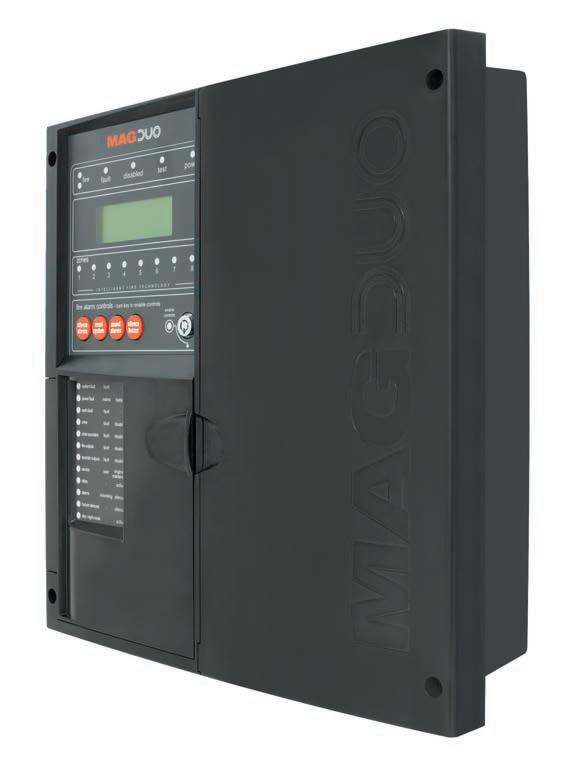
email:
Swindon Borough Council’s housing tenants are set to benefit from enhanced safety through a programme to replace existing fire and carbon monoxide alarms with upgraded Aico devices.
The new 3000 Series alarms will be fitted with sensors that detect heat, smoke and carbon monoxide. The units will replace existing devices with the ability to send notifications to the Council when they need testing, repairing or replacing, using Aico’s Ei1000G Gateway. Tenants will also have the option to receive these alerts via a downloadable resident app.
The four-year, £10.5 million upgrade programme, which started in September, has so far seen new devices installed in 1,190 council-owned properties.
Swindon Borough Council is the largest social housing provider in the Borough, owning and managing 10,383 homes including 31 sheltered housing schemes and four supported housing schemes.
Alongside these new alarms, approximately 10% of all the properties benefitting from the works will also receive Aico’s EI1025 Environmental Sensors, which measure temperature, humidity and carbon dioxide levels. These will provide the Council with real-time data and alerts,
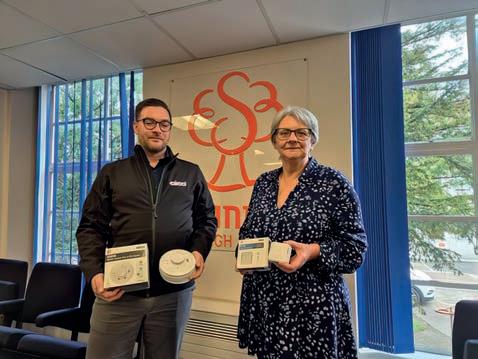
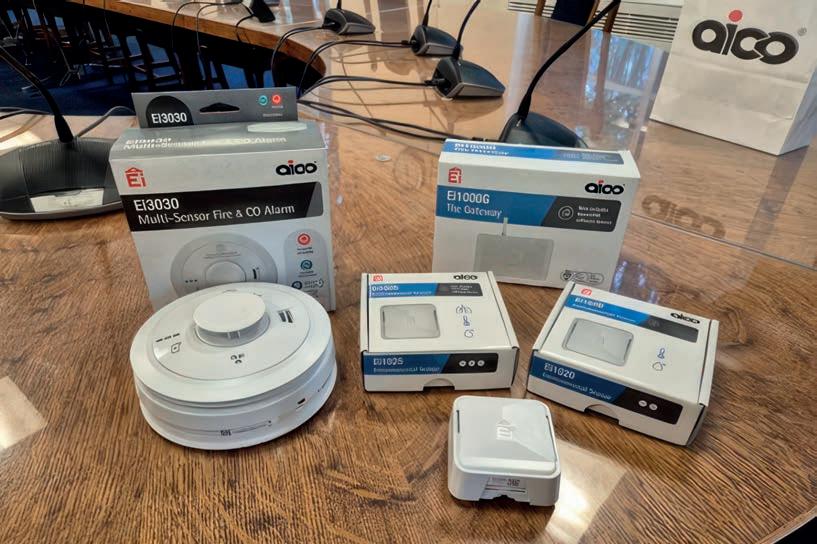
enabling them to take proactive measures to maintain safe and healthy living spaces.
The four-year upgrade programme is included within the Council’s new asset management strategy, agreed by cabinet members in February. The strategy outlines plans to invest £250m into the maintenance and improvement of Council owned homes between 2025 and 2030, at no cost to services funded through Council Tax.
Councillor Janine Howarth, Swindon Borough Council’s Cabinet Member for Housing, says, “This £10.5m upgrade programme will see fire and carbon monoxide alarms upgraded in all council-owned houses over the next four years.
“The devices will help our housing team to enhance tenants’ safety and peace of mind by sending notifications when the alarms need testing, repairing or replacing.
“Meanwhile, the Environmental Sensors being installed in a prioritised list of properties will provide alerts to tenants so they can take action to maintain a safe and healthy living space. Our housing team will also have access to these so we can be proactive in providing support and advice.”
Peter Price-Higgott, Relationship Manager at Aico says, “We’re delighted to collaborate with Swindon Borough Council on their upgrade program.
Following a successful project to trial the technology, they have experienced the benefits of using our products to improve wellbeing and enhance resident safety within their homes. We look forward to continuing our support throughout the project and beyond!”
Aico, aico.co.uk







Simple and intelligent, the 3000 Series provides whole property coverage.
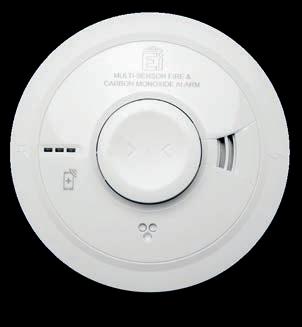
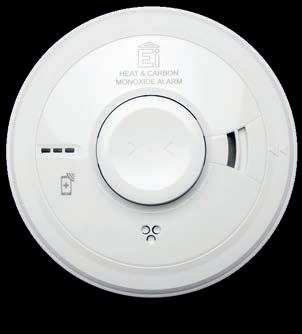
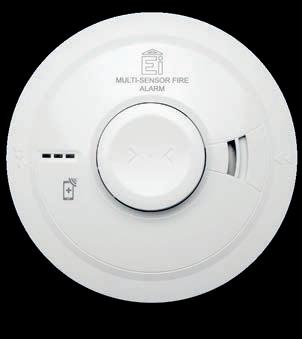
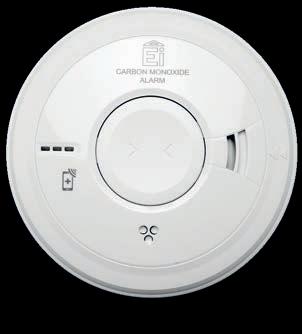
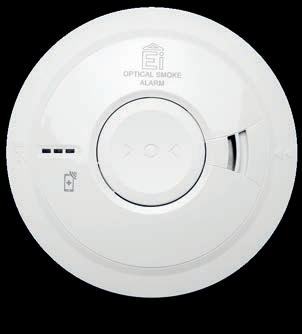
The technologically advanced 3000 Series includes both Multi-Sensor and Single-Sensor alarms, detecting Fire and Carbon Monoxide from just one range, while maintaining the simplicity that installers love.
Smart, connected and future-proof.
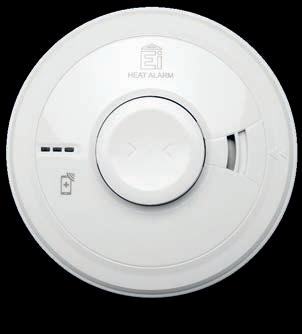
Add the Ei3000MRF for wireless interconnection and data extraction via the Ei1000G Gateway
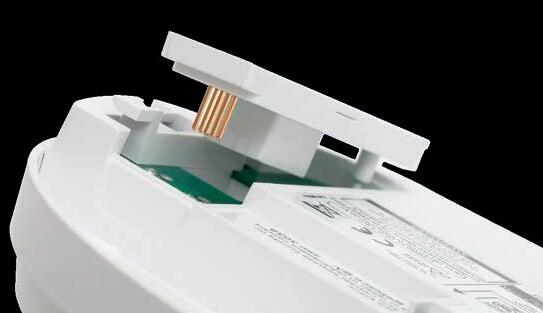
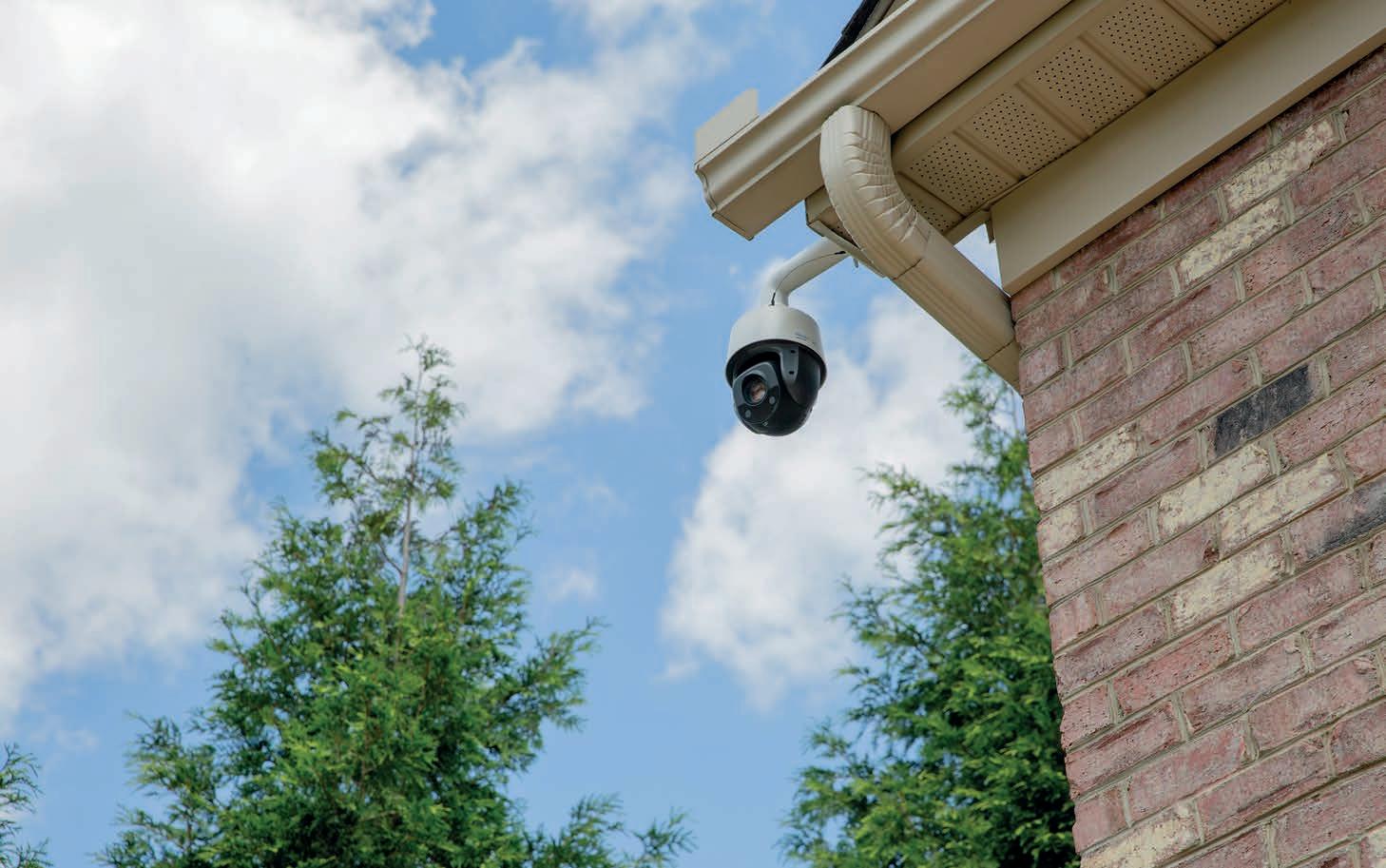
Stephen Streater from Arcadia shares his insights into why security should be a crucial part of your toolkit, the challenges involved and how it can open new revenue streams.
For many electrical contractors, security has traditionally been viewed as a separate discipline, often left to dedicated alarm companies. However, as smart home technology continues to evolve – and more electricians incorporate this tech into their portfolio – the integration of security solutions has become an essential component of a comprehensive home automation system.
Home security is more than just a standalone alarm system – it can be seamlessly integrated into the broader smart home ecosystem to provide enhanced protection and convenience. Many high-end clients now require monitored or police-response alarms as a condition of their home insurance policies. However, integrating security effectively requires specific qualifications and compliance with various regulations, making it a more complex offering than standard AV installations.

From a practical standpoint, some electrical contractors are already deploying technologies that enhance security, including:
• Occupancy sensors to detect movement
• CCTV systems with motion-activated recording
• Smart lighting that can deter intruders by simulating occupancy

• Integrated speaker systems for deterrent audio alerts
By leveraging these existing components, electricians can create a more intelligent security system that reacts dynamically to threats, rather than relying on traditional alarms that only trigger after an intrusion has occurred.

One of the biggest hurdles for integrators is dealing with existing security systems that may not be compatible with smart home platforms such as Control4. Many alarm companies use proprietary systems that offer limited integration capabilities, reducing the flexibility of the overall smart home setup.
While some basic integration can be achieved using contact closure interfaces – allowing the security system to trigger home automation modes – full API integration provides a much more robust and responsive security solution.
This level of integration enables actions such as:
• Activating specific lighting zones when motion is detected
• Sending real-time alerts and camera feeds to homeowners
• Pulsing lights to disorient intruders
• Broadcasting security messages through the home’s audio system
The lack of direct integration with certain alarm brands can be an obstacle, but choosing the right security technology can help overcome these limitations.
Stephen’s decision to expand into security integration was driven by the need to maximise revenue from existing clients. By adding CCTV and alarms to his service offerings, he created an additional revenue stream without having to seek new customers. While the profit margins on security hardware may not be as high as those on AV products, the additional services add value to his overall offering.
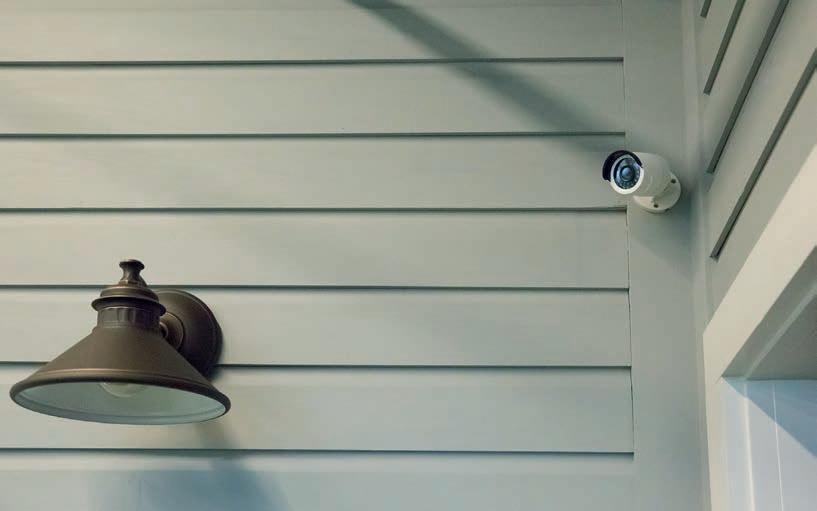
Furthermore, security integration strengthens client relationships. Offering maintenance and monitoring services as part of a broader smart home service plan creates recurring revenue opportunities. This can help transform an AV integration business from a lifestyle operation into a scalable and potentially saleable company.
One of the reasons many professionals shy away from security is the regulatory burden. For insurance-approved monitored alarms, stringent accreditations from bodies like SSAIB (Security Systems Alarm Inspection Board) or NACOSS (the National Approval Council for Security Systems) are required. However, not all clients need or want these high-level certifications.
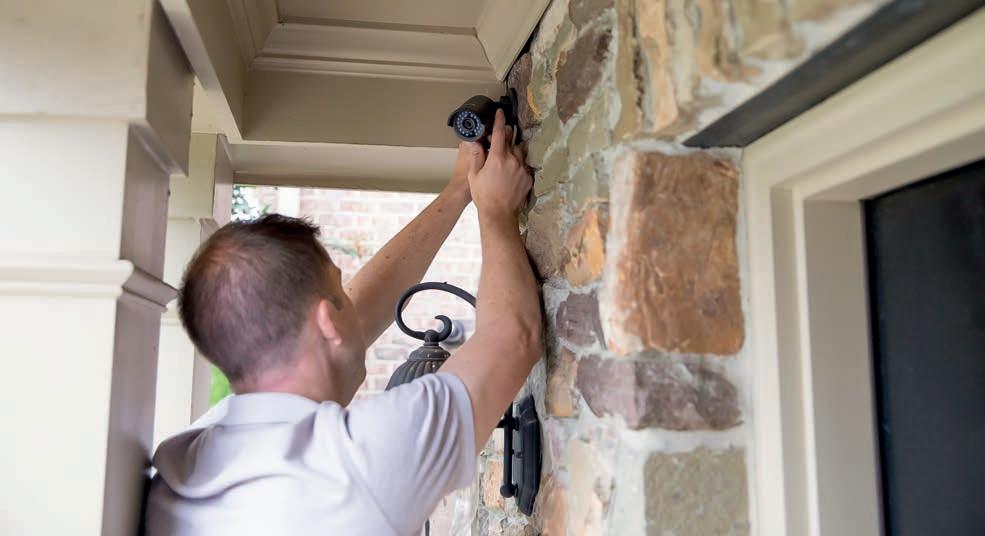


Many homeowners are satisfied with self-monitored smart alarm systems, which offer advantages such as:
• Immediate real-time alerts to keyholders
• Direct CCTV access for verification of incidents
• Elimination of false alarm penalties associated with police-monitored alarms
For clients who do require a graded system, partnering with third-party monitoring services is a viable solution. This allows electrical contractors to offer compliant security solutions without needing to undergo the extensive training and certification processes required for police-monitored alarms.
Choosing the right security products is crucial for seamless integration. Stephen opts for brands such as Luma for CCTV. Luma is an ADI | Snap One brand that integrates seamlessly with OvrC, a cloud-based remote management platform that is embedded with Control4, which enables remote set up, monitoring and troubleshooting of smart home devices. This ensures better technical support and simplifies network management, as IP cameras require careful bandwidth handling. For electrical contractors who work in the smart home sector, security is no longer an optional extra – it is an integral part of creating a truly smart home. By leveraging existing automation expertise, electricians can offer security solutions that go beyond traditional alarms, providing proactive deterrents and intelligent responses to threats. While challenges exist, the potential revenue and strengthened client relationships make security a worthwhile addition to any integrator’s portfolio.
ADI | Snap One, snapone.com/emea Arcadia, arcadia-systems.co.uk
The benefits of the partnership approach adopted by Siemens have been demonstrated in a project by EDSB to develop a fire detection and air sampling solution for a new warehouse operated by one of the UK’s most prominent retailers.
The facility in Warrington saw some 1,000 devices installed to protect the 81,570m2 logistics warehouse area and its ancillary offices. Given the scale of the warehouse, which features high ceilings extending up to 43m at the highest point, the detection system needed to provide comprehensive coverage across the entire space. EDSB’s solution included air sampling with low-level test points and pipe runs exceeding 200m, ensuring the system could accurately detect fires without interference from environmental conditions.
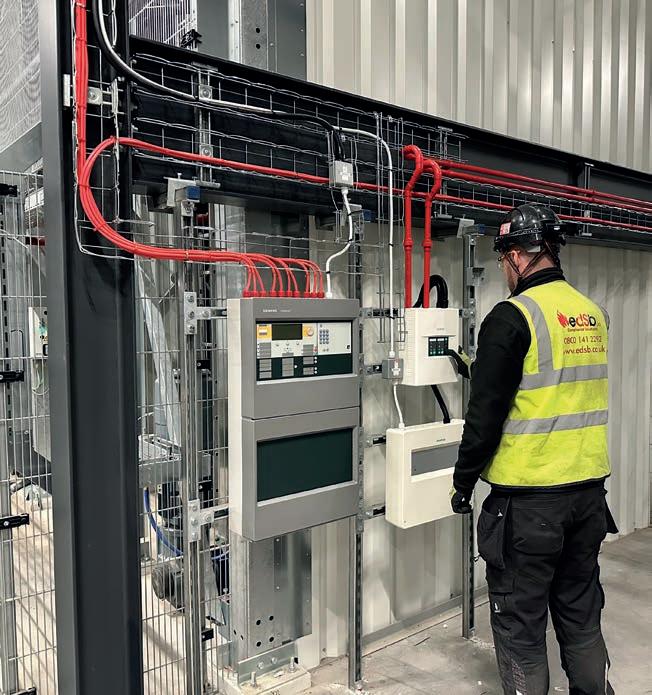
Before stepping foot on-site, EDSB’s in-house design team was tasked with creating a compliant BS:5839 Part 1 system, aligned with the Category L1/P1 standards. Given the building’s complexity – including multiple mezzanine levels, cold storage areas, aerosol and battery storage, automated racking systems and comms rooms – the design required a range of detection technologies tailored to each area’s specific needs and environmental conditions.
Working with Siemens, after reviewing the 3D BIM models, specifications and fire strategy information, EDSB proposed a combination of air sampling systems, infrared linear beams, multi-sensor detectors, triple infrared flame detectors and gas suppression systems to ensure comprehensive coverage and compliance.
One of the main focuses of the brief was to develop a zero-false-alarm system, given the considerable costs associated with four-hour halts in production that could arise from unnecessary shutdowns. In consultation with Siemens, a solution was designed which saw a hybrid fire detection system capable of identifying environmental factors such as dust, smoke and exhaust fumes that could trigger false alarms.
Also central to the fire safety considerations was the high ceiling space which presented a particular challenge for traditional smoke detection: ‘stratification’ was identified as an issue whereby the smoke plume generated by a fire cools as it rises, often resulting in it having insufficient buoyancy to reach the roof and activate detectors. This was overcome by using Siemens ASD (Aspirating Smoke Detection), with the first stage of the installation process undertaken once the roof structure was in place. EDSB installed pipework and air sampling units in strategic positions across the warehouse to cover all areas, including the high ceiling zones. Following installation, the entire system was tested and calibrated to ensure optimal performance.
Geoff Wain is a Senior Project Manager at EDSB. He comments, “This project has been a coordinated effort from the design stage through to installation and
commissioning, primarily utilising in-house engineers. A dedicated site project engineer handled daily communication with our client to ensure that the phased works were completed on time, delivering the project to the end client. The high standard of workmanship across the site is a testament to all those involved.”
Alistair Lyon, EDSB’s Install Leader on the project, says, “I believe what we have achieved is something that should be celebrated. This has been a long, challenging and complex installation and we have delivered an end product that we can all look back on and say we are proud to have been a part of.”
The facility has a Desigo CC building management head end which is able to display the information relating to the fire system and allows operators to visualise it. Desigo CC is also used on site to manage the HVAC systems, meaning all the building operation data can be viewed via a single interface. This leads to operational and energy efficiency savings. The on-site computerised maintenance management system (CMMS) is also integrated into Desigo CC, with its open architecture allowing this integration to happen.
Siemens’ John Fennah adds, “At Siemens we always strive to work closely with our partners, and this application is an excellent example of how such an approach can achieve the best solution. By understanding and addressing the specific challenges presented by this warehouse, EDSB were able to match the appropriate technology with the different requirements, arriving at an integrated system which optimises fire safety while effectively managing the HVAC.”
In total, the site comprises nine networked Siemens fire panels, 34 Siemens aspirator panels, and more than 30 high-level Siemens beam detectors. The warehouse is equipped with 200 interfaces that control various shutdowns and integrate with third-party systems. Special care was taken to ensure the system provides comprehensive coverage.
Siemens, siemens.com






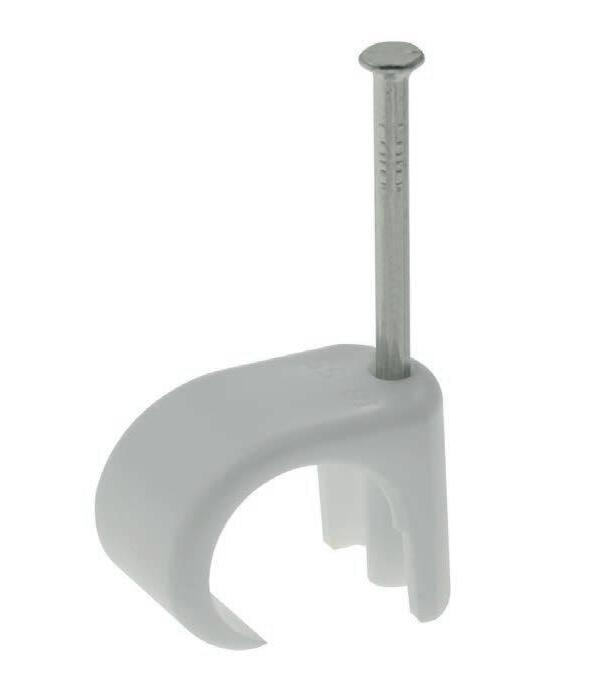
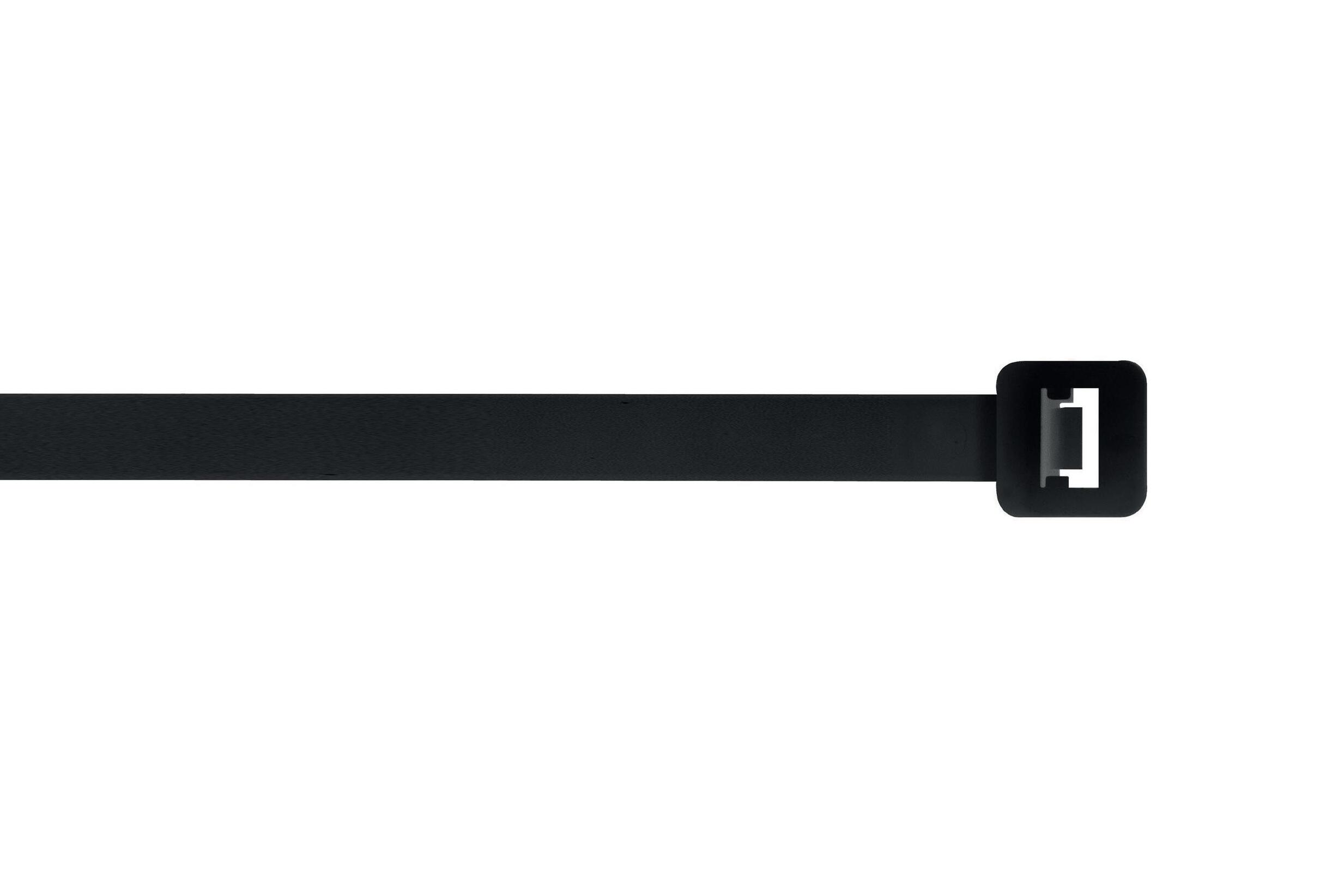

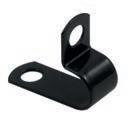

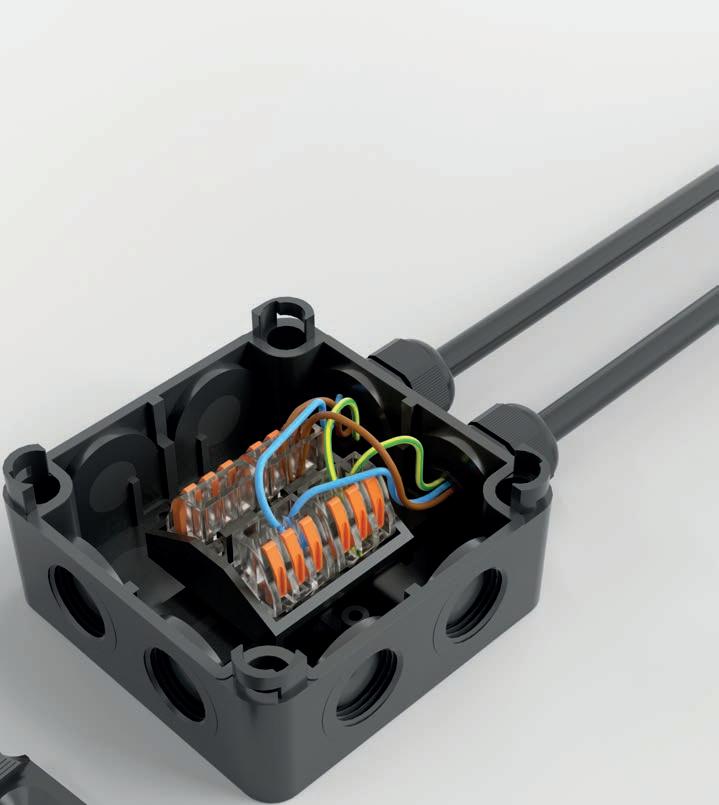


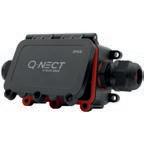
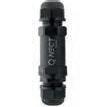

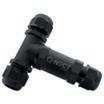
Lithium-ion batteries are now a common feature in millions of homes across the UK, powering everything from electric bikes and scooters to laptops, power tools and smart devices. But as their popularity has grown, so too has the number of fire incidents linked to these powerful batteries. Jay Singhera, Fire & Rescue Services Account Manager at FireAngel, discusses what electrical professionals need to know, and do, to mitigate the risks these batteries present.

According to UK Fire and Rescue Services, lithium-ion battery fires are one of the fastest-growing causes of domestic incidents. Research shows that fires caused by lithium-ion batteries have increased by 46% in 2023 when compared to 2022*, a figure that highlights the urgent need for proactive safety measures. For electrical engineers – who are often on the front line of fire prevention – this presents both a challenge and an opportunity to rethink detection strategies and play a key role in reducing risk.
Fires involving lithium-ion batteries behave very differently from more familiar types of domestic fires. They can erupt suddenly, reach extremely high temperatures in seconds, and emit toxic gases. Unlike traditional fires, there’s often no slow build-up of smoke or heat – just a sudden onset of flames caused by a process known as thermal runaway, which is a chain reaction that occurs within a lithium-ion battery when it becomes mechanically damaged, electrically overcharged or subjected to elevated ambient temperatures.

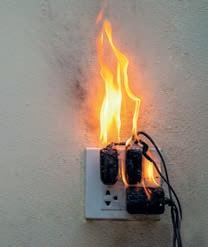
These fires commonly begin during charging, especially when chargers are faulty, incompatible or left unattended overnight. Bedrooms, hallways and garages, where devices are often charged, are increasingly becoming hotspots for battery-related incidents. This puts occupants, particularly those who are asleep at the time, at significant risk unless the right detection and alarm technologies are in place.
To counter this threat, it is essential that detection systems are specified with these modern fire risks in mind. While smoke alarms remain crucial, electrical engineers should consider supplementing them with heat alarms in areas where lithium-ion devices are typically stored or charged.
Even more important is ensuring that alarms are interlinked. In the event of a fire starting in a hallway, a standalone alarm may not be heard by someone sleeping upstairs, but an interconnected system will ensure that all alarms throughout the home sound simultaneously, buying crucial seconds for escape. Where hardwired installations are not possible, battery-powered interlinked alarms offer a viable and flexible alternative.
The need for whole-home audibility is especially critical in larger properties, HMOs and social housing settings, where residents may not be immediately aware of alarms sounding in communal or remote parts of the building.
While upgrading alarm systems is an important step, it’s equally vital to combine this with education. Electrical engineers and contractors have a key role to play in highlighting safe usage and charging practices to occupants, particularly in properties where vulnerable individuals live. Simple messages such as avoiding overnight
charging, using only manufacturer-approved chargers, and not charging devices on soft furnishings can go a long way towards preventing serious incidents.
Where budgets and infrastructure allow, connected systems that enable remote monitoring are increasingly being explored by landlords and housing providers. These technologies can flag alarm faults, low battery warnings or even activation alerts in real-time, making them particularly valuable in homes occupied by people at higher risk, such as the elderly, those with mobility issues or tenants with additional support needs.
The rise in lithium-ion fires is unlikely to slow in the short term. As the electrification of transport, the growth of smart home devices and the demand for portable tech continue to reshape modern living, batteries will remain an ever-present feature in domestic environments. For electrical engineers, this means staying informed, not only about changes in fire safety legislation but also about best practices in detection, prevention and occupant education.
Technology alone can’t tackle the issue. Effective fire safety in the age of lithium-ion power relies on the expertise of professionals who understand how people use their homes, where risks are most likely to occur, and how to design systems that provide the earliest possible warning. By taking a proactive approach, using well-placed alarms, interlinked detection systems and clear communication with residents, engineers can play a pivotal role in protecting households from the unique dangers posed by lithium-ion battery fires.
FireAngel, fireangel.co.uk
*https://www.britsafe.org/ safety-management/2024/fires-caused-by-lithiu m-ion-batteries-up-46-last-year









C.K Tools have been the tools of choice for professionals for over 100 years.
As leading manufacturers in the industry, we are committed to producing quality, innovative and reliable products; both now and in the future. The forge is lit...


COMING SOON

David

The electrical contracting sector is at the forefront of the UK’s transition to cleaner, more sustainable energy solutions. The electrification of heat has started, and as the government pushes for net zero targets and looks to phase out gas boilers in new homes over the next three years, the demand for energy-efficient, low carbon heating solutions is rapidly increasing.
For contractors, this shift presents both a challenge and an opportunity: keeping up with evolving regulations while delivering systems that are not only sustainable but also practical and cost-effective for end users. Heat pump technology is playing a vital role in this transformation, offering a highly efficient and reliable alternative to traditional fossil fuel heating and hot water systems.
Unlike conventional electric or fossil fuel-based systems, heat pumps work by extracting heat from the air or ground, using minimal electricity to generate significant thermal output. This process makes them an ideal choice for residential settings, where energy efficiency and long-term cost savings are key considerations. For electrical contractors, the rise of heat pump technology presents an opportunity to strengthen their service offering by integrating these innovative solutions and staying ahead of industry trends.
The UK Government’s push for low carbon heating has made heat pumps a key solution for meeting new building regulations. With stricter efficiency standards and sustainability targets, developers are increasingly specifying heat pumps in new builds to ensure compliance and reduce
carbon footprints. Electrical contractors who can integrate these systems into new-build projects will be well-positioned to support developers in delivering energy-efficient, regulation-compliant solutions.
In the retrofit market, rising energy costs and government incentives like the Boiler Upgrade Scheme are driving homeowners and businesses to switch to heat pumps. While the scheme doesn’t apply to hot water systems, it makes replacing traditional heating systems more financially viable for eligible properties. Electrical contractors with the skills to install heat pumps in retrofit projects can take advantage of this growing demand, offering customers a more sustainable and cost-effective heating alternative.
One of the most advanced systems on the market is the Edel hot water heat pump from Dimplex, designed specifically to meet the growing demand for energy-efficient domestic hot water solutions. With its ability to deliver significant energy savings compared to conventional water heating methods, Edel is redefining how hot water is generated in homes. By using heat pump technology to extract warmth from the surrounding air, Edel minimises electricity consumption while ensuring a consistent and reliable hot water supply.
For electrical contractors, ease of installation is so important when specifying heating and hot water solutions. Edel has been designed with simplicity in mind, making it a straightforward addition to both new-build and retrofit projects. Its compact design allows for flexible installation in a range of property types, while its ultra-quiet operation ensures minimal disruption for homeowners and occupants.

Beyond installation, long-term efficiency and sustainability are key selling points for heat pump technology. With rising energy costs and increasing pressure on homeowners to reduce their carbon footprint, demand for high-performance, low-energy solutions continues to grow.
The shift towards electrification is not just about meeting regulatory requirements; it is about delivering smarter, future-ready solutions that benefit both consumers and the wider environment. As technology continues to evolve, contractors will play a vital role in shaping the future of heating and hot water provision. By embracing innovations they can stay ahead of industry trends, enhance their service offering and contribute to a more sustainable built environment.
With government incentives and funding schemes supporting the adoption of heat pump technology, there has never been a better time for electrical contractors to expand their expertise in this area. Whether working on residential or public sector projects, integrating advanced heat pump solutions can provide a competitive edge while delivering tangible energy and cost savings for customers.
As the industry continues to adapt to new energy efficiency standards, those who choose to invest in knowledge and skills around heat pump technology now will be best placed to meet the needs of an increasingly eco-conscious market.
Dimplex, dimplex.co.uk



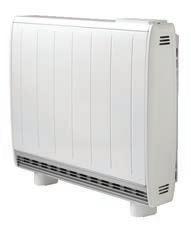
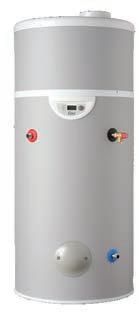

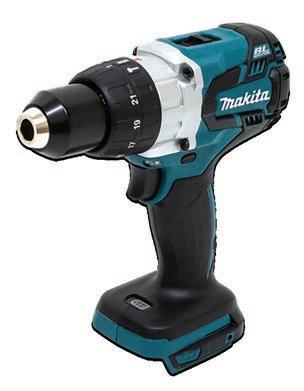
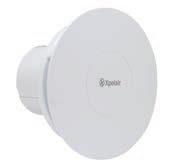

Choosing the right intermittent extract fan for a home is crucial for maintaining a comfortable and healthy living environment. Paul Williams, Domus Ventilation’s Product Manager, outlines five essential steps to help you make an informed decision.
Intermittent extract fans are a cost-effective, easy-to-install means of ventilating bathrooms and kitchens. They provide rapid local extraction of stale, damp air, which in the case of the latter reduces condensation and the opportunities for mould to grow.
Intermittent extract fans are available in axial and centrifugal models. Axial fans incorporate impellers that force air to move parallel to the shaft around which the impellers rotate. Centrifugal fans force air to move at right angles to the intake of the fan using centrifugal force.
Duct-mounted inline fans are also available in both axial and centrifugal formats, as well as mixed flow models which move air in both axial and radial direction relative to the shaft. Unlike standard fans, inline fans are not installed within the room itself, but slightly removed, such as in the ceiling void or attic, connected to the room via ducting mounted with a decorative grille at the end.
Axial and centrifugal fans have been designed to cover most domestic extract fan requirements, but which type you opt for depends on a number of key factors:
Both fan types are suited to bathrooms and kitchens, but the location of those rooms within a property will help determine which you select.
If the room has an external wall, then an axial fan will most likely be suitable as these work best with short duct runs, typically no more than 1.5m, which connect directly to an external outlet or grille.
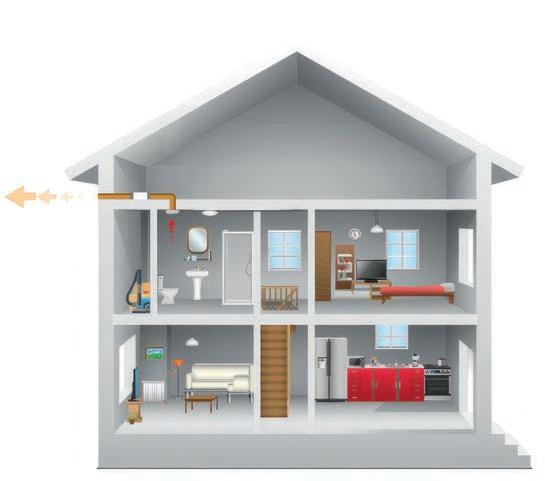

If the room is in the centre of house, a longer duct run will be required. Here, a centrifugal fan would be more effective as these produce more pressure to overcome resistance encountered in longer duct runs (generally up to a maximum of 6m).
Inline fans have also been designed for longer duct runs and, because the fan itself is installed remotely, they are ideal for splash zones, such as in showers.
Revisions to Building Regulations, which came into force in 2022, require increased minimum flow rates across all property sizes. That means more powerful and efficient fans need to be used, with a minimum extraction rate for a bathroom extractor fan being 15l/s. Consult the manufacturer’s performance curve, which shows the relationship between the static pressure capabilities of a fan compared to its extraction rate, plus pressure loss in ducting, to determine the final extraction rate.
The physical size of the fan also matters. Fans come in 100mm and 150mm sizes. Bathrooms that are greater than 9m², and/or are subject to heavy usage, should be fitted with the larger size fan.
Building Regulations Part L states that Specific Fan Power (SFP) must be no higher than 0.5 Watts per litre per second (W/l/s). With extract volume rates up to 48.8l/s but SFP down to 0.38W/l/s, Domus Ventilation’s latest Axial fans combine high performance and energy efficiency.

If cost is the determining factor, then a basic timer and pull cord model which relies on the inhabitant activating the fan remains a solution. The next step up is PIR sensor based controls that activate the fan on the detection of movement, but these are less popular than they used to be. Becoming one of the most popular control options is the humidistat or combined humidistat and timer that react to a significant change in humidity. These are at a higher point than the other options but are the most effective.
Check the fan’s decibel rating and ensure it operates down to 32dB(A).
If you are looking to fit a fan in an open plan kitchen/diner/lounge, or in an en-suite, then a centrifugal fan or inline fan should be considered as these are generally quieter.
Use good quality, rigid ducting, rather than the inexpensive flexible ducting which creates air resistance and with which subsequent rattling can be heard. You can also insulate the ductwork on longer duct runs to reduce noise. A number of manufacturers provide installer-friendly duct kits which are definitely worth using.
Extract fans are not an expensive item, but they are an essential one for making a home a comfortable and safe place in which to live, so be sure to pick wisely.
Domus Ventilation, domusventilation.co.uk






Katie Plumstead, Group Marketing Manager at Scolmore Group company, ESP, looks at how understanding heating controls can help householders and businesses during the continued energy bills crisis.
Energy prices in the UK have recently risen due to an increase in the energy price cap set by Ofgem. In response to rising costs, Ofgem announced a 6.4% increase in the energy price cap from April 2025, bringing the average annual household bill to £1,849. This marks the third consecutive quarterly increase, driven mainly by wholesale gas prices and inflationary pressures.
Despite the growing contribution of renewables – wind was the UK’s largest power source in 2024 – gas-fired power stations still set the market price most of the time, leaving the UK vulnerable to global gas price fluctuations. To help mitigate rising energy prices, households and businesses can focus on both reducing consumption and finding ways to save on bills.
Heating controls regulate the temperature and operation of heating systems. When used correctly, they ensure that energy is only consumed when needed, avoiding unnecessary heating. Effective heating control can lead to a reduction in energy wastage, which directly translates into cost savings.
Householders are continuing to look at ways to reduce their energy consumption to help combat rising bills. Understanding how their heating system is performing and how they can make small changes to improve its efficiency is one consideration. Research shows that few people really understand their heating
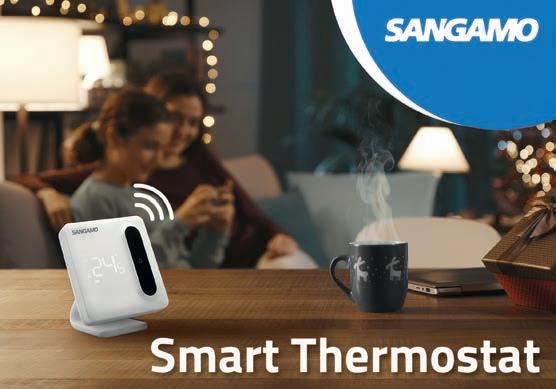
Modern controls are designed to allow you to get the best energy efficiency possible from the heating system
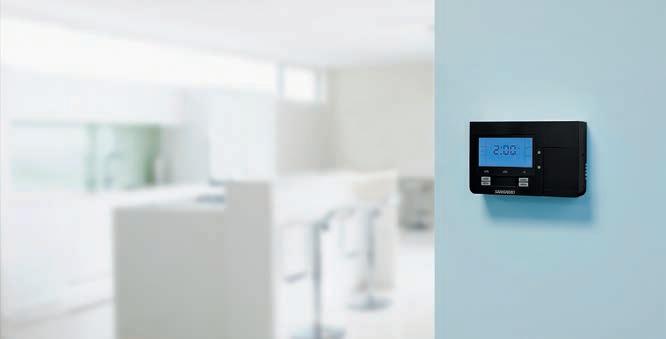
A smart thermostat is something that installers can easily add to their customers’ home heating
controls and many simply just don’t use them. This is where installers, supported by manufacturers and wholesalers, can play a part in advising and educating consumers on the best products for their circumstances and how to use them.
Modern controls are designed to allow you to get the best energy efficiency possible from the heating system. Look out for those with TPI (Time Proportional and Integral) control – a feature in thermostats that ensures the boiler fires for the shortest possible time in order to reach and maintain a room at the comfort level selected and thus optimise heating efficiency.
With a tamperproof thermostat the ‘temperature set’ dial is hidden away, and the set temperature can be maintained without interference. This is particularly advantageous for landlords or where the thermostat is installed in public areas. If a thermostat is set unnecessarily high, this will lead to uncomfortable temperatures and higher than necessary bills.
A programmable thermostat gives the user the option to schedule which time and day a call for heat can be made, thus reducing the possibility of wasting energy when the property is empty. This is advantageous when the occupants are at work and therefore do not have to remember to switch the heating on/off manually. A programmable thermostat ensures that the heating is not activated longer than required.

For some systems, immersion heaters are used. A metal element heats up a water cylinder and it can take between one to two hours to produce hot water. An immersion heater is manually switched by the user, which means there is the risk that they will not remember to turn it off. Timer controlled solutions can ensure that the immersion heater is switched off after a set duration. In addition, programmable timer controllers can be used to schedule exactly when the immersion heater is switched on, automatically ensuring hot water is available when required.
The evolution of smart technology continues to play a key role in energy efficiency. It provides homeowners with a real opportunity to make conscious decisions about how they heat their homes and what effect this can have on their energy bills. A smart thermostat is something that installers can easily add to their customers’ home heating, allowing householders to control and monitor the room temperature and thermostat activity from anywhere in the world, via an app on a smartphone or tablet.
Understanding and effectively using heating controls is a simple yet powerful way to reduce energy consumption and lower utility bills. By implementing smart heating strategies and utilising modern controls, individuals and business owners can achieve comfortable indoor environments while contributing to energy conservation efforts. Small adjustments in heating habits can lead to significant long-term savings and a reduced carbon footprint. ESP, espuk.com


Kensa has broken ground on an exciting new renewable heating project with the St Ives Community Land Trust, a local not-for-profit group working to provide affordable rental homes right in the heart of the world-famous town of St Ives, Cornwall.
This latest initiative
will see Kensa’s Cornwall-made ground source heat pumps installed in the former Old Vicarage, dating back to the early 1800s, which The Trust is regenerating into six new, modern affordable rental homes for the local community.
The redevelopment is primarily funded by St Ives Town Deal in partnership with Cornwall Council and will be managed by Mitchell & Son Construction. It involves drilling five boreholes in the property’s rear garden to access renewable heat energy, which the heat pumps will harness. Due to the Vicarage’s town centre location, the Cornish drill rig had to travel through the building to reach the drilling location.
Scheduled for completion later this year, each new home will feature a compact Kensa ground source heat pump discreetly housed within the property. A combination of Kensa Shoebox NX and Shoebox heat pumps will be installed to deliver highly efficient, low carbon renewable heating and hot water for each property, helping to keep residents’ energy bills and carbon footprints low.
Installing ground source heat pumps in the mix of one and two-bedroom flats is expected to reduce carbon emissions by over 80% compared to heating them using conventional gas systems.
By adopting Kensa’s energy-efficient technology, the project will achieve zero carbon emissions at the point of use and showcase how ground source technology can be used in both urban locations and older properties.
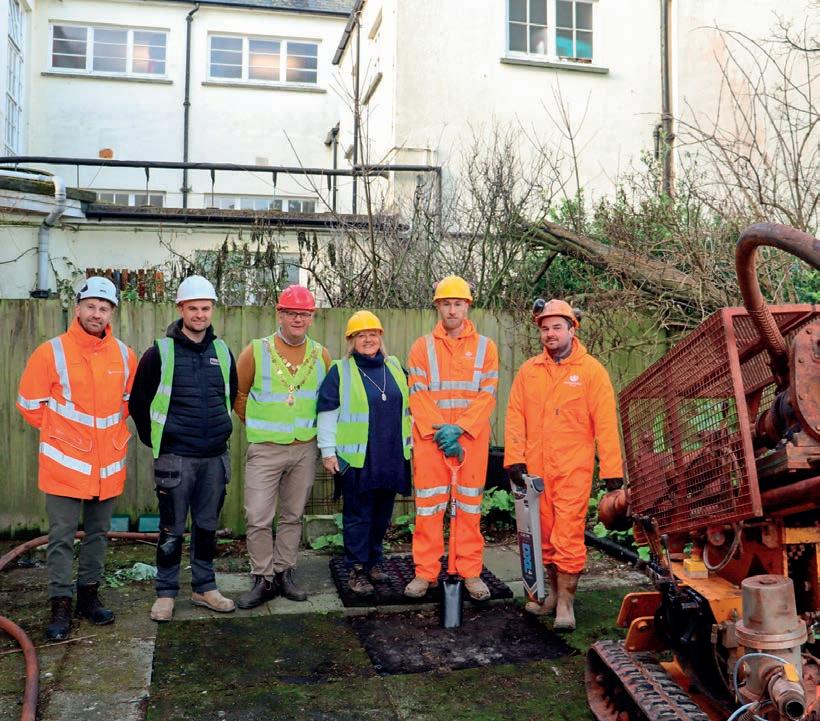

Stuart Gadsden, Commercial Director at Kensa, says, “We’re really excited to be working with the St Ives Community Land Trust on this project. We’re often told that old properties aren’t suitable for heat pumps, and this is another in a long list of examples proving that wrong.
“Once complete, residents will enjoy the benefits of our ground source heat pumps – one of the most effective low carbon heating solutions available today. Our systems’ high energy efficiency will ensure year-round comfort with heating and hot water available whenever needed, without concerns about soaring energy costs or environmental impact.
“As a Cornwall-based company, it is particularly rewarding to contribute to a community-led project so close to home, and we look forward to working with The Trust to modernise this remarkable period property for 21st-century living.”
Jill Block, Project Lead at St Ives Community Land Trust, says, “We wanted to reduce the carbon emissions of our building and seek to reduce the overall costs to our tenants.

“Our tenants will be living in well-insulated homes with the benefit of future energy cost savings. The Trust expects to benefit from reduced maintenance costs over the life expectancy of GSHP equipment compared to alternative options, thereby supporting our ambition to continue to provide affordable rental homes in the most cost-effective manner for our tenants over a much longer term.
“For every unit of electricity used by the heat pump, three to four units of heat are captured and transferred. In effect, this means a well-installed GSHP can be 300-400% efficient in terms of its use of electricity.
“At this efficiency level, there will be 70% lower carbon dioxide emissions than for a gas boiler heating system. If the electricity is provided by renewable energy, then carbon emissions can be reduced to zero. Our view is that we wanted to do the best for our local community that we can.”
Kensa, kensa.co.uk



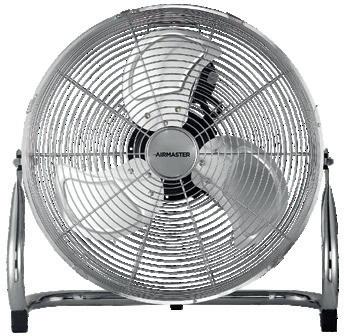
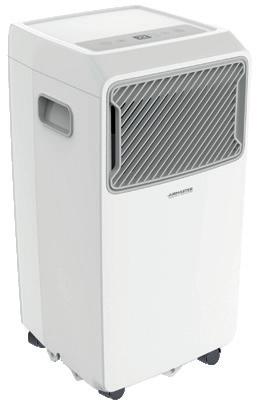
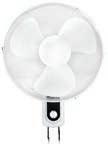
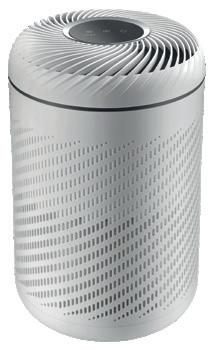
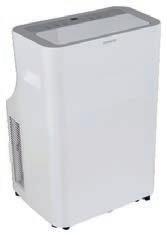
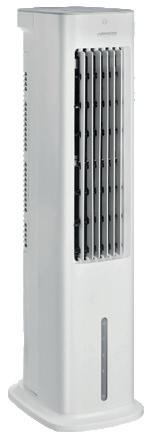
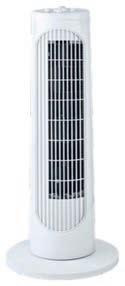
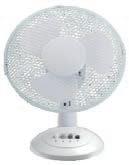
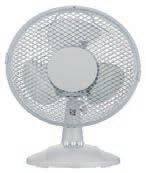


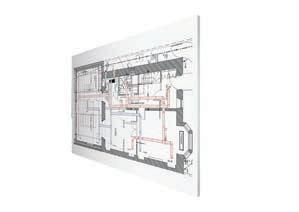
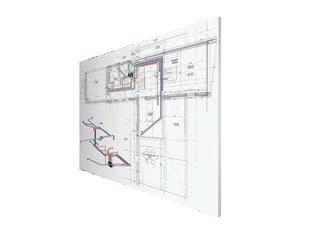

In increasingly busy times, households are looking for a peaceful home environment to relax in. Katie Mairs, Channel Marketing Manager at Vent-Axia, explains how silent bathroom ventilation has become popular and outlines tips on how electrical contractors can achieve it.
In the busy world we live in, our homes are increasingly becoming our place of sanctuary. As a result, demand for quieter products in the home is on the rise. According to the National Noise Report from Quiet Mark, 84% of respondents said it is important to have quiet time to recharge themselves, and what better place to recharge than an oasis of calm in a peaceful bathroom.
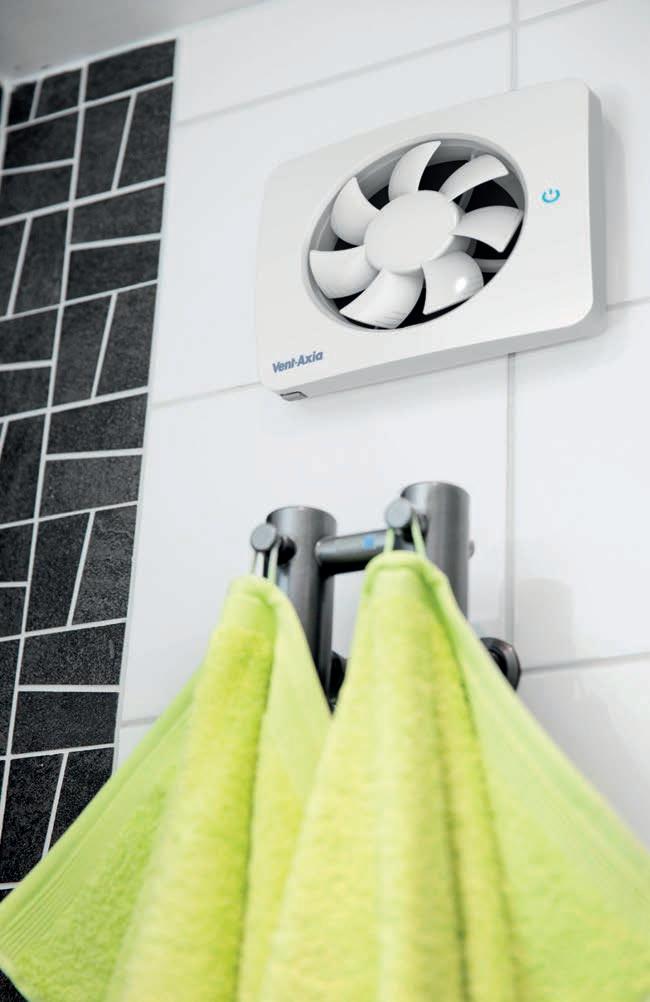
It is true that eliminating the damaging and unhealthy effects of condensation and mould is an essential role of bathroom ventilation, but this alone is no longer enough. Households want to be able to take a relaxing bath or shower without the constant drone of a noisy fan. Quiet fans are therefore becoming increasingly popular.
However, with a wide range of low-noise fans now available, the question is what features electrical contractors should consider when choosing a quiet fan. There are many fans on the market that claim to be quiet, but what actually is ‘quiet’ when it comes to fan noise?
A good place to start when selecting quiet fans to install is to check the sound level in decibels [dB(A)]. An average extract fan operates at 35dB(A). This is loud in a confined space. Fortunately, there are now fans on the market that are only slightly louder than the sound of a pin dropping. For example, Vent-Axia uses its own sound laboratory to ensure the fans it designs are exceptionally quiet, with its Silent Fan range offering ultra-low sounds levels of just 12dB(A) – which is quieter than a whisper.
Meanwhile, the Vent-Axia Lo-Carbon Svara runs at only 17dB(A) on low trickle, and the Vent-Axia PureAir Sense offers silent continuous operation at just 19dB(A).
The Silent Fan and the Svara have both been awarded a Quiet Mark, the independent global certification programme associated with the UK Noise Abatement Society charitable foundation, which recognises the quietest solutions to unwanted noise. Third-party accreditation is attractive to consumers and it is a great way for electrical contractors to verify a fan’s sound levels. To check whether a quiet fan has a Quiet Mark award, electrical contractors can visit the online directory at quietmark.com.
There are other ways of reducing sound levels too. When selecting fans, ensure the fan fits the needs of the room – do not oversize a fan. The more powerful a fan, potentially the noisier it will be. Select fans with high-efficiency motors since the ball bearing technology used in them offers smoother and therefore quieter performance. They will also last longer, meaning the fan will not become

noisier over time. Meanwhile, variable speed models make installation simple, as electrical contractors can easily adjust the speed depending on a project’s individual needs, ensuring the right fan every time. This is especially helpful with long duct runs as a fan can be altered to achieve the required airflow. Usually, more airflow means more noise, but fans like the Silent Fan stay quiet even with longer duct runs and higher airflow.
Other great features to reduce noise include clever light sensors that recognise room occupancy through light movement and shadows – a delay-on feature that can be set to avoid the fan being triggered in the night during quick bathroom visits – and fans that do not trigger at ambient humidity changes in the night. Visual silence is also in demand, so for customers preferring a silent aesthetic, the Vent-Axia Silent Fan now has a discrete tile-like version, while the PureAir Sense offers minimal styling, clean lines and an optional cover that complements any modern bathroom.
Silence is not the only comfort issue in demand. Households are now more aware than ever of the air they breathe because of COVID-19. This has driven consumer demand for fans that make a real difference to IAQ. Whilst many fans effectively improve IAQ, there are now smart fans that offer app controllability for easy commissioning, as well as allowing households to control their ventilation, in addition to providing a host of other clever features. For example, an innovative app available with the Svara and PureAir Sense allows households to control their ventilation from the comfort of their sofa, unlocking a whole range of different functions to control their home’s IAQ, such as silent scheduling and automatic cycles, offering flexible ventilation to suit a household’s lifestyle.
As our lives become more frenetic, the desire for a calm, healthy home environment is only going to increase. Electrical contractors who install bathroom fans that offer silent operation, as well as additional features such as odour-sense technology, app control, variable speed options and intelligent sensors, can be sure that they have the right solution for a comfortable, peaceful home.
Vent-Axia, vent-axia.com


The latest LED lighting and control systems offer a wealth of opportunities to enhance the entire stadium experience for players, fans and broadcasters alike. Signify and Powercor’s partnership has successfully supported several major operators in improving their stadium experiences through innovative lighting solutions.
LED lighting provides high-quality, bright and uniform illumination, ensuring excellent visibility for the stadium’s approach, interior spaces and across the pitch. This clarity enhances both player performance and fan enjoyment. Additionally, LED lighting systems allow for dynamic light shows and the ability to tailor atmospheres to different events.
By consuming less power and offering a longer operational life, LED lighting significantly reduces a stadium’s overall energy consumption and carbon footprint, demonstrating a commitment to environmental responsibility. LED technology is renowned for its energy efficiency, consuming significantly less power than traditional lighting, leading to substantial cost savings for stadium operators.
LED fixtures from Signify and Powercor have a longer operational life compared to traditional metal halide or halogen bulbs, reducing the frequency of maintenance and replacements, lowering costs and minimising disruptions. Powercor’s LED lighting systems can seamlessly integrate with sophisticated control platforms,
such as Signify’s Interact Sports system. Connected systems enable real-time adjustments, allowing operators to create customised lighting effects and manage energy usage more effectively.
LED lighting meets the stringent requirements of modern broadcasting, providing bright, flicker-free illumination essential for high-definition and slow-motion replays. This ensures broadcasters capture every detail of the action, enhancing the viewing experience for audiences.
Powercor and Signify worked closely with an iconic stadium in the South East of England to address its rising energy costs and lighting needs. The stadium sought an extensive and innovative lighting upgrade solution to enhance sustainability and reduce maintenance expenses.
Using in-house products and systems, site surveyors, designers and installers, the team offered a comprehensive consultancy-led improvement programme for the stadium’s operators.
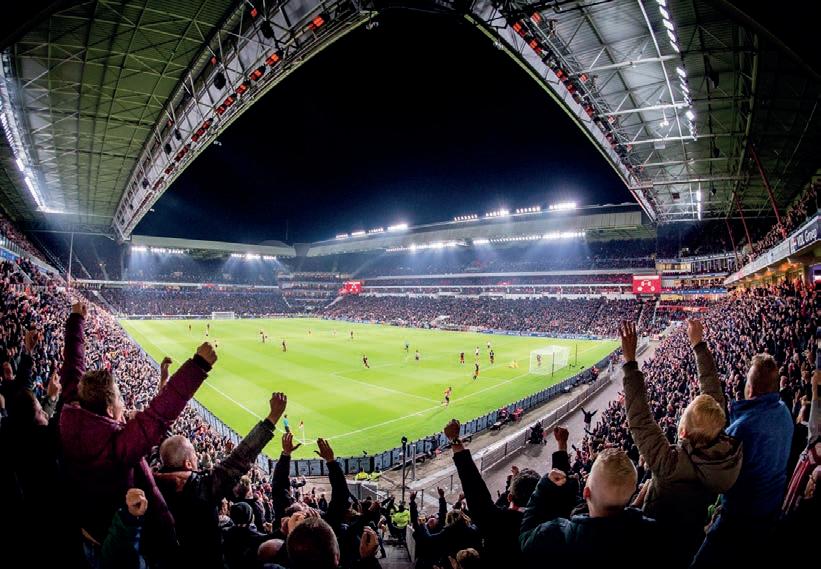
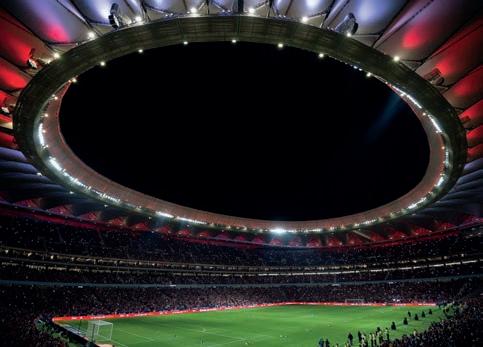
Over 7,000 luminaires were installed across the estate:
• Outside landmark feature lighting: 80 luminaires with full RGBW control via DMX control.
• Main entertainment hall/space: 700 luminaires, many with 3D printed bespoke light fittings.
• Phase 1 LED lighting upgrade: 1,000 luminaires within the stadium back-of-house areas.
• Phase 2 LED lighting upgrade: 5,550 luminaires within the stadium and hospitality boxes.
The installations delivered a significant 40% reduction in energy usage, leading to substantial savings on electricity bills. The upgrade improved energy efficiency and aligned with the stadium’s commitment to sustainability. The advanced LED technology ensures superior brightness, uniformity and colour rendering, enhancing the entire stadium experience.
“We have been working with Powercor and Signify on a number of lighting projects, but one deserves special attention,” says the Stadium Director. “Powercor was asked to replace 726 light fittings and all controls in under six weeks (with a Christmas break in between) in our main entertainment hall. During the first days of the project, we found out all the cabling between the control boxes (located on a different level of the stadium) and the fittings needed replacing. Powercor not only replaced all lights, controls and cabling in time, but a week ahead of the agreed completion date!”
Powercor, powercor.co.uk



Lighting controls have revolutionised the way we manage energy consumption and enhance wellbeing in commercial spaces. Paul Stearman from Greenlight Connexions explains how integrating intelligent lighting controls with energy-efficient LEDs can significantly reduce electricity bills, improve productivity and create healthier environments.
According to the Carbon Trust, in commercial premises lighting can account for as much as 40% of the electricity bill. This century we have seen a revolution in lighting technologies, not only in terms of energy-efficient light sources like LEDs, but also through the intelligent use of lighting controls.
Lighting plays an important role in our lives, especially in commercial settings where it directly impacts productivity, safety and comfort. However, it also significantly contributes to energy consumption.
The integration of lighting controls with LED technology has become a critical component in the journey toward sustainability and efficiency. Let’s look at how lighting controls work, the various technologies available, and the multiple benefits they offer – not only in reducing energy costs but also in enhancing ambience, wellbeing and sustainability.
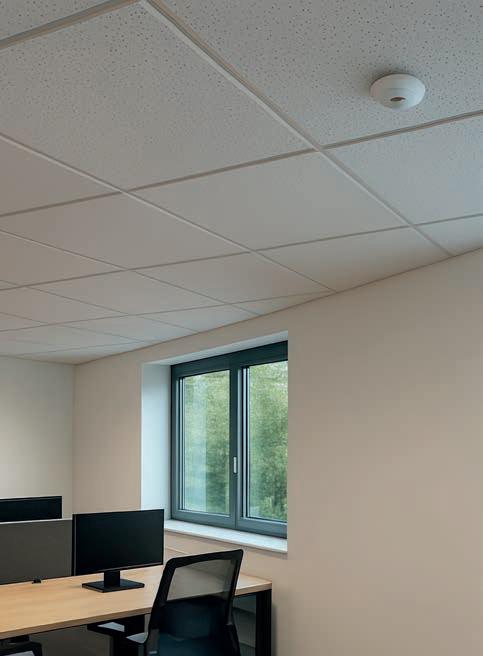
We have seen a revolution in lighting technologies this century
In the past, commercial buildings relied heavily on incandescent, fluorescent and other discharge lighting. These legacy systems are not only inefficient but also offer limited control over light output. The introduction of LED lighting has been a game changer. LEDs consume between 50% and 90% less electricity than traditional lighting systems, drastically reducing operating costs. However, the savings do not stop there. When LEDs are combined with intelligent lighting controls, energy consumption can be reduced by up to a further 75%.
This means that an office building that previously spent £100,000 a year on lighting could potentially reduce that to as little as £12,500 with the right upgrades.
Lighting controls are not a new concept. The basic On/Off switch has been around since the early days of electrical lighting. While simple, it depends on the user to manage the light, something that many, particularly children, often forget to do. Lights are left on unnecessarily, wasting energy and shortening the lifespan of the luminaires.
Walk through a major city at night and you’ll see many commercial buildings glowing long after workers have gone home. This widespread issue points to a lack of controls in lighting systems, resulting in massive energy waste and unnecessary light pollution.
The solution lies in automated lighting controls, systems that remove the need for manual operation, offering smarter, more efficient ways to manage lighting in commercial environments.
Modern lighting control systems utilise a variety of sensors and technologies that react to occupancy, time, daylight and user needs. Here are the most common and effective types:
• Presence and absence detection: Presence detection turns lights on and off automatically based on motion. Absence detection requires manual activation (usually via a wall switch) but automatically switches off after inactivity.
• PIR (Passive Infra-Red) sensors: PIR sensors detect motion by sensing

changes in infrared radiation, typically caused by people moving within a space. These are ideal for spaces like meeting rooms, corridors and toilets, where lights are often left on unnecessarily. When no movement is detected for a set period, the lights automatically switch off.
• Microwave sensors: Unlike PIR sensors that rely on line-of-sight detection, microwave sensors emit high-frequency electromagnetic waves and detect changes caused by movement, even through thin partitions like glass or plasterboard. These are more sensitive and can be used in areas where more precise control is needed, such as stairwells or storage areas.
• Ultrasonic sensors: Ultrasonic sensors operate by emitting sound waves at high frequencies and measuring the time it takes for the echo to return. Any movement within the area disrupts the echo pattern, triggering the lights. These are particularly useful in enclosed or irregularly shaped spaces where PIR sensors may not be as effective.
• Timed controllers: Timers can be used to turn lights on and off according to a schedule, such as switching off exterior lighting during daylight hours or setting internal office lighting to turn off after working hours. This method is highly effective for predictable usage patterns.
• Daylight and lux level sensors: Daylight is free so let’s try and utilise it. Also known as photocells, daylight sensors measure the amount of natural light in a space. When sufficient daylight is present, the artificial lighting is dimmed or turned off. Lux level sensors go a step further by maintaining a constant illuminance level – ideal for environments that require uniform lighting throughout the day, such as classrooms or laboratories.
• Dimming controls: LEDs are easily dimmable, and modern control systems can adjust lighting levels based on the time of day, occupancy or task requirements. Dimming not only saves energy but also extends the lifespan of the luminaires.
• Circadian lighting: This concept aligns artificial lighting with the natural human circadian rhythm. By adjusting colour temperature and intensity throughout the day – cooler, brighter light in the morning and warmer, softer light in the evening – circadian lighting helps regulate sleep patterns, improve mood and increase productivity.





























♦ Quad digital person detector with adjustable photocell and time lag functions
♦ A range of versions for different mounting options, detection areas and mounting heights
♦ Versions for Mains Switching, DALI or 0-10V dimming
♦ All settings and adjustments made via the DANLERS ISI app
♦ Programmable time-outs, setback light levels, fade rates and more
♦ Security settings available to avoid unauthorised programming
♦ Group control function and copy function to replicate settings
♦ Upgradable over-the-air for extra features such as asset tracking
Ceiling flush-mounted versions. Ideal for false or plasterboard ceilings.








Versions with mini detector head. Ideal for false or plasterboard ceilings, or for fitting into a luminaire. Separate power pack with connector.

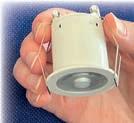
Batten-mounted versions with 20mm threaded spout for fitting onto a luminaire.
Ideal for energy-saving automatic lighting control
A range of surface mounted versions for high bay applications or for regular mounting heights.
For mounting onto a solid ceiling or onto a range of different mounting boxes. Options for wide area detection and for storage aisles.




For
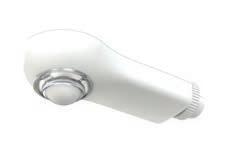
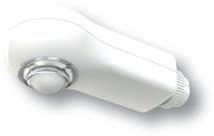
details,
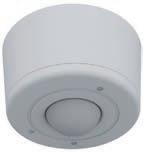
or

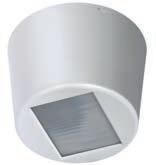

Well-designed,
There has been considerable improvement in sensor technology and with the variations outlined above, you need to select the right sensor with the right beam pattern for the job. A straightforward PIR sensor fitted in a warehouse may need to cover a wide area, such as where general work in an open space takes place or a narrow beam version to cover tall aisles with racking.
The benefits of lighting controls extend far beyond energy efficiency. The quality of light directly influences our physical and psychological wellbeing. Poor lighting can lead to eye strain, headaches, migraines, fatigue and even stress. On the other hand, well-designed, responsive lighting systems can enhance comfort and health.
By enabling features such as tuneable white lighting, users can adjust the light output to suit different activities – bright, cool light for focused work, and warmer tones for relaxation or collaborative environments. This personalisation of a space when using task lighting is particularly valuable in open-plan offices, healthcare environments and educational facilities.
Dynamic lighting also contributes to the mental health of occupants by mimicking natural daylight patterns, helping regulate hormones like melatonin and cortisol. In workplaces, this can translate to reduced absenteeism, higher productivity and improved job satisfaction.
LEDs, while efficient, can sometimes introduce flicker – rapid, imperceptible variations in brightness caused by poor-quality drivers or dimming systems. Flicker has been linked to headaches, eye strain, migraines and reduced concentration, especially in sensitive individuals. Stroboscopic effects of flicker can show machinery standing still when it is in fact still operational. This is obviously extremely dangerous in the manufacturing industry.
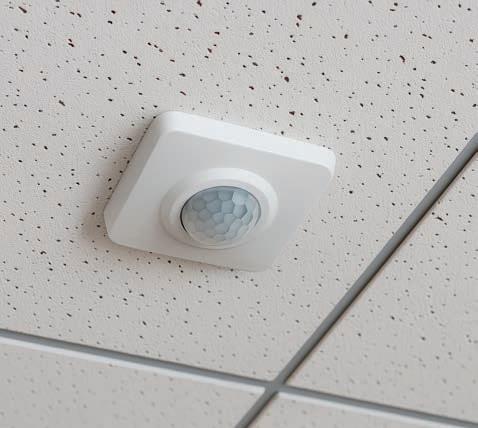
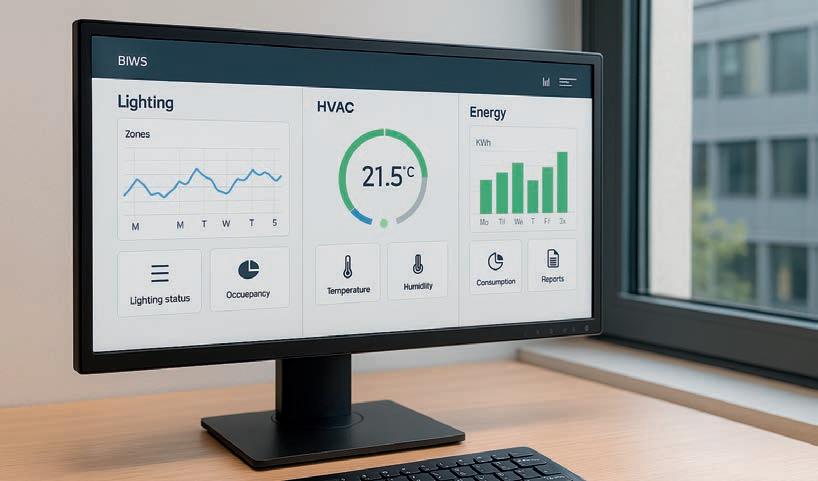
Modern lighting controls should be paired with flicker-free LED drivers and high-quality dimming mechanisms to ensure a comfortable visual experience. This is particularly important in environments like offices, schools and hospitals where people are exposed to artificial light for extended periods.
When properly implemented, lighting controls offer a fast return on investment. While the upfront cost of sensors, dimmers and controllers might be higher than a basic LED upgrade, the long-term savings in energy and maintenance often pay back within a few years.
Beyond financial savings, lighting controls contribute to sustainability goals. Lower energy consumption means fewer greenhouse gas emissions, helping organisations meet their carbon reduction targets. Additionally, longer lamp life reduces waste and replacement costs.
While the advantages of lighting controls are clear, implementation must be carefully planned:
• User education: Automated systems should be intuitive and be supported by user training, particularly in environments where users may want manual override.
• Compatibility: Ensure all components, from sensors to drivers, are compatible and certified for use together.
• Maintenance: Systems should be easy to maintain, with remote monitoring where possible to detect faults and optimise settings.
• Design integration: Controls should be part of the initial lighting design, not retrofitted as an afterthought. Integrating controls from the start ensures optimal placement and performance.
When properly implemented, lighting controls offer a fast return on investment
As technology advances, lighting control systems are becoming smarter, more integrated and connected. The rise of the Internet of Things (IoT) allows lighting to be part of a building’s management system (BMS).
Modern lighting controls integrate with HVAC systems, access controls and IoT platforms, forming part of a smart building ecosystem. This interconnectedness means building managers can monitor lighting performance in real time, adjust settings remotely, and diagnose issues without stepping onsite.
• Remote monitoring and analytics
• Adaptive learning from occupant behaviour
• Integration with HVAC and security systems
• App-based personal lighting control
Such systems not only enhance operational efficiency but also contribute to smart building certification schemes, such as BREEAM and WELL.
The way we illuminate our commercial spaces is rapidly evolving. Lighting is no longer just about visibility – it’s about efficiency, comfort and wellbeing. By combining energy-efficient LED lighting with intelligent lighting controls, businesses can realise massive energy savings, up to 75% on top of LED savings, while creating healthier and more productive environments.
From occupancy sensors to circadian lighting, and from daylight harvesting to flicker control, lighting controls represent a powerful opportunity for commercial premises to reduce waste, lower costs and enhance the quality of life for building occupants.
The future of lighting is not only bright – it’s smart, sustainable and human-centric.
Greenlight Connexions, greenlightconnexions.co.uk


Looking for a smart home system that's easy to install and won't break the bank?
LUXORliving is the most cost-effective fully integrated smart home solution on the market - controlling lighting and heating in a 3-bed house for as little as £2,500.
No training needed - install and commission quickly with the Free LUXORplug Windows software
Join our Buddy Installer Scheme for advanced training and project referrals.

Scan to learn more about LUXORliving for Professionals.




DALI Power supply
PS-DALI-LINK-FC Part no. 92846

DALI Multisensor
PD4N-DALI-LINK Part no. 93377
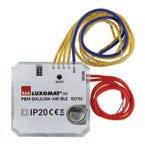
DALI push-button module
PBM-DALI-LINK-4W-BLE Part no. 92732
■ Addressable multi-master Lighting Control System
■ Supports DALI and DALI-2 luminaires
■ Ideal for retrofitting
■ Super flat multisensor available
■ Simple, intuitive operation
■ Free Bluetooth app with 2 functions:
- Scene control for end customer
- Commissioning tool for installers
Mike Collins, Managing Director of Ovia Lighting, looks at some of the essential lighting control technologies that can help provide energy-saving solutions for contractors.
Lighting control systems don’t necessarily have to be complex or expensive. They can be simple and effective, offering benefits like energy savings and convenience. Simple systems are often less expensive to install and maintain than complex, networked systems. Popular control technologies include PIR sensors, microwave sensors and photocells, and an explanation of how they work, their advantages and applications will help contractors choose the right system for the lighting projects they are working on.
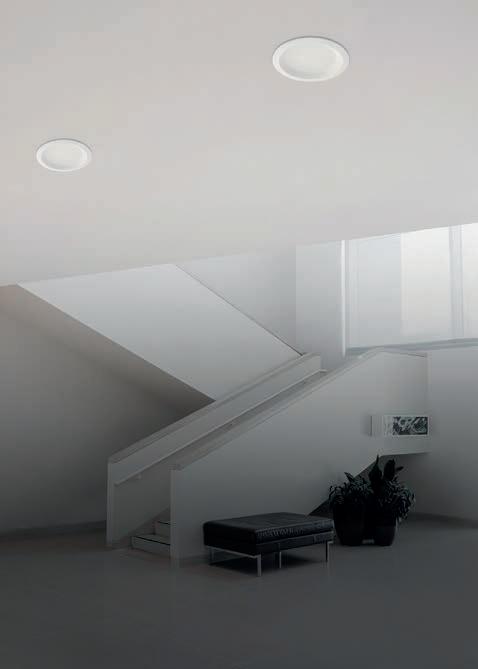
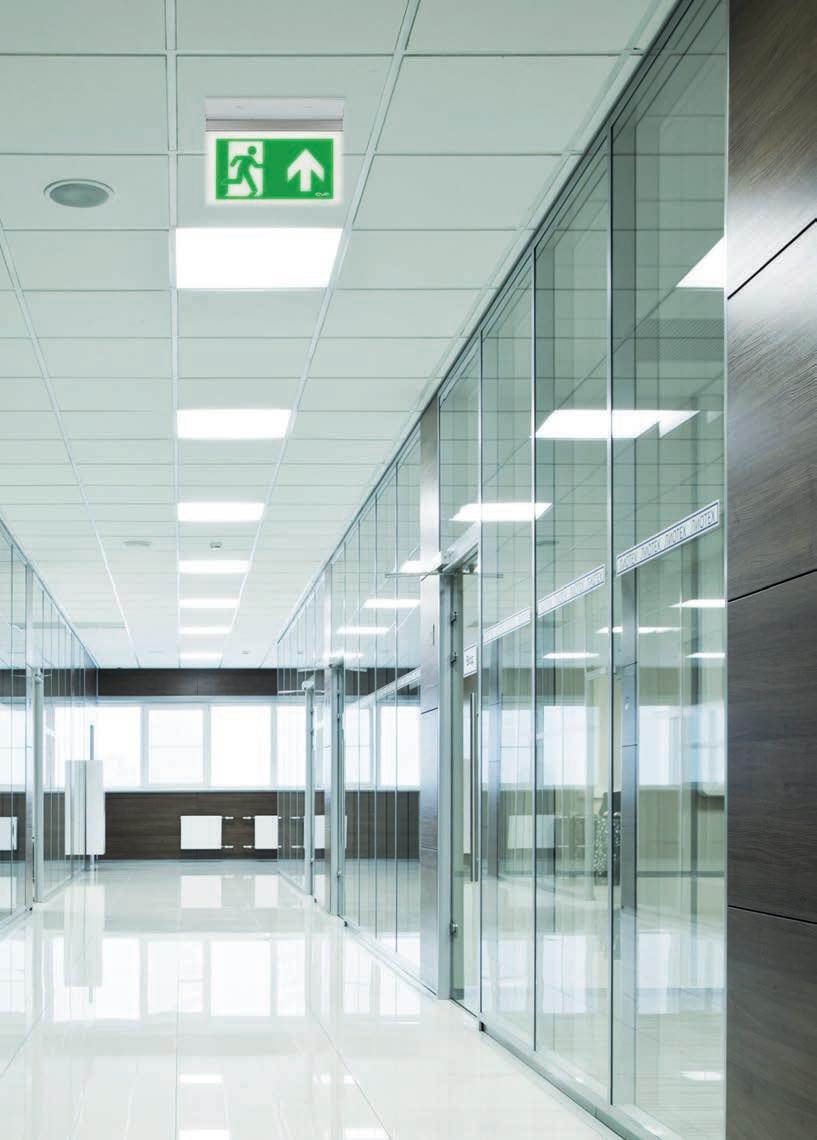
PIR sensors detect motion by sensing changes in infrared radiation caused by temperature shifts, such as a person entering a room. When motion is detected, the sensor activates the connected lights. After a preset time without further movement, the lights turn off automatically.
PIR sensors are passive, meaning they don’t emit any energy; instead, they passively detect infrared radiation. All objects, including humans, animals and even inanimate objects, emit infrared radiation as a result of their temperature.
A PIR sensor typically consists of a Fresnel lens to focus infrared radiation, a pyroelectric sensor to detect changes in infrared radiation, and an infrared filter to block out other light wavelengths. When a person or object moves within the sensor’s field of view, the infrared radiation pattern changes and the pyroelectric sensor detects

this change. This change in the infrared pattern triggers the PIR sensor, which then sends a signal to an attached device, such as a light or an alarm, to activate. PIR sensors detect a positive differential change as an object enters the detection area and a negative differential change as it leaves.
PIR sensors offer a number of advantages. They are energy-efficient –lights activate only when needed, reducing energy usage and helping to lower energy bills. They are convenient, as they eliminate the need for manual switches. They can offer customisable settings, with sensitivity and timing adjusted to suit specific needs.
PIR sensors are commonly used in lighting for security and energy-saving applications, particularly in areas with intermittent use, such as hallways, driveways, bathrooms and around entrances, such as front doors, porches and gardens.







Microwave sensors work by emitting low-power microwave signals (usually at 5.8GHz) and detecting reflections from nearby objects. They use the Doppler Effect to emit low-level microwave signals across a detection area. These signals reflect off objects and return to the sensor. Any changes in the echo pattern caused by movement trigger the lights to turn on. Unlike PIR sensors, microwave sensors can detect movement through thin walls or glass.
Microwave sensors offer a number of advantages. They operate effectively across all temperatures, unlike PIR sensors which may be affected by heat or cold. They can detect motion through non-metal materials, allowing hidden installations or integration into luminaires. They also offer energy savings as they can include advanced features like daylight harvesting, dimming options and RF communication to control multiple luminaires simultaneously. Their dust-proof and smoke-proof design ensures a longer lifespan compared to PIR sensors.
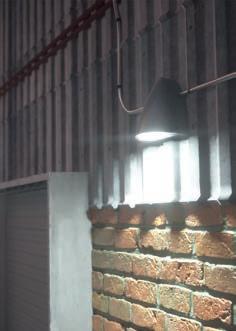
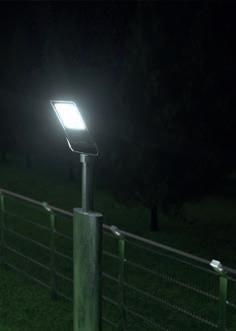
or garden lights and they can be integrated with smart systems for remote monitoring and control.
Photocells are widely used in outdoor lighting systems such as streetlights, car parks and gardens. They are also integrated into smart city infrastructure to optimise energy consumption based on real-time conditions.
PIR sensors, microwave sensors and photocells can each play a crucial role in lighting control. Each lighting control technology offers unique benefits tailored to specific environments. PIR sensors excel in residential spaces for convenience and security, microwave sensors provide robust solutions for commercial settings with advanced features, while photocells are ideal for outdoor applications focused on daylight optimisation. By integrating these technologies strategically, significant energy savings can be achieved while enhancing functionality and sustainability.
Ovia Lighting, oviauk.com
Microwave sensors are ideal for large commercial buildings, hybrid workspaces and areas requiring precise occupancy-based lighting control. They are also suitable for outdoor installations where environmental conditions might affect other sensor types.
Photocells measure ambient light levels using photoresistors or photodiodes. Lights automatically turn on when surrounding light falls below a preset threshold (e.g., at dusk) and switch off when sufficient daylight is present (e.g., at dawn). Energy efficiency is one of the advantages of photocell technology. By preventing the use of unnecessary lighting during daylight hours, energy savings of up to 40–84% can be achieved, depending on usage. Because they prolong lamp lifespans, they can offer cost savings through the reduction of electricity bills and maintenance costs. They provide hands-free operation for outdoor lighting systems like streetlights
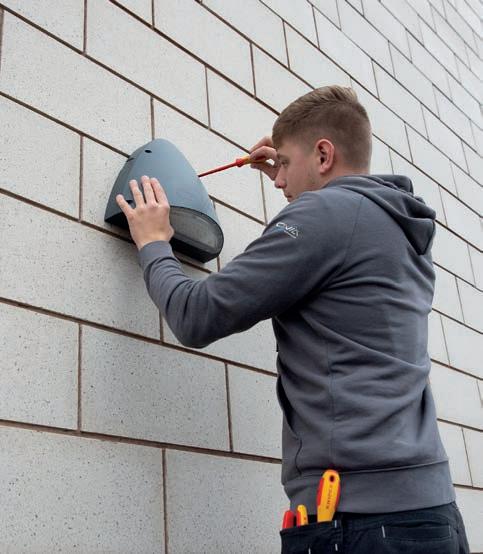


• Mental health support
• Bereavement counselling
• Legal advice
• Advocacy
• CV Support following redundancy and job loss
• Psychiatric assessments
• Will support
•Emergency financial assistance
Access Assistance:


Complete our online form
0800 652 1618
9am - 5pm Mon - Fri support@electricalcharity.org Email us anytime
www.electricalcharity.org


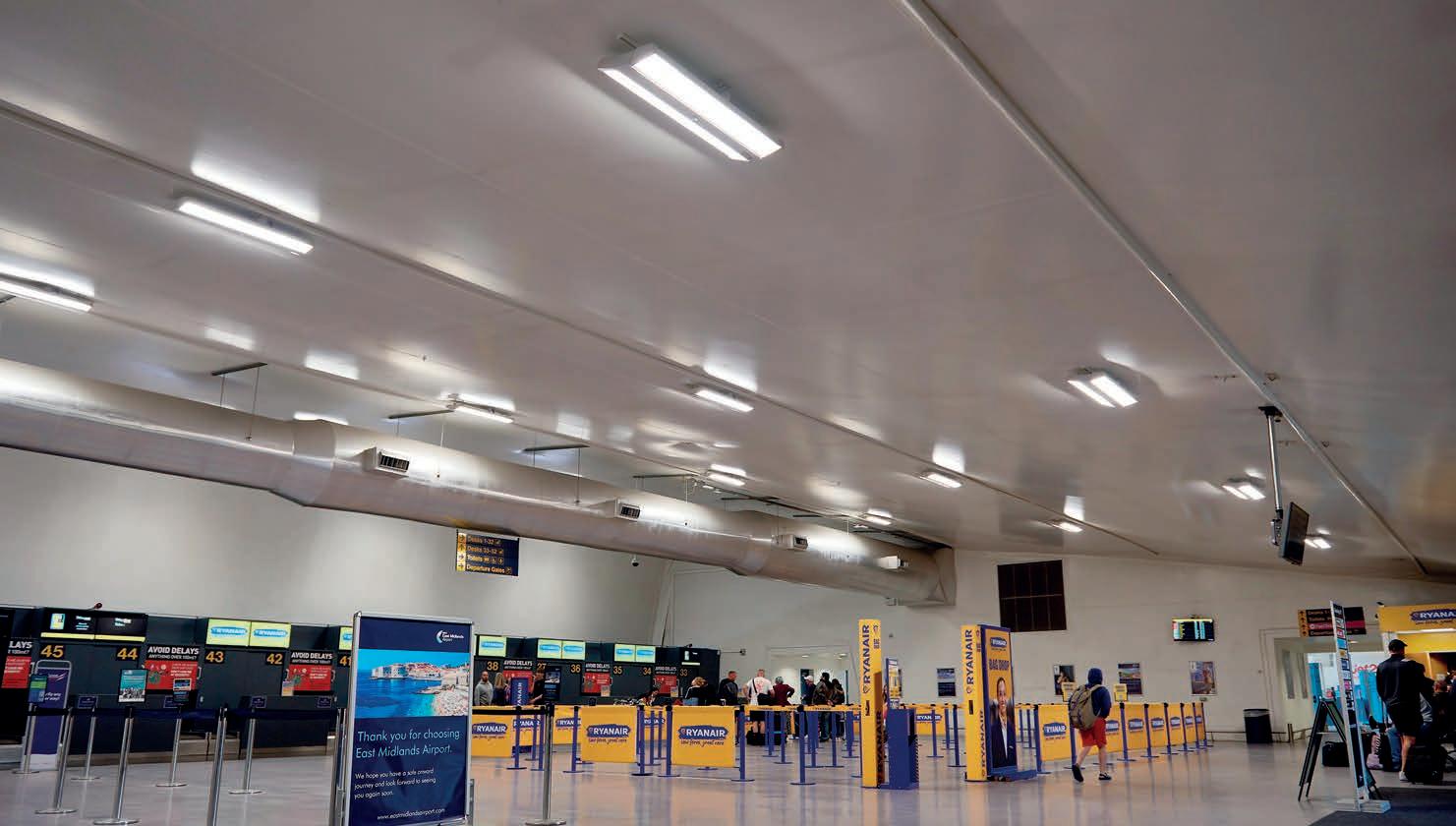
As part of East Midlands Airport’s five-year £120m investment programme for its 60th anniversary, Luceco worked with electrical contractor Fredk Lamb to re-light the extended area of the check-in hall with an energy-efficient, dimmable lighting solution.
The main outcome of the check-in hall for East Midlands Airport was to have energy-efficient lighting that also had the ability to be dimmed so that when the main access route wasn’t in use, it still looked welcoming.
Due to the structure of the hall roof being a canopy style, Luceco and Fredk Lamb decided to use Luceco’s Callisto
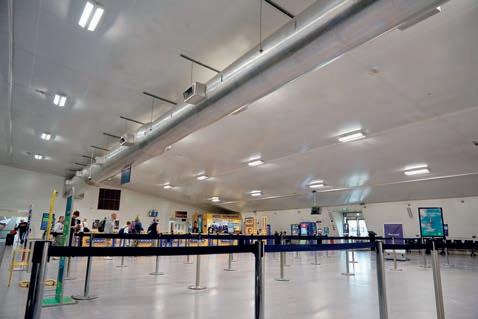
lighting with integrated Platform wireless controls and PIRs. This allowed the fittings to be grouped into different sections for the controls, such as the commissioned corridor function that enables the lights near the entrance doors to dim to a lower level than the rest of the hall.
This also meant the original cabling could be used for a point-to-point replacement whilst still offering full dimming and control functions.
Callisto is a stylish linear LED surface-mounted luminaire, perfect for open areas with its wide area lens distribution. Its IK10 rating makes it robust, while its efficacy of 135Llm/cW and 100,000 hours lifespan ensure it is efficient and effective. Suitable for trunking, surface or suspension mounting, Callisto can also come with Self-Test and DALI Addressable Emergency packs that provide three hours’ worth of back-up power.
Luceco Platform Wireless Lighting Controls transform existing lighting installations and create a simple and efficient wireless communication system. The system provides various lighting controls including dimming, scene-setting, presence and daylight control, all helping to reduce energy

consumption and operating costs while creating a comfortable lit environment. Platform is designed as a retrofit solution to update spaces to the latest state of digitalisation, renovating old, traditional lighting systems quickly, cost-efficiently and easily.
Chris Marshall, Inspection, Testing & Small Works Manager at Fredk Lamb, says, “When deciding on a supplier for this project, we knew Luceco would be able to deliver the results the client wanted. Being able to install new lighting with existing cabling meant we were able to complete the project with minimal disruption to travellers at the airport, and the client was very happy with the result.”
Leigh Davey, Luceco Project Manager, says, “It’s been a great experience working with Fredk Lamb on this project at East Midlands Airport. Luceco’s strategy is to grow, innovate and sustain, and transforming the lights in the check-in hall to something that is energy-efficient, effective and customisable, and will be that way for years to come, is a great decision from the airport as they upgrade their services to celebrate their 60th anniversary.”
Luceco, luceco.com

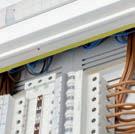
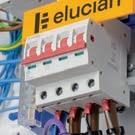

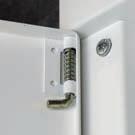
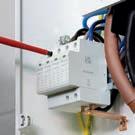
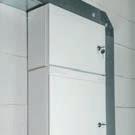
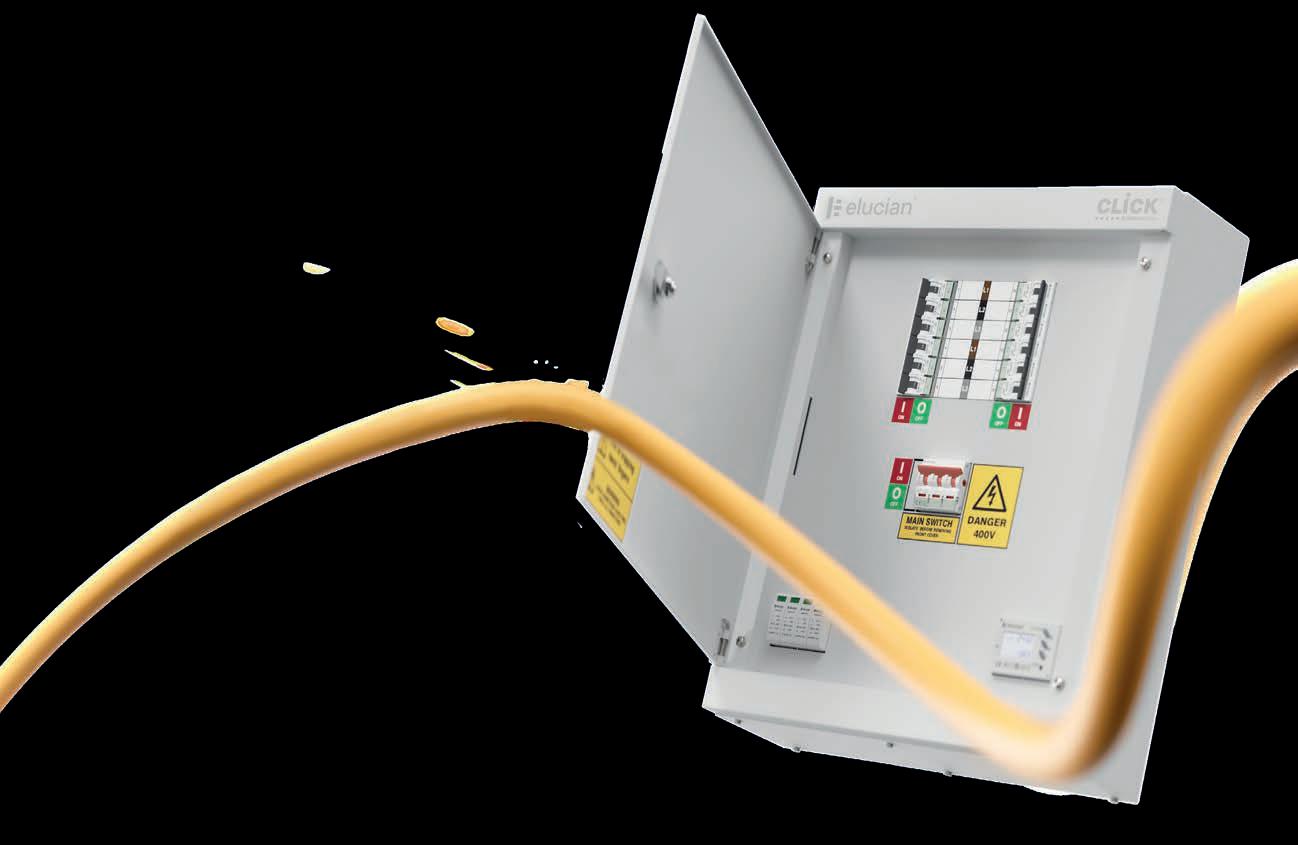



Following its hugely successful foray into the consumer unit market in 2021 with its comprehensive Elucian range, Click Scolmore is ready to further revolutionise electrical installations with the launch of its new Elucian three phase Distribution Board collection.
Scolmore has invested significantly to evolve its Elucian offer and bring to market an extensive range of three phase metal distribution boards, protective devices and accessories. Developed with the installer as the focus, and sold exclusively through the professional electrical wholesaler channel, the new Elucian three phase range has been designed to deliver reliable performance, safety and flexibility for commercial and industrial installations. The comprehensive range will ensure compliance with the latest industry standards.
Three phase distribution boards are designed to be widely used across various sectors due to their ability to efficiently handle larger loads. Typical applications might include industrial settings, commercial buildings, data centres and retail spaces.
• 4 and 6-way boards: Developed specifically to only work with a 125A incomer, ensuring optimal performance and compatibility for safe and efficient power distribution. They are supplied with gear tray and busbars pre-installed.
• 8, 12, 16, 20, and 24-way boards: These offer versatile configurations, allowing the installer to choose between any Elucian RCCB, 125A Isolator or 250A Isolator.
• Device alignment: The boards will maintain device alignment when fully installed, ensuring a neat and organised appearance.
• Quick release doors: These are fitted with spring clips, making them quick and easy to remove. The doors can be re-fitted on the opposite side, providing ultimate flexibility.
• SPD installation: SPD for the 4 and 6-way boards can be installed on additional phase connectors. On 8-way and larger boards, it can be integrated into the main switch or busbar.
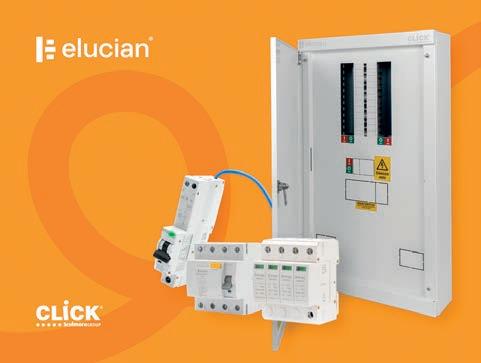
• Mains isolator switches – 3 and 4 pole 125A and 250A.
• Residual Current Circuit Breaker (RCCB) – Type A and B.
• Surge Protection Device (SPD) – Type 1 and 2 and Type 2.
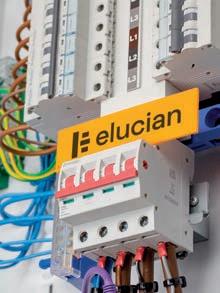
Elucian’s distribution boards are meticulously designed and engineered to deliver consistent, high-performance results, making them a trusted choice for professionals. Each board undergoes rigorous testing to meet and exceed BS EN 61439-3 standards, ensuring compliance with safety, durability and functionality requirements. This thorough process guarantees that the products will provide dependable, long-lasting solutions for even the most demanding electrical installations, whilst offering peace of mind to installers and ensuring compliance with BS 7671.
The full Elucian three phase range consists of distribution boards, extension boards, circuit protective devices, energy meters and accessories.
The range comprises a total of seven distribution boards – 4, 6, 8, 12,16, 20 and 24 Way. Designed with a modern finish, they boast a number of key features:
Other features include:
• Ventilation slots
• Trunking entry
• Stacked boards
• Double stacked terminals
• Cable tie mounts
• Space for cables
• Internal earth nut
• Additional connection to phases
The circuit protection devices range is designed to complement and populate the three phase distribution boards and extension boxes. The evolution of the Elucian range to move into three phase calls for larger sized devices (3 pole and 4 pole), higher rated/breaking capacity devices (10kA) and D Curve devices. These devices are ideal for safeguarding complex electrical systems while ensuring seamless operation and compliance. The range comprises:
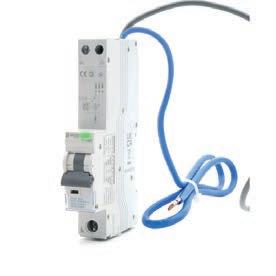
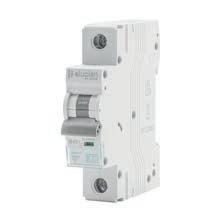
• Arc Fault Detection Device (AFDD) –available in B and C curves (AFDD + MCB in B Curve only).
• Miniature Circuit Breaker (MCB) – 1 and 3 pole B, C and D Curve (6A to 63A).
• Residual Current Circuit Breaker with Overcurrent Protection (RCBO) –available in B and C Curve.
• Three Phase Multi-Function Energy Meter Kit – designed for seamless integration into all the distribution boards. Supplied as a complete kit.
• Blanks – single and 3-way Din Rail Blank Module with 125A and 250A Adaptors.
A range of essential accessories is also available. These include three phase to single phase converter, 125A and 250A busbar caps, three phase isolator locking kit, three phase RCD link kit, RJ45 cable (1500mm), gland plates and blank plates. Elucian, elucianuk.com
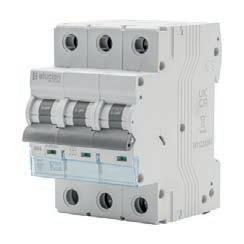
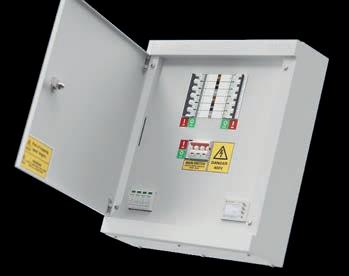


Creator of the world’s first single component fire rated clip, LINIAN has now unveiled its most recent innovation for cable tray installations – the LINIAN Cable Tray Clip.
• 90% faster installation. Forget about stainless steel cables ties and the ratcheting tool, using LINIAN Cable Tray Clips you can drastically reduce time spent on installations.
• Incredibly easy to install – it simply locks in by hand.
• With sizes ranging from 50mm (light) to 225mm (medium and heavy duty) it can be used with any brand of trays.
• Non-corrosive and weather resistant.
• Manufactured in the UK.
This product is a game changer in cable tray installs and will deliver massive benefits on resource, time and cost savings, especially for large electrical and M&E contractors who lay hundreds of metres of trays.
The LINIAN Cable Tray Clip is fully compliant with the 18th Edition Wiring Regulations (BS 7671:2018), meaning it’s fire-rated and designed to prevent premature cable collapse during a fire.
Like all LINIAN products, the new Cable Tray Clip uses recyclable packaging and ethically sourced materials. Manufactured in Britain, it keeps the supply chain short, reducing the carbon footprint. Additionally, by replacing traditional stainless steel cable ties with a reusable clip, installers can significantly reduce waste on-site. It’s a win-win for the environment and the installer.
• Railways
• Data centres and telecoms
• Industrial and commercial fittings
• Lighting
• Fire and security systems
No matter the season, whether it’s scorching hot, freezing cold, or you simply need better ventilation, Airmaster has you covered. As we head into the hot summer months, Airmaster offers a comprehensive range of cooling fans to keep people comfortable.
SPONSORED STORIES FROM THE INDUSTRY
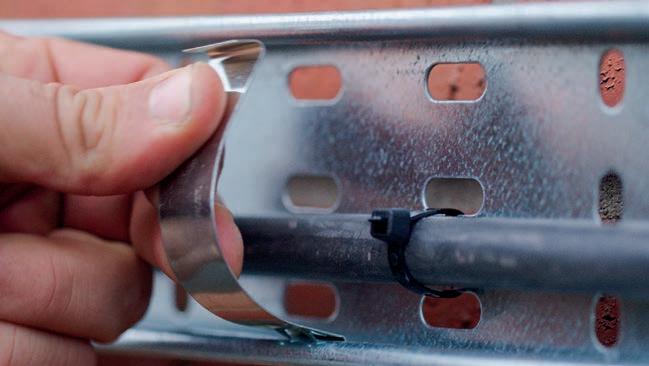
• General power applications
• Industrial power applications
• Building management systems
• Fibre cable installations
• Substations
• All general cable tray applications
The first production run is fully available through CEF and through the LINIAN wholesalers’ network. Ask your local branch
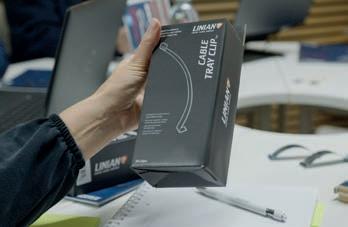
or make an enquiry via the friendly LINIAN Sales Team at orders@linianclip.co.uk or +44 (0)141 465 4858.
LINIAN, linianclip.co.uk


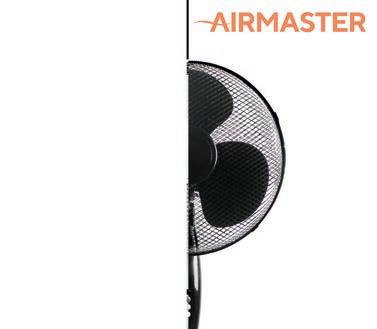

Desk fans from 6in up to 16in and with two or three speeds, along with table/ wall fans up to 16in and with three speed settings, are the core of the range. Pedestal and tower fans come next –the former now having both a remote control and an all black version, as well as the standard white finish featured across all cooling products.
Completing the range are elegant chrome-finished antique styles, including a 16in pedestal fan, a 16in desk fan and an 18in high-velocity floor-standing fan. Finally, an optional method for air cooling and now firmly established in the Airmaster Cooling portfolio is a wide selection of Portable 9000 and 12000 BTU Aircon units, some with Wi-Fi and remote controls and the most recent addition – a 9000 BTU unit operating at a low noise level of just 45dB.
CED Electrical, cedelectrical.co.uk
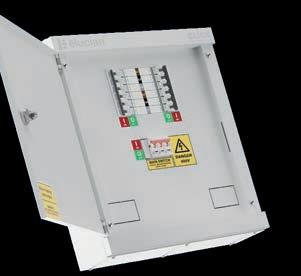

Click Scolmore has announced the addition of a striking Matt Black finish to the Metal Clad Pro range.
Joining the existing ‘Polar White’ and ‘Metal Clad Grey’ finishes, the new ‘Matt Black’ variant combines durability with modern aesthetics. The entire range features a contemporary curved profile with matching surface boxes for a clean, precise fit. The full range comprises switches, socket outlets, modular plates, fused connection units, as well as surface and blank boxes.
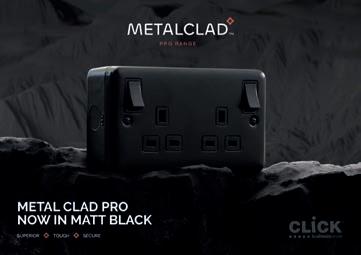
The Matt Black Metal Clad Pro builds on the range’s reputation for robustness and versatility, providing installers and designers with a contemporary finish that complements modern styles. The modular construction also allows for easy modifications and custom switching solutions, ensuring total flexibility on-site.
Features include:
• Contemporary curved profile with matching back box profile
• LED indicator located on the rocker switch
• Ingot-style socket pins
• New insert shapes for all FCUs and 20A switches
• Three-pin safety shutters
• Customisable configurations
Click Scolmore, scolmore.com


The Radiator Company has launched the new Piano Tempo. This electric side-loading towel rail is colour customisable and has a range of size options.
Towel rails are also ideal for kitchens, cloakrooms and boot rooms due to their versatility. The Piano Tempo Electric is mains-powered, providing more flexibility to keep towels warm all year-round or heat draughty rooms without having to switch on the central heating system.
The Piano Tempo is designed with equally spaced steel flat tubes and equally spaced cross-tubes. Available in three heights: 1189mm, 1529mm and 1784mm and two widths: 500mm and 600mm, as well as the option for either left or right-handed configuration, the Piano Tempo suits a wide range of room sizes, and especially where space is at a premium. With this, the heated towel rail enables designers to balance aesthetics and functionality, comfort and convenience.
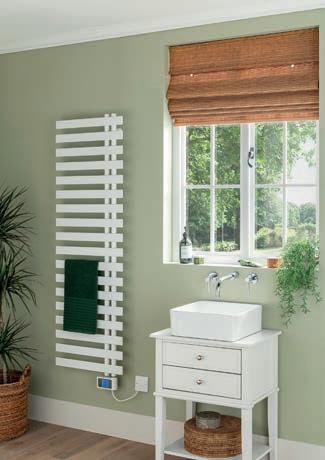
Helping to ensure the right aesthetic can be created, there are 188 RAL colours to choose from, with White RAL 9016 as standard. In addition, there are 31 special finishes, including a variety of metallic effects.
The Radiator Company, theradiatorcompany.co.uk
Engineered for industrial environments such as warehouses and factories with high ceilings, the LED Tempus Extra Bulkhead ensures emergency illumination for up to three hours, delivering 800 lumens to high-risk areas where enhanced lux levels are essential.
Due to its innovative interchangeable optics, the spacing between units can be increased, reducing the number of wiring points, leading to substantial time savings for installers.
The LED Tempus Extra Bulkhead is self-test as standard, ensuring consistent performance and reliability. Its slim, IP65-rated polycarbonate housing guarantees durability and protection, making it ideal for industrial settings where robust construction is essential.
By optimising spacing and reducing installation complexities, the LED Tempus Extra Bulkhead (Part Code: LEMHBHNM3-03) is set to redefine emergency lighting solutions. Whether retrofitting an existing space or integrating into new commercial builds, this product provides a smarter, more efficient way to meet emergency lighting requirements.
Luceco Lighting is part of the Luceco Group of companies. Luceco, luceco.com
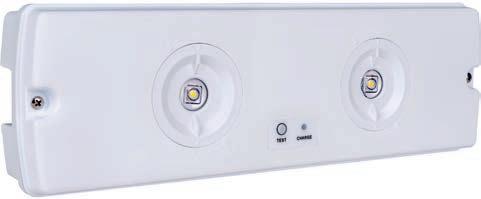
Click Scolmore has added a new IP65, 5-way garage board to its growing Elucian consumer unit range.
The new garage board offers a robust solution for both internal and external areas where electrical systems are exposed to the elements. It is engineered to provide dependable power in areas where weatherproofing is essential.
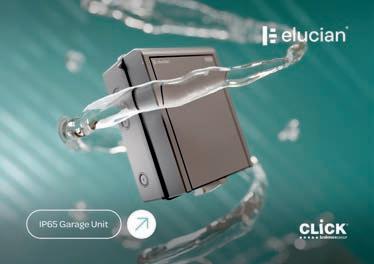
Constructed from high-quality die-cast aluminium, the garage board guarantees superior strength, corrosion resistance and long-lasting durability for any installation. Its advanced design ensures the IP65 rating is upheld, with a gasket around both the front cover and main body, plus an additional seal around the devices that compresses when the lid is shut for added protection. Additionally, the unit is designed to accommodate a security wire, preventing access to the internals even if unlocked.
For ultimate flexibility in installation, the unit includes optional 20mm gland knockouts for easy cable entry. For larger cable entries such as M25 and M32, a hole saw can be used to create a custom fit using the guide grooves.
Elucian, elucianuk.com
The Powersaver Dual Flexi 2 from Sangamo is an electronic immersion controller with programmable operation that is suitable for Single, Twin and Dual element immersion heaters. It bridges the gap between the bulky, aged electro-mechanical immersion controllers and the more complicated digital versions.
A table of pre-selectable adjustable programs is offered – covering all of the low rate electricity tariffs, including Economy 7, Economy 10 and Eco 20:20 times.
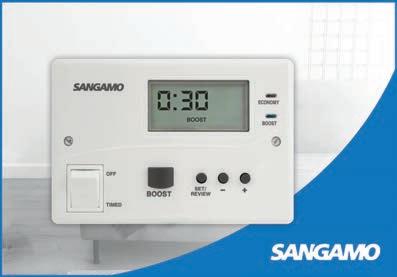
Turn the Installer Switch to the program of choice (refer to Installation and User Instructions). Adjustment is possible to the preset times, enabling the program periods to be reduced or cancelled as required. The review button allows on/off times to be checked and there is automatic GMT/BST changeover.
There is a half-hour, one-hour and two-hour boost function with a digital display countdown clock, allowing the user to clearly see boost times. There is also a programmable boost function for further end user convenience; this program is deliberately limited to a maximum of two hours, meaning expensive electricity is not being wasted during peak times.
ESP, espuk.com






Unicrimp continues to expand its Q-Crimp cable management accessories range and has just added new self-adhesive clips to its extensive cable clips category.

A valuable addition to any professional electrician’s tool bag, the new self-adhesive clips are easy to attach, while providing a strong, resistant hold thanks to the 3M adhesive backing. They are ideal for use on metal surfaces, engineering bricks, plastics, and any flat, clean surface. They eliminate the need for drilling or nailing, thus saving valuable time on site, and their use minimises dust, sparks, vibrations and noise for a safer and more efficient working environment.
The perfect solution for situations where drilling holes on surfaces is not an option, they will adhere to a wide range of clean flat surfaces, including steel, UPVC, aluminium, glass, RSJs, racking and single-skin structures.
Installation is quick and easy – simply peel off the sticker and apply to the required area.
The new self-adhesive clips are available in two sizes:
• 19.4mm x 10mm x 15mm leg length
• 25mm x 15mm x 25mm leg length Unicrimp, unicrimp.com
Makita has launched an innovative new battery for its 40VMax XGT range of high-performance tools. The 4.0Ah BL4040F battery is the first Makita battery to include cutting-edge tabless technology, which allows more efficient power delivery, better runtimes and cooler running.
The tabless lithium-ion cells in the new BL4040F eliminate the bottleneck caused by current concentration by connecting the entire end of the electrode to the end of the cell, instead of connecting to tabs at each end.
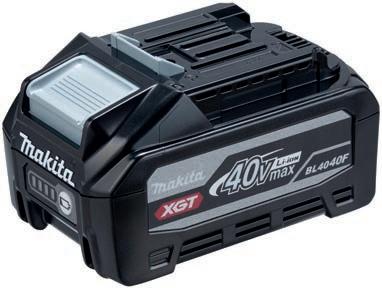
With a larger connection area inside the cell, heat generation is minimised. This means that even under high load, the cell temperature is reduced compared to standard designs, which has a positive effect on the overall service life of the battery.
A further benefit is that the battery can be charged immediately after intense use, with no need for a cooling phase, meaning shorter overall charging times. The tabless 4.0Ah BL4040F battery delivers up to 36% longer runtimes and operates 32% cooler compared to the standard 4.0Ah BL4040. Makita, makitauk.com


Thorn Lighting is bringing a dose of excitement to spring with the launch of its latest installer promotion: Spin to Win with THORNeco.
Running until the end of June 2025, the promotion gives installers the chance to win one of over 700 instant prizes –simply by purchasing THORNeco products in-store.
Installers who spend £/€150 or more (excluding VAT) on THORNeco products at participating wholesalers will be eligible for one spin of the online prize wheel. Every additional £/€150 spent –up to a total of £/€750 – earns another spin (maximum five spins per invoice). From coffee vouchers to AirPods to PlayStations, there is plenty up for grabs.

To take part, installers simply scan the QR code found on promotional leaflets available in-store at their local wholesaler. This takes them to a dedicated landing page, https://www.my-rewardshub.com/thorn/spin2win, where they can upload their invoice and instantly spin to win.
The promotion is open to all UK and Irish installers purchasing in-store from any wholesaler stocking THORNeco products. Prizes are available while stocks last.
Thorn Lighting, thornlighting.com
Ovia’s latest product development is the utility range of linear, non-corrosive LED luminaires, with the launch of a new and improved Inceptor U-Lite range now offering enhanced performance and easier installation.
The upgraded Inceptor U-Lite boasts increased efficacy – now reaching an impressive 160Lm/W, up from the previous 120Lm/W. Ovia has also introduced modular design options to the range with microwave sensors and emergency packs available.
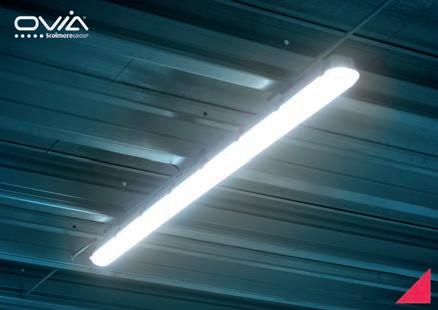
The modular design enhances product sustainability, allowing the microwave sensors and optional self-test emergency packs to be retrofitted to make the luminaire more energy efficient. The packs can be easily installed without the need for tools. Clear markings on the gear tray guide installation, with easy wiring via colour-coded connectors.
The new design offers versatile mounting options. The fitting is Besa mountable and features two different sized suspension brackets that seamlessly accommodate a Besa mount setup. The larger suspension bracket provides enhanced ease and flexibility. With a Molex connector, movable terminal connectors and a detachable gear tray, installation of Ovia’s upgraded luminaires has never been so easy. Ovia, oviakuk.com



